Topic outline
UNIT 1: THE NATURE OF BUSINESSES TRANSACTION TO ACCOUNTING SYSTEM
Key unit competence: Explain the nature of organization businesses transaction in relation to its accounting system.
Introductory activity
1. Analyse the picture below and answer the questions that follow:
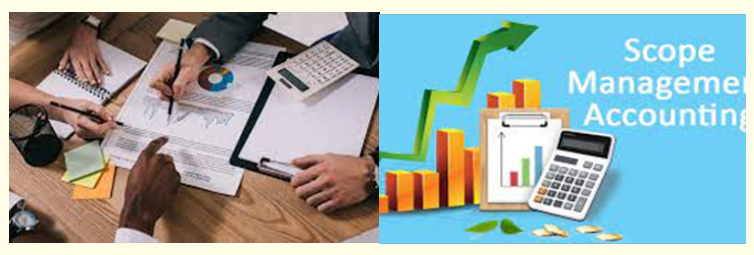
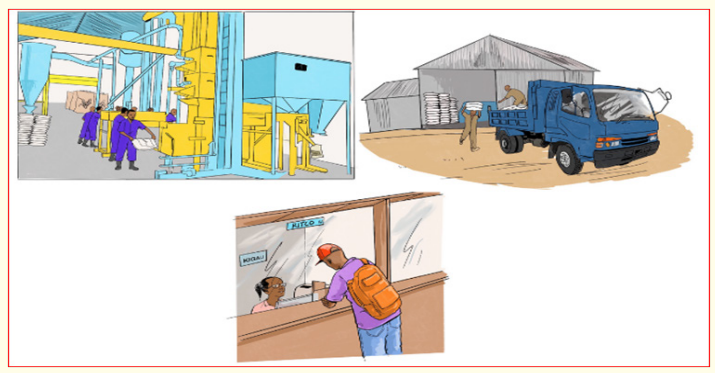
i) Identify the different activities shown on above picture.
ii) Which kind of agents intervening in the specified activities?
iii) Are all agents having the same intention?
iv) Which accounting sciences involved in the above activities?
v) Refer to the knowledge acquired from Entrepreneurship subject (Initial accounting entries for a business in senior 2 ordinary level).
Explain why is necessary to record the accounting information.
1.1 Definition of concepts
Activity 1.1
NYIRABYATSI PLC is profit oriented business, producing many products for sales in Rwanda. The products produced in that enterprise are juice, biscuits, yoghourt, water, all of which were experiencing sharp decreases in sales, and loss to the whole business.
In 2021 there was an economic crisis caused by Covid-19, General Manager announced a plan to cut off FRW 15million in cost and raise FRW 5 million through the sales of business assets; (motor vehicles, trucks and pickup).” We’re cutting to the bone”, said by General Manager. However, given the situation, we think that’s appropriate. It was appropriate, but it wasn’t enough. By November 2021, “NYIRABYATSI PLC had lost more than FRW 18 million” said General Manager. From this economic hazardous situation, the government loaned the NYIRABYATSI PLC FRW 20million to continue operations. Ultimately, its restructuring effort fell short and finally NYIRABYATSI PLC felt into bankruptcy. In court papers, NYIRABYATSI PLC claimed FRW 82 million in asset and FRW 172million in debt. As the story of NYIRABYATSI PLC illustrated, managers must understand costing in order to interpret and act on accounting information and generate a report containing a variety of cost concepts and terms. Managers must understand these concepts and terms to effectively use the information provided for running their businesses. Those cost and management concepts/terms that are the basis of accounting information used for internal and external reporting.
1. According to the story of NYIRABYATSI PLC explain the problems faced up to bankruptcy.
2. Name the accounting terms used in NYIRABYATSI PLC story.
1.1.1 Accounting
It is the art and science of recording and classifying financial transactions in the books, summarizing and communicating financial information’s through production of financial statements/reports and interpretations of operating results portrayed in financial statements/reports to facilitate decision making.
1.1.2 Management
It is a comprehensive function of planning, organizing, forecasting coordinating, leading, controlling, motivating the efforts of others to achieve specific objectives.
1.1.3 Costing
It is any system for assigning cost to an element of a business. Costing is typically used to develop costs structure for customer’s satisfaction, distribution channels, employees and entire companies.
Or Costing means the ascertainment of costs to the produced commodity or provided service.
1.1.4 Management accounting
Management accounting is the practice of identifying, measuring, analysing, interpreting, and communicating financial information to managers for the pursuit of an organization's goals. It varies from financial accounting because the intended purpose of management accounting is to assist internal users to the company in making well-informed business decisions.
1.1.5 Cost accounting
It is accounting branch that measures, analyses, and reports financial and nonfinancial information relating to the costs of acquiring or using resources in an organization.
1.1.6 Financial accounting
It is accounting branch concerning with the recording of accounting data, classifying, summarising the recorded data and communicating the results to interested parties/accounting information users.
1.1.7 Cost
It is the value of economic resources used as a result of the production of any commodity or performing any services. Or, Cost is resource value used for future benefits.
1.1.8 Expense
It is cost expired. Or Expense is resources given up that have no future potential benefits.
1.1.9 Cost centre
Cost Centre is a particular department, a function or items of equipment in respect of which cost may be ascertained and related to cost units for control purposes.
Cost centres are collecting places for costs before they are further analysed. Costs are further analysed into cost units once they have been traced to cost centres.
1.1.10 Income
It is a gain or recurrent benefit derived from capital use, or labour force sacrificed. It is usually measured in monetary terms.
Application activity 1.1
1. What is the meaning of management accounting?
2. Define the following concepts:
• Costing
• Business
• Cost center
3. What is the difference between cost and expense?
1.2 Types of business
Activity 1.2
The Rwandan economy relies on different sectors including agricultural, services, livestock, tourism, and industries/companies operations. Agribusiness becomes the cornerstone of national production and industries activities take the second rank from which manufacturing companies accounted for 11.5% of GDP. The examples of manufacturing companies in Rwanda are Rwanda Foam, Sulfo Rwanda Industries Ltd, etc.
Other companies are services like MTN, AIRTEL, RITCO, HOSPITALS, HOTELS, etc, and other companies purchase the goods and resell to the customers. Those businesses can operate either in private and public frameworks that facilitate the management of their companies to achieve the goals.
1. From the above outline 3 sectors of the Rwandan economy.
2. From the above give the types of business discussed in the above story.
1.2.0 Introduction
Business is a legally recognized organization or enterprise that operates with the objectives of profit maximization. Or It is also defined as an economic activity which involves regular production or exchange of goods and services with the main purpose of earning profits through the satisfaction of human wants. A business can be set up in a variety of different ways depending upon its nature, size and organization structure.
1.2.1 Types of business according to ownership
a. Sole trade
Is a business owned by a single person. Usually he/she provides all the capital and run the business. A sole trader owns and runs a business on their own, perhaps employing one or two assistants and controlling their work. The individual's business and personal affairs are, for legal and tax purposes, identical.
Examples include local grocery shops, carpentry shops, pharmaceutical shops, etc.
The simplest type of business is that of a sole trader. A sole trader is someone who trades under their own name. Many businesses are sole traders, from small subsistence farmers through to accountants. Being a sole trader does not mean that the owner is the only person working in the business. Some sole traders are the only person in the business, but many will also employ several other staff. Even so, in most cases the owner will oversee most business functions, such as buying and selling the goods or services, doing the bookkeeping, and producing accounts. In some instances, however, the sole trader will employ an external bookkeeper, who may also be a sole trader, to update the accounting records regularly.
The owner of the business is the one who contributes the capital to the business, although it might also have loans, either commercial or from friends. The owner is also the only party to benefit from the profits of the business and this will normally be done by the owner taking money or goods out of the business, known as drawings.
b. Partnership
A partnership is a business owned by two or more people. In most forms of partnerships, each partner has unlimited liability for the debts incurred by the business. The three most prevalent types of for-profit partnerships are: general partnerships, limited partnerships, and limited liability partnerships.
Partnerships are arrangements between individuals to carry on business in common with a view to profit. A partnership, however, involves obligations to others, and so a partnership is usually governed by a partnership agreement. Unless it is a limited liability partnership (LLP), partners will be fully liable for debts and liabilities, for example if the partnership is sued.
A partnership is a group of individuals who are trading together with the intention of making a profit. Partnerships are often created as a sole trader's business expands and more capital and expertise are needed within the business. Typical partnerships are those of accountants, solicitors and dentists and usually comprise between about 2 and 20 partners. As partnerships tend to be larger than sole traders, there will usually be more employees and a greater likelihood of a bookkeeper being employed to maintain the accounting records.
Each of the partners will contribute capital to the business and will normally take part in the business activities. The profits of the business will be shared between the partners, and this is normally done by setting up a partnership agreement where the financial rights of each partner are set out. Just as with sole traders, the partners will withdraw part of the profits that are due to them in the form of drawings from the business although, in some cases, partners may also be paid a salary by the business.
c. Corporation
The owners of a corporation have limited liability and the business has a separate legal personality from its owners. Corporations can be either government-owned or privately owned. They can organize either for profit or as nonprofit organizations. A privately owned, for-profit corporation is owned by its shareholders, who elect a board of directors to direct the corporation and hire its managerial staff. A privately owned, for-profit corporation can be either privately held by a small group of individuals, or publicly held, with publicly traded shares listed on a stock exchange.
d. Cooperative
A cooperative is a private business owned and operated by the same people that use its products and or services. The purpose of a cooperative is to fulfil the needs of the people running it. The profits are distributed among the people working within the cooperative, also known as user-owners.
There is typically an elected board that runs the cooperative, and members can buy shares to be apart of decision-making processes.
1.2.2 Types of business according to share
a. Limited Liability Companies (LLC),
The main difference between the trading of a sole trader and a partnership on the one hand and a limited company on the other is the concept of limited liability. If the business of a sole trader or a partnership runs out of money and is declared bankrupt, then the sole trader or partners are personally liable for any outstanding debts of the business. However, the shareholders of a company have limited liability which means that once they have fully paid for their shares they cannot be called upon for any more money if the company runs out and is declared insolvent. All that they will lose is the amount that they have paid for their shares.
b. A company limited by guarantee
This is a company used primarily for non-profit organizations and having the liability of its members limited to the amount as the members may agree.
c. A company limited by shares
This is a company in which the liability of its shareholders is limited to the amount paid or unpaid on the shares held by them.
d. A company limited by shares and by guarantee
This is a company in which liabilities of the shareholders are limited to paid or unpaid amount on their shares, there may also limited by guarantee, where liabilities of members are limited to the amount that the members undertake to contribute to the assets of the company in case of winding up.
e. An unlimited company
This is a company for which the legal liability of its members or shareholders is not limited, where all members or shareholders have total and joint liability to cover all contingent debts.
1.2.3 Types of business according to function
a. Manufacturing company
It refers to a kind of business that buys raw materials for transformation into finished goods.
A manufacturing business buys products with the intention of using them as material in making a new product. Thus, there is a transformation of the products purchased. A manufacturing business combines raw materials, labor, and factory overhead for production process.
Example: CIMERWA,SULFO RWANDA INDUSTIES Ltd, BRALIRWA,SKOL,etc.
b. Services company
A services company is a business that provides intangible products (products with no physical form). It is a company that provides service to the customer.
Examples:
1. Transport (RITCO, VIRUNGA, HORIZON, VOLCANO, STELLA, MATUNDA, CAPITAL)
2. Communication (MTN, AIRTEL)
3. Hotel ( FATIMA, EPIC, SERENA, FAUCON, IBIS, MARRIOTT)
4. Health(CHUB, CHUK, LEGACY CLINICS, KING FAYSAL ) etc ….
c. Merchandazing/ Retail company
This is a type of business that buys products at wholesale price and resells the same products (without changing its form) at retail price. They are known as buy and sell businesses. They make a profit by selling the products at higher prices than purchase costs.
Application activity 1.2
1. With reference to services companies:
a) What is meant by a services company?
b) State 3 examples of services companies operating in Rwanda.
2. Describe, with supporting examples, two types of businesses according to their ownership.
3. What is the main different between a sole trader and a partnership on one side and a limited liability on the other side?
1.3 Transaction
Activity 1.3
Analyze the picture below and answer the question that follows:

1. List different activities being carried from the above pictures.
1.3.1 Understanding a transaction
A transaction is a completed agreement between a buyer and a seller to exchange goods, services, or financial assets in return for money.
An example is a sales transaction between a buyer and a seller. Person A pays person B in exchange for a product or service. When they agree on the terms, money is exchanged for the good or service and the transaction is complete.
1.3.2 Types of Transaction
a. Cash transaction
Cash transactions occur where payment is made or received immediately. A cash transaction is not limited to payments and receipts made in notes and coins, as they are also made by cheque, debit card or automated payment. The important factor is the timing of the payment.
b. Credit transaction
Credit transactions, by contrast, are transactions in which the goods or services are given or received now but it is agreed that payment is to be made or received at a future date. This will normally involve the issue or receipt of an invoice and the creation of a trade receivable (the person who owes the business money ie the credit customer) or a trade payable (the person to whom the business owes money ie the credit supplier).
c. Capital transaction
Capital transactions are the purchase and sale of items that are to be used in the business for a considerable period rather than being purchased for immediate use or resale. This might include the purchase of buildings, machinery, office furniture or motor vehicles. These non-current assets of the business can be purchased either for cash or more usually on credit. Capital transactions should not be confused with the initial capital that the owners of a business pay into the business.
Non-current assets usually have economic benefits over a number of accounting periods. Because of this, it would be inappropriate to charge any single period (eg the period in which the asset was acquired) with the whole of the expenditure. Instead, some method must be found of spreading the cost of the asset over its useful life. Depreciation is the process of allocation of the cost of an asset over several accounting periods. For the purposes of this syllabus, you just need to have a basic understanding of what depreciation is.
Depreciation is the allocation of the depreciable amount of an asset.
d. Revenue transaction
Revenue transactions are day-to-day revenue and expenses.
Revenue transactions are the everyday income and expenses of the business. These will include sales, the purchase of goods for resale, the general running expenses of the business and the payment of wages. Again, these transactions can either be for cash or on credit.
Application activity 1.3
1. Clearly explain the meaning of a transaction.
2. Distinguish between revenue transactions and capital transactions.
1.4 Distinguish the branches of accounting
Activity 1.4
AGAHOZO Company Ltd is manufacturing company located in Kigali city at Kimironko Road with subcore objective of making the best possible use of its resources. The operations are done through different departments including Production department, Selling and Distribution , and Financial departments.
AGAHOZO Company Ltd wants to know the annual results of its efforts. From the results it needs to compare the results (production) and efforts (resources) invested. This comparizon leads to know if the AGAHOZO Company Ltd met the deficiencies and improvements can be identified for the achievement of goals.
Different groups of agents such as managers, investors, bankers, creditors, tax authorities, regulatory agencies, labor unions, and the general public have their interests in AGAHOZO Company Ltd financial information. They need information concerning for diverse purposes. Accounting is a specialized information system that provides information to these different groups of people. Internal Managers of AGAHOZO Company Ltd need the annual results from different departments for making decisions. You are engaged as a professional accountant and asked to help in explaining some basic accounting theories in different types of accounting.
1. From the above scenario, what do you understand by accounting?
2. According to the information of AGAHOZO Company td., State the different branches of accounting as used in different operations from this company.
1.4.1 Branches of Accounting
1. Financial Accounting
Financial accounting is a specific branch of accounting involving a process of recording, summarising, and reporting a company’s business transactions through financial statements. Financial statements include the balance sheet, income statement and cash flow statement, that record the company's operating performance over a specified period.
It is important to understand that financial accounting has an external focus, involved in reporting accounting and other information to those outside the business such as investors, lenders and the regulatory authorities.
In the financial statements the business's costs incurred in the past are classified by their function; that is, production, selling and distribution, administration, and finance.
Limitations of Financial Accounting
i) Review only overall performance
The approach of financial accounting is totalitarian in nature, it does not make any attempt to evaluate the performance, more particularly the cost effectiveness of department, process, product, functions, sales territories, etc, which is very essential for cost control and improve the segmentation of and overall performance.
ii) It is historical in nature
Financial accounting is basically as post - mortem exercise. That means, it summarizes the data and ascertains the result and financial position only after the completion of the accounting period. Hence, there is no scope for taking timely action.
iii) Comparison of performance is not made
Under financial accounting, no norms and /or standards against which actual cost and performance can be compared and developed.
iv) No cost control
Under financial accounting, it is not possible to exercise control over different elements of costs viz., material cost, labor cost and overhead expenses including store losses, idle time and its cost, overtime work and its cost, under-utilization and /or non-utilization of plant capacity, etc.
v) Non Proper classification of cost
In financial accounting, there is no system for classification of costs by department, products, processes, functions, etc. and also into controllable and non-controllable costs, direct and indirect costs, variable, and fixed costs, etc. as result control of costs becomes very difficult.
vi) Fail to furnish relevant information to Management
As is known very well, the management has to take a number of decision such as product diversification, sell or further process, make or purchase, price revision, equipment replacement, for this purpose, it needs relevant information which the financial accounting fails to furnish.
vii) Fail to help in price fixation and /or revision
Financial Accounting fails to provide the necessary information (such as, the extent to which costs have increased on account of hike in the price of input factors) to the management to fix the price for its new product and /or to revise the price of its existing products.
viii) No analysis of losses
Financial accounting fails to make a comprehensive analysis of losses on account of idle time, non-utilization and /or underutilization of plant capacity, use of substandard material, increases in loss of material in production processes, etc.
That means, no distinction is made between avoidable loss and unavoidable loss which is very important for fixing responsibility with the individual.
ix) Inefficient segments are not identified
Since Financial Accounting discloses only the overall net result, it fails to assess and report the segmental performance like the performance of each division, process, function, product, territory, etc. as result it is not possible to ascertain the extent to which the company’s loss is caused by the inefficiency of each department, division, etc.
2. Management accounting
Management accounting is the practice of identifying, measuring, analysing, interpreting, and communicating financial information to managers for the pursuit of an organization's goals.
Management accounting takes the same information used in financial accounting and uses it to provide people inside the business with regular and focused financial information to run it efficiently today and into the future. Management accounting can analyse past costs incurred by element to determine how much it will cost in future to produce any unit of product, broken down into materials, labour and expenses or overheads. Management accounting collects similar costs together so that they can be further analysed and used internally.
Unlike financial accounting, management accounting has an internal focus, involved in reporting accounting and other information to those inside the business such as managers.
3. Cost accounting
This is a branch of accounting concerned with the accumulation and determination of costs within the business.
Advantages of Cost accounting or utilities of Cost accounting
Cost accounting is primarily designed to serve the management in decision making task which in turn will benefit the company and others.
i) By analyzing in deep the total expenses recorded in the Financial accounting, Cost accounting is able to ascertain the functional and department cost or process-wise cost and finally, to ascertain both the total and unit cost of the products.
This helps to identify the departments, process, products, etc. which are incurring higher costs than the understands and to identify the probable reasons for the same. This facilitates the management to exercise control over the cost. This ways, costing system helps to ascertain and control cost.
ii) By evaluating the performance of the departments, activities, products, (both physical performance and financial performance, both cost effectiveness and revenue realization, etc,), the system is able to identify the profitable and unprofitable, efficient and inefficient departments, functions, products, etc.on the basis of the report which contains this analysis and also the probable reasons and suggestions, management can take appropriate steps to put them on the right path.
iii) Cost accounting, through its reports and evaluation, is able to identify the areas where in the company is working below its capacity. Further, it draws the attention of the management about its impact on cost and profit. It, therefore, helps in optimum utilization of materials, human resources, plant capacity.
iv) Through store ledger and material abstracts, it provides an effective check on the materials consumed.
v) By identifying whether the company’s performance is in accordance with the planned, and by identifying the reasons for poor performance, if any, cost accounting helps the management to take proper steps to improve profit and profitability.
vi) By providing timely reports containing only the relevant information, cost accounting helps management in big way in decision making task.
The important decisions which are influenced, to greater extent, by the cost reports are:
* Whether to diversify or not the company’s product lines;
* Fixation and/ or revision of selling price;
* To decide about whether a part is to be manufactured internally or to be purchased from outsiders;
* Whether the joint and/or by-products are to be sold at split-off point or after further processing;
* About the profitable sales mix;
* About the optimal level of activity;
* To decide about the discontinuation of activities of sale branch, temporarily, or to drop a product, purely on temporary basis, till the demand rises for the product;
* To decide about scarce resource allocation; etc.
Limitation of cost Accounting
a. Cost accounting is not an exact science
Because, though cost accounting system aims at ascertaining cost, it is uncertain to ascertain the actual cost of the goods and services. Because, in order to ascertain the cost of goods and services, it is necessary to use a number of estimates, bases for apportionment, etc. Further, a number of accounting methods are available for each of a number of costing problems. Hence, the cost of goods and services is influenced by all these. Therefore, it is said that it is hard to compute the exact actual cost.
b. Availability of a number of accounting treatments for each of a few major elements of costs results in the operation performance influenced even by the accounting methods and treatments.
Because the companies are free to use any of these accepted accounting treatments. This also makes the results not comparable (for both trend analysis and inter-firm comparison).
c. Cost accounting identifies the deficiencies in the performance of the company
It also identifies the probable reasons and suggests remedial measures. But it does not ensure the result.
d. A number of bases are available for the classification of costs
The classification of costs for one purpose based on one base will not normally be suitable for other purposes; there is therefore a considerable increase in clerical work.
e. One cost figure will not serve all purposes and is not suitable to all circumstances
For instance, for quoting a special business offer, only incremental costs are to be reckoned for the purpose of regular pricing, the total cost is to be considered, this way, the cost is to be ascertained, usually, a fresh for each decision considering only items of expenses that are most pertinent to the decision under consideration. It results in considerable increase in clerical work.
f. Cost accounting excludes some of the items of expenses though they are accounted for in the financial accounting system.
1.4.2 Similarities of branches of accounting
At least some of the information used in management accounting comes from the same source as the information used for financial accounting, namely the recording of the business's transactions via bookkeeping. It is simply classified and collected in a different manner.
The managers within a business need particular types of information about its activities to plan, make decisions and control the business now and in the future. Providing this information is the function of management accounting.
Not all management accounting information can be taken straight from the bookkeeping system,
because some of it is based on estimates of future costs and revenues. It is still important to realise, however, that at least some of the information used in management accounting comes from exactly the same source as the information used for financial accounting, namely the recording of the business's transactions via bookkeeping. It is simply classified and collected in a different manner. The similarities between financial accounting and management accounting are given below:
- Both are the parts of total accounting information system.
- Economic events are dealt in the both system of accounts.
- The economic events are qualified only in terms of rupees.
- Both are concerned with financial statements, revenues, expenses, assets, liabilities and cash flows.
- Both the system of accounts are accumulating and classifying the accounting information for the preparation of financial statements.
- Some database is used for preparing financial statements and reports under both system of accounts.
- Both are determining and measurement of costs for different accounting periods and even for different departments and sections.
- The same accounting principles and concepts are used in both system of accounts for the purpose of cost accumulation and cost allocation.
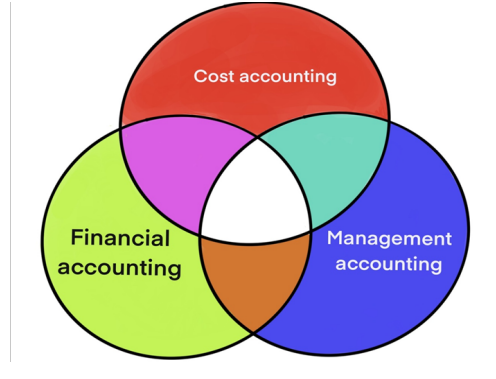
1.4.3 Difference between branches of accounting
Differences between Financial, Cost and Management accounting can be assessed by understanding how their accounts would be different from one to another:


Note:
Both Cost accounting vs Management accounting help management bodies to make effective decisions. But their scope and tools are completely different. As Management accounting depends a lot on Cost accounting to prepare reports, Cost accounting happens to be a sub-set of Management accounting. But if we look at the usage, estimation process, data points used, and utility, Cost accounting has much narrower scope than Management accounting.
b. Cost accounting and Financial accounting

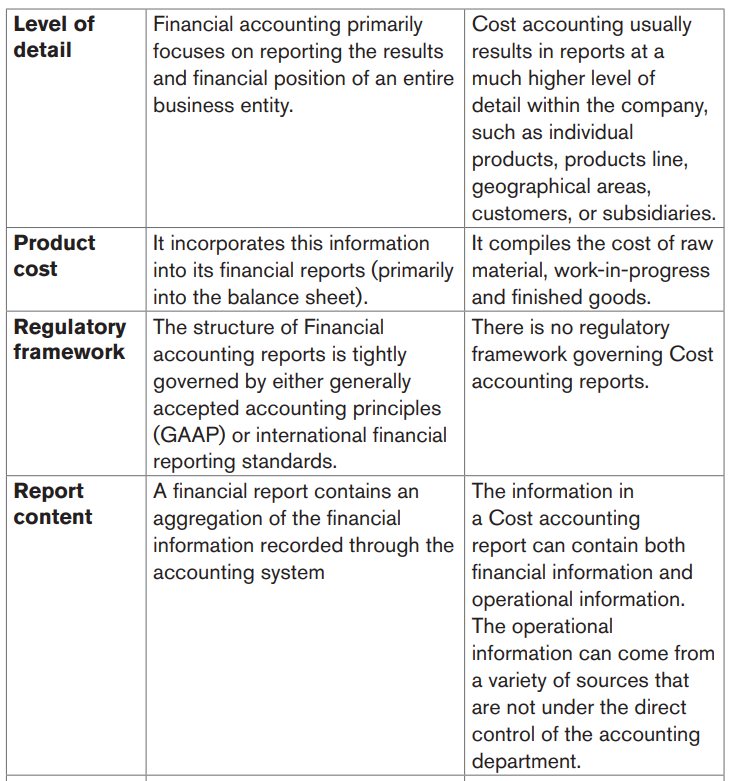
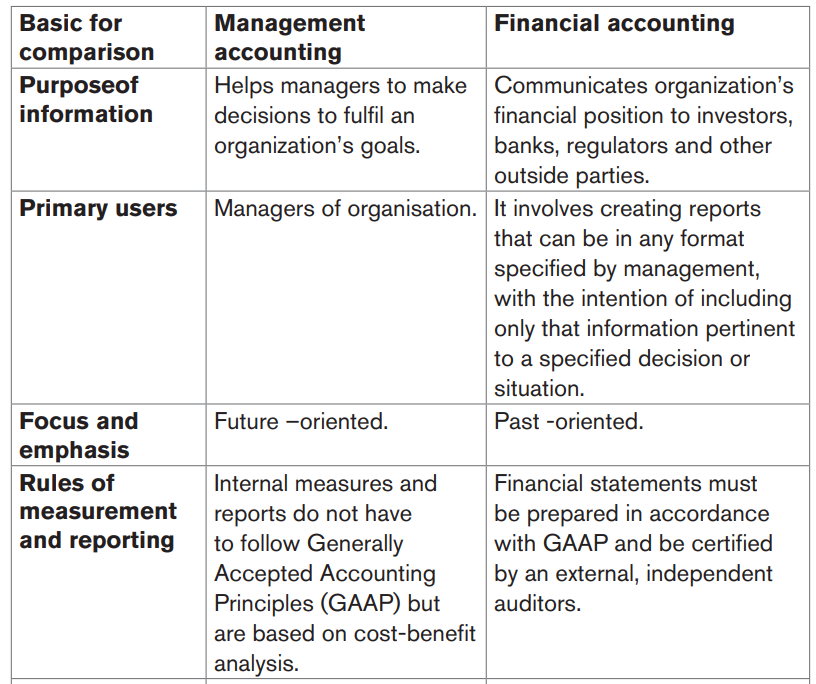
c. Financial accounting and Management accounting
Differences between financial and management accounting can be assessed by understanding how financial accounts would be different from management accounts:
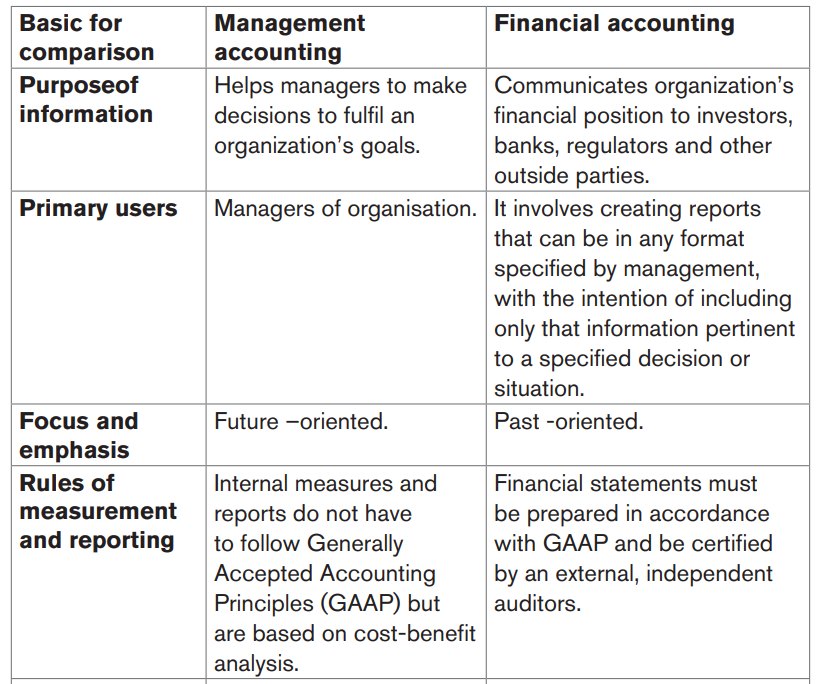
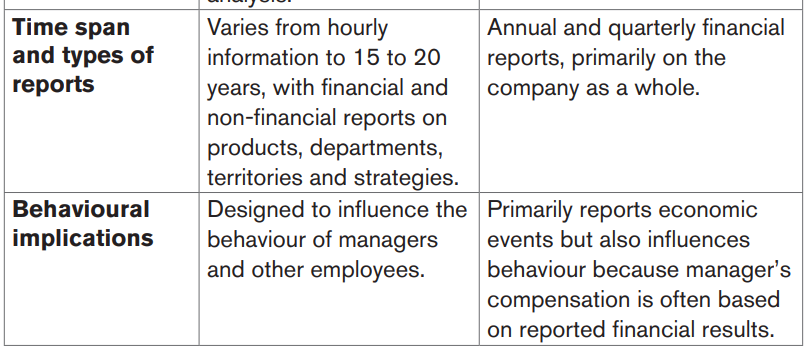
Application activity 1.4
1. Define the following accounting branches:
a) Management accounting
b) Cost accounting
c) Financial accounting
2. List the three similarities between Financial accounting and Cost accounting.
3. Describe how Management accounting differ from Financial accounting in rules of measurement and reporting?
1.5 Purpose of Cost and Management accounting
Activity 1.5
AKARABO Company Ltd. is a manufacturing company located at Karongi District that has different departments for different operations. They include manufacturing department, selling and distribution department, marketing department, purchase department and administration department.
During senior management meeting at the AKARABO Company Ltd, some department’s managers have complained about the lack of information about cost represented in manufacturing department. “Better to have financial information and good effective communication between top management for improving the decision making” said Chairman of Board of Directors (BOD). Use of financial data aiming to planning, decision making, cost ascertainment, selling price fixing, monitoring and controlling of finance is the one of important responsibilities of managers.
1. From the above scenario, what do you understand about decision making?
2. According to the information of AKARABO Company Ltd, state at least different 5 objectives of Cost and Management accounting.
3. Develop how a decision-making interact with those objectives
1.5.1 Introduction
The main objective /purpose of Cost and Management accounting is the analysis of the various costs and decision making about the production of any commodity and ensuring that these costs are controlled adequately and making decision.
The next section explains the purpose of cost and management accounting.
1.5.2 Explanation of purpose for Cost and Management accounting
a. Cost ascertainment
The costs of producing different commodities or providing services must be ascertained accurately. These costs consist of material cost, labor cost and overheads. The cost must be kept at the minimum possible level. The detailed information helps the management to make some important decisions and to evaluate the performance of the organization.
b. Disclosure of waste
The costs incurred for the production of any commodity can be determined in advance in view of the past experience. If actual costs are higher than the expected costs then this excessive cost can be analyzed. This excessive cost may be due to wastage of raw material or idle labor time. Cost accounting is an important aid to disclose wastes.
c. Decision making
The management is responsible to make decision regarding what goods should be produced and in how much quantity. Cost accounting provides necessary information to the management for making the decisions.
d. Cost control
Cost control is an important function of the management. Material cost, labor cost and overheads must be maintained at desirable levels. Cost accounting principles are used to eliminate unnecessary costs.
e. Planning
The management prepares plans for the expansion of business activities. The installation of new machinery and plant is needed to increase the production capacity of a manufacturing concern in view of greater demand for its products. The past experience and cost data are used to prepare and implement future plans.
f. Measurement of efficiency
Cost data are used to measure the efficiency of an organization. If there are various departments of a business enterprise then it is important to determine the relative performance of these departments. More efficient departments must be given greater incentives and appropriate steps must be taken to improve the performance of less efficient departments.
g. Setting selling prices
It is difficult for a business concern to set selling prices of its products. Selling price of a product must be reasonable. If selling price is too high then due to competition from rivals, a firm’s sale can be affected adversely. Similarly; if selling price is too low then a firm can go into loss. It is more advisable that a business concern should ascertain its costs and then add its profit into cost of sales. The cost data are also helpful to set a selling price.
h. The evaluation of profitability
Profitability measurement is an important purpose of Cost accounting. Profitability can be measured in number of ways, example: profit as a percentage to sale, profit percentage to capital employed, profit per unit of output and so on. The profitability information serves as guide to the management to make some strategic decisions regarding the introduction of new products and increasing or decreasing the volume of production.
i. The pricing of products and projects
Pricing involves determination of prices of new products, adjustment in prices of existing products as well as determination of bid prices for contracts.
j. Inventory management
Cost accounting assists in inventory management by keeping a complete record of materials from the time they enter the premises till the time they are sold in the form of finished goods. This also enables stock valuation to be given quickly for preparing periodic financial statements without any need of physical stock taking.
k. Analysis of financial statements
Cost accounting assists management in such analysis by providing detailed information about sources of profit or loss as revealed by the financial statements.
l. Controlling Activity
Controlling is the process by which management makes sure that intended and desired results are consistently and continuously achieved.
Application activity 1.5
1. State at least 10 purposes of Cost and Management accounting.
1.6 Principles of Cost accounting
Activity 1.6
Gahanga Ltd is a manufacturing enterprise using different accounting systems. It seems the Cost accounting is the best due to its mission. Cost accounting is a type of accounting process that is aiming at capturing a production company’s cost by assessing the input costs at each step of production process as well as fixed costs such as depreciation of non current assets. Cost accounting will first measure and record these costs individually, then compare input to actual results to aid a company for measuring financial performance.
You are engaged as a Cost Accountant and you are asked to help all company’s departments and staff on how the cost accounting system is elabourated and implemented.
Questions:
1. From the above case, what do you understand by cost accounting?
2. What should be followed as principles of Cost accounting in business?
a. Cause-Effect relationship
Each item of cost should be related to its cause as minutely as possible and the effect of the same on various departments should be ascertained. This cost should be shared only by those units for which cost has been incurred.
b. Charge cost only after its incurrence
Cost should include only those cost which has been actually incurred, for example, unit cost should not be charged with selling cost while it is still in the factory.
c. Ignore the convention of prudence
Cost accounting statement should give a factual picture of the profitability of the project. If some contingencies need to be made, they should be shown distinctly and separately.
d. Past costs should not form part of future costs
Past costs which could not be recovered in past should not be recovered from future costs as it will not only affect true results of the future period but will also distort other statements.
e. Exclusion of abnormal costs from Cost accounts
All costs incurred because of abnormal reasons like theft, negligence, etc, should not be taken into consideration while computing the unit cost. If done so, it will distort the cost figures and mislead the management resulting in wrong decisions.
f. Principle of double entry should be followed preferably
To lessen/reduce the chances of any mistake or error, cost ledger and cost control accounts, as far as possible, should be maintained on the double entry principle. This will ensure the correctness of sheet and cost statements prepared for cost ascertainment and cost control.
Application activity 1.6
1. Briefly explain at least two principles of Cost accounting applied in business.
Skills Lab Activity 1
Scan the environment of your home locality, analyze different businesses operating in it and draw examples which belong in each of the following categories:
1. Public enterprises
2. Private businesses
3. Service businesses and
4. Manufacturing businesses
Give reasons for your classification.
End unit assessment 1
1. Which of the following would be classsed as a credit transaction ?
a) Sale of goods paid for by credit card
b) Purchase of printer paper accompanied by an invoice
c) Sales of goods paid for by cheque
d) Purchase of printer paper by cheque
2. A. Which of the following would be classified as capital expenditure?
a) Purchase of a computer for resales to a customer by a computer retailer
b) Purchase of a computer by a computer retailer for use in the sales office
c) Payment of wages by an accounting firm
d) Purchase of a building by a property developer to serve as the head office
i) a and b
ii) b and c
iii) c and d
iv) b and d
B. Two of the following are characteristics of Management accounting?
1. It helps with decision making inside the business
2. Its end product consists of statements for external publication
3. It focuses on costs
4. It focuses on asset evaluations
i) i.1 and 2
ii) ii.2 and 3
iii) iii.1and 3
iv) iv.2 and 4
3. Management accounting deals only with costs ‘. Do you agree?
Discuss.
4. By completing the following table clarify the difference between Financial accounting and Management accounting.
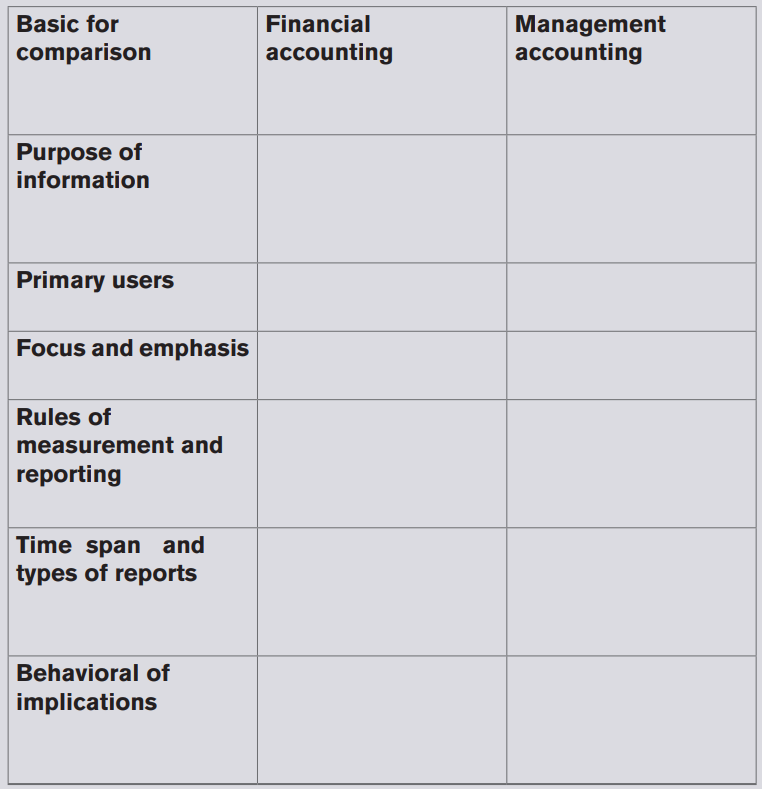
UNIT 2:THE SOURCE OF INCOME AND EXPENDITURE INFORMATION
Key unit competence: Identify source of income and expenditure information
Introductory activity
IKIREZI PLC has started a poultry project two years ago with the aim of solving the problem of chicken meat in Rubavu town. When starting this business, it invested in his/her own money and other types of assets to buy everything needed in the business. Throughout business operations, IKIREZI PLC purchased different materials including drinkers, mangers and motor vehicle. IKIREZI PLC also paid a rent of one year immediately.
At the beginning, IKIREZI PLC bought 700 chicks at 1000 Frw each, and those chicks had to be vaccinated each seven days during their first 21 days. IKIREZI PLC company also purchased chicken foods and vitamins to make them grow faster. Even if IKIREZI PLC made more efforts to make their business successful during full year, IKIREZI PLC forgot to record the money spent and money generated from sales. This resulted into IKIREZI PLC ’s losses and disputes between IKIREZI company its suppliers and customers.
At the beginning of the second year, IKIREZI took new measures to avoid the loss. Hence IKIREZI company decided to hire a professional accountant who will help managers to record all the accounting information’s about purchasing and selling activities. At the end of the second year, IKIREZI PLC got profit and now IKIREZI PLC is predetermining to issue the shares on stock market.
1. What is the scenario above talking about?
2. What do you think is the main purpose of doing a business activity?
3. How do we call all those activities which involve IKIREZI PLC in the purchasing of materials and equipment?
4. What are the challenges that IKIREZI PLC faced in the 1st year of their business activity?
5. Diagnose the possible solutions to the above challenge faced by IKIREZI PLC?
6. Suggest the appropriate responsibilities of hired accountant in IKIREZI PLC?
7. Develop and show where do you think this accountant will find the data or accounting information to record.
2.1 Definition of concepts
Activity 2.1
Mr RUGERO is a person with A0 Bachelor Degree in Finance from Kigali Independent University (ULK-Kigali Campus). At the end of his studies, he started merchandizing activities with low capital. Suddenly, he got a financial support (Capital) from his nephew who lives in Canada. From the financial support, he started the business activity given the fact that he has learnt how to operate a business at the university. And after five year in the business, he received the RRA Award of the year as the good taxpayer. This Award is from not only good recording system of all income and expenditure transactions in their respective and efficient accounting system but also the declaration and payment of taxes on time. His business is still growing up and Mr RUGERO is planning to expand his business into import export sector on international markets.
1. Specify the name of money generated in business.
2. What is the name of money spent from the business to be returned after year?
2.1.1 Income
Income is the inflow of cash or its equivalents from sale of a good, a service or an asset.
Example :
• From work (wage or salary),
• From capital (interest or profit),
• From land (rent).
Income is defined in different ways depending on the context—for example, for purposes of taxation, financial accounting, or economic analysis. For individuals and businesses, income generally means the value or amount that they receive for their labour and products.
2.1.2 Expenditure
Expenditure is funds used by a business, organization, or corporation to acquire a new asset, improve existing ones, or reduce a liability. In other words, it is the use of a resource in the operation of a business.
Briefly, Expenditure means the use of cash or cash equivalents to purchase assets, pay down debt, or fund operation.
Main features of Income and Expenditure Account are:
• Income and Expenditure Account is a nominal account. Therefore, the rule of nominal account (debit all expenses and losses and credit all incomes and gains) is followed.
• The opening and closing balances of cash in hand and cash at bank are not recorded in it. It has no opening balance,
• While preparing it, only items of revenue nature are recorded and all items of capital nature are ignored. For example, the profit earned or loss suffered on the sale of an asset will be recorded in it but the amount received from the sale of an asset will not be recorded in it the
• Income and Expenditure Account is prepared at the end of an accounting period,
• Income and Expenditure Account contains revenue items only.
Application activity 2.1
1. Which of the following statement is not true regarding the expenditure meaning?
a) It is the use of fund by a business
b) It is the use of resources
c) It is the fund of operation
d) Use of cash equivalent
e) No one of the above
2. Which one of the following is not considered as income:
a) Salary from work done
b) Pocket money
c) Profit from sales
d) Assets improvement
e) No one of the above
3. All of the following are features of income and expenditure account except:
a) Income and Expenditure Account is prepared at the end of an accounting period
b) Income and Expenditure Account contains revenue items only.
c) Income and Expenditure Account is prepared on an nature basis
d) Income and Expenditure Account is a nominal account
e) No one of the above
4. Differentiate income from expenditure.
5. Explain the rule used when preparing nominal account
6. Explain how the income can increase in economic benefit during an accounting period.
2.2 Types of income
Activity 2.2
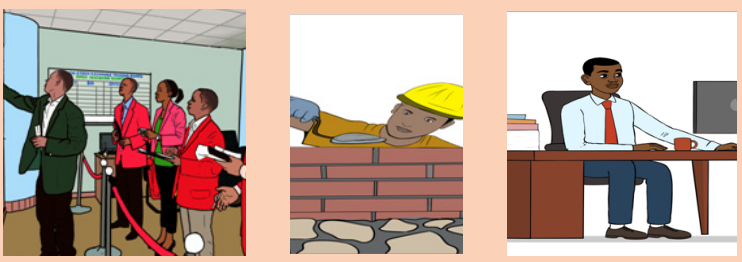
Analyse the picture above then answer the following questions :
1. What is about the image ?
2. Is it possible that those people may gain the same icome? if Yes or Not explain.
3. How do we call the income received by those people.
4. Classify the following incomes according to their main types : salary, wage, profit, rental income.
There are three types of income:
• Earned income (active income)
• Portfolio income
• Passive income
a. Earned income
Earned income (active income) is the money earned from working. It is compensation of human efforts.
Example: Salary; wages; bonuses; contract work
The different tasks are:
a. Working a job
b. Consulting
c. Any other activity that pays based on time/effort spent.
While earned income is the most common mechanism for making money, it is obvious downside is that once you stop working, you stop making money.
Additionally, because the amount of money that is made through earned income is directly proportional to the time and effort you spend working. It is difficult for someone to make more earned income without either learning a new (or more valuable) skill or working longer hours. Additionally, earned income is taxed at a higher rate than any other type of income.
One huge benefit of earned income over the other income types is that you generally don’t need any start-up capital in order to make earned income, which explains why most people rely on earned income from the start of their working file. In fact, earned income is a great way to start your investing career, as it allows you to save up cash that will help you generate the other two types of income.
b. Portfolio/ Investment income
This is the income that is generated by selling investments that were made earlier. In simpler words, this represents an increase in the value of the investment or capital gain as it is known in common terms. For instance, if a person buys shares and sells at a higher price or if they buy a house and sell it for a profit, the difference is called a capital gain.
This income has no relation to the number of hours worked. Also, this income is not received periodically. It keeps on accruing over a period and is paid out when the investor decides to liquidate it. Also, this type of income is more tax efficient as compared to earned income. This is true only if the investments have been held for a long period of time. Most countries in the world separate long term capital gains from short term capital gains and tax them at a lesser rate.
Example: Stocks, bonds, mutual funds, interest, etc.; money from buying/ selling real estate or other assets, such as automobiles.
Some activities that generate portfolio income include:
a) Trading (buying/selling) Paper and Assets Paper refer to things like stocks, bonds, mutual funds, T-bills, currencies or other types of futures/derivatives.
b) Buying and Selling Real Estate (specifically the profit from the sale)
c) Buying and Selling of any other Antique Asset or cars for example. Or other types of collectibles that have an appreciating value
Portfolio income certainly has some advantages over earned income. Once you have the knowledge and experience to generate portfolio income on a consistent basis, you can continually reap the benefits (compound your return) by reinvesting after each sale.
c. Passive Income
Passive income is another important source of income. It shares the characteristics of earned income and investment income. Just like earned income, it is paid for every period. However, the quantum of income does not depend upon the number of hours invested. Rather, it depends upon the capital invested. This is where passive income is like investment income.
Typical examples of passive income are rent, interest, and dividends, which are paid by shares and debentures. The taxes on this type of income are also less as compared to the earned income. Some incomes like dividends are totally tax-free in the hands of the investor. For other incomes like rent, there are tools such as depreciation, which can be used to lower the income and, therefore, the tax payable.
Some activities that generate passive income include:
• Rental Income or rent Income from Real Estate
• Business Income (assuming it’s not earned based on amount of time/ effort suent that would be Earned Income)
• Creating and Selling Intellectual Property, Books, Patents, Internet Content, etc
• Affiliate or Multi-Level Marketing
Application activity 2.2
1. List three (3) activities that can generate portfolio income
2. What is the main benefit of earned income over the other income types? At least one.
3. Explain the reason why Some peoples refer to portfolio income as “capital gains”.
4. By using typical examples, explain the passive income.
5. Discuss, interpret and present how is it possible for someone to make more earned income without either learning a new (or more valuable) skill or working longer hours? (answer by YES or NO)
2.3 Types of expenditure
Activity 2.3

Analyze the above picture then answer the following questions:
1. What about the image?
2. Explain the relationship presented on the above picture.
3. Which kind of transactions on which people are spending money?
4. How can one differentiate these expenses according to the ways in which these people spent money?
There three classes of expenditure
a. Capital Expenditure
Capital expenditure is an amount incurred for acquiring the long term assets such as land, building, equipments which are continually used for the purpose of earning revenue. These are not meant for sale. These costs are recorded in accounts namely Plant, Property, Equipment. Benefits from such expenditure are spread over several accounting years.
Example: Interest on capital paid, Expenditure on purchase or installation of an asset, brokerage and commission paid.
b. Revenue Expenditure
Revenue expenditure is the expenditure incurred in one accounting year and the benefits from which is also enjoyed in the same period only. This expenditure does not increase the earning capacity of the business but maintains the existing earning capacity of the business. It included all the expenses which are incurred during day to day running of business. The benefits of this expenditure are for short period and are not forwarded to the next year. This expenditure is on recurring nature.
Example: Purchase of raw material, selling and distribution expenses, Salaries, wages etc.
c. Deferred Revenue
Expenditure Deferred revenue expenditure is a revenue expenditure which is incurred in the present accounting period but its results or impacts on profitability are incurred in the following or the future accounting periods. This expenditure might be written off in the same financial year or over a period of a few years
Example: Development expenditure, Advertisement expenditure etc.
Application activity 2.3
1. Explain the types of expenditure
2. With typical examples differentiate capital expenditure from deferred revenue expenditure.
3. In which accounts capital expenditure must be recorded?
4. Classify the following expenditures according to their types:
• Purchase the sugar for a bread manufacturing company
• Payment of salary
• Give gifts to potential customers
• Offer end year rebate
• Purchase company shelves
2.4 Sources of income and expenditure information
Activity 2.4

Analyze the picture then provide answers to the following questions:
1. What is on the picture?
2. What do you think is recorded on these documents?
3. Why the person on the picture is recording the information on these documents while they are already recorded on these documents?
4. How do we call those documents that serve as the source of accounting information?
A source document is a document which contains information to be recorded in the books of account. They are properly written source of accounting information relating to various transactions like buying and selling of goods, return of goods bought or sold, settling of debts, etc. These documents must always be present to support whatever records or transactions have been made. They are hence called supporting documents.
The source documents may be income or expenditure source of accounting information.
Source document that serve as sources income information
• Sales order
• Bank statement
• Goods received note
• Credit note
a. Sales order
A sales order is a document generated by the seller specifying the details about the product or services ordered by the customer. Along with the product and service details, sales order consists of price, quantity, terms and condition etc.
* Components/elements of sales order document
A sales order usually carries information such as customer’s name, shipping address, transaction date, products ordered, description, units of measure, quantities, price, taxes, etc. The key details of the sales order are listed below.
• Name and contact information of the company (seller)
• Name and contact information of the customer
• Customer billing information
• Customer shipping information
• Information about product or service
• Price before taxes
• Tax, delivery and shipping charges
• Total price after taxes
• Terms and conditions
• Signature
• Any other relevant information as needed

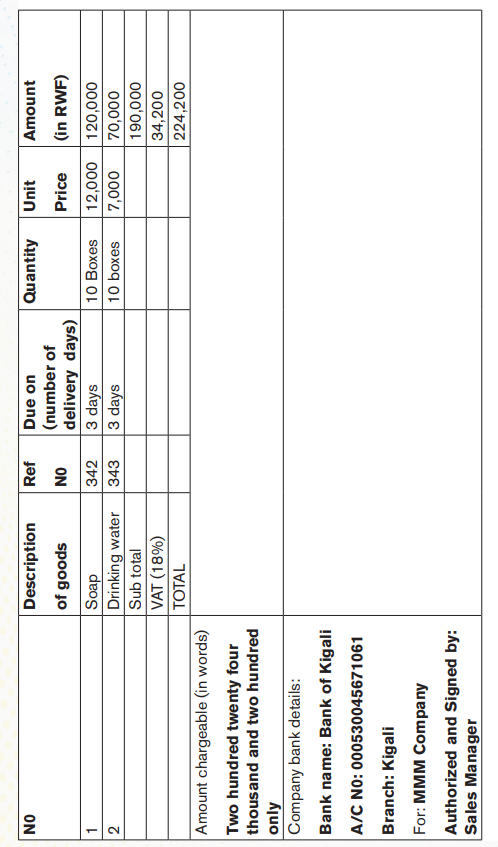
b. Bank statement
The bank statement is a statement issued periodically ( monthly or quarterly) by a banker to his/her customer informing him/her of the statement on his/her financial situation of affairs at the bank account. It is a customer’s account in his/ her banker’s books.
A good bank statement generally shows the name of the account holder along with sensitive information such as a bank account number and branch number or name. It also contains a summary table that shows the time period, opening balance, deposits, withdrawals, and closing balance.
Here’s what’s generally on a bank statement:
• Account number
• Home address
• Statement period
• Bank’s customer service number
• Beginning and closing balance for the time period
For each item, you’ll also see a transaction date and the payer or payee name. Each statement covers a certain period, such as a financial quarter or one month, but it might not begin on the first day of the month. For instance, your statement might run from September 6 to October 5.
If you find any inaccuracies on your statement, you should report them to your financial institution. Typically, disputes are done in writing, so be sure to provide any supporting documentation you have.
Example
The following information concerns ALL’s account held in FINABANQUE during the month of March and whose the balance at the beginning of that month were 200 000Rwf.
05/03/2010 deposit of money (deposit slip No 22) 50 000Rwf
08/03/2010 withdrawal (Check 0112). 160 000Rwf
14/03/2010 deposit of money (deposit slip No 34) 35 000Rwf
16/03/2010 deposit of money (deposit slip No 55) 45 000Rwf
23/03/2010 withdrawal (Check 0113) 65 000Rwf
26/03/2010 withdrawal (Check 0114) 10 000Rw
27/03/2010 bank charges 2 000Rwf

c. Goods received note (GRN)
The GRN is a document issued by a receiver (buyer) to seller indicating the goods received. The following are its characteristics:
• The date of receiving;
• The name and the address of supplier
• The delivery order number
• The description of goods purchase
Example
Mr KALIMANDA received the following goods from his supplier, Mr KAMANA Ali from KIGALI:
- 16 Items mobile phone No 1100, Nokia Ref 1460
- 2 Desktop, Ref No 1461
- 3 Laptop HP Vista, Ref No 628
Date of delivery: December 14th, 2021
Number of delivery Order: 174 / 2021
Required: Prepare the goods received note.
Solution:
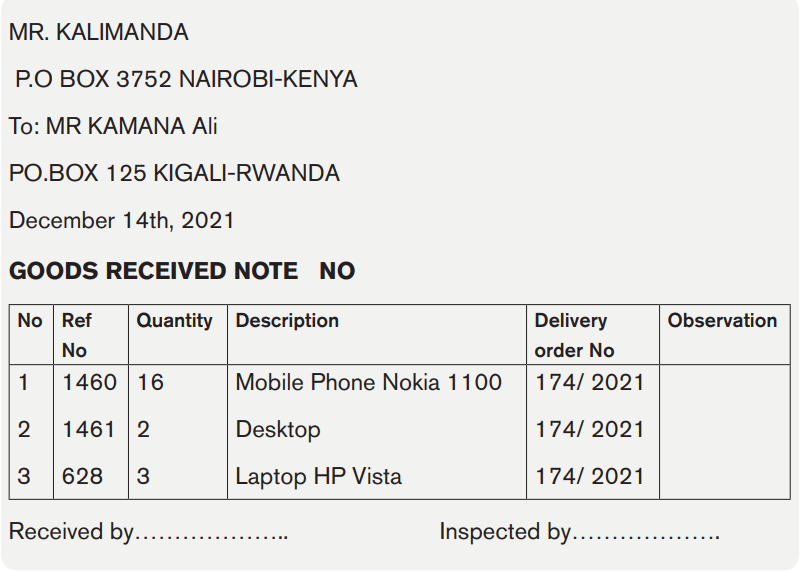
d. Debit note
A debit note, or a debit memo, is a document issued by a seller to a buyer to notify them of current debt obligations. You’ll commonly come across these notes in business-to-business transactions — for example, one business may supply another with goods or services before an official invoice is sent. The debit note ‘makes note’ of the transaction for documentation purposes.
Debit notes are also used in business-to-customer transactions, such as when a customer returns goods to a business received on credit. In this case, the buyer issues the debit note to the seller.
This note is issued by a seller in goal:
• To rectify a favorable mistake to buyer which it has been clearly fixed only after the sending of an invoice.
• To request additional payment as interests due a delay period made by the buyer in the payment of this invoice.
• To charge the customer who fails to return the packaging cases or containers not charged for in an invoice.
- Incoming debit notes are received from creditors; Outgoing debit notes are sent to debtors. Return outwards day books is written up from incoming credit note.
Example
MUKAZANA Ltd sent debit note concerning the transport cost to Mr MURENZI Samson. This amount (10, 500Rwf) was not charged to the customer (MURENZI) at the moment of issuing of the invoice.
Required: Prepare the debit note
Answer:
MUKAZANA Ltd
P.O BOX :……….
DATE:…………
DEBIT NOTE No ………………
TO:
Mr MURENZI Samson

Source documents that serve as source of expenditure information
• Purchase order
• Invoice
• Receipt
• Goods delivery note
• Quotation
• Payroll
• Credit note
• Purchase requisition
a. Purchase order (PO)
A purchase order is a commercial source document that is issued by a business’ purchasing department when placing an order with its vendors or suppliers. The document indicates the details on the items that are to be purchased, such as the types of goods, quantity, and price. In simple terms, it is the contract drafted by the buyer when purchasing goods from the seller.
Its characteristics are:
• The name and address of the company purchasing the goods or services,
• The name and address of the seller
• The date,
• Purchase order number,
• The description and quantity of the goods or services required,
• Unit Price
• Total amount of goods ordered
• Payment information
• Delivery mode
• Delivery term
Example
On February 1st 2019, KANDAMO MANUFACTURING LTD (P.O BOX 54781 KIGALI) orders to KANYANDEKWE (P.O BOX: 23000 KIGALI) the following items:
* 200 items of carbon paper ref no 6 at FRW 2,600
* 2 000 items of envelopes ref. no 7 for FRW 8, 000
* 10 000 items of Onion sheet (papers pelures) no 10 for FRW 1, 400
Time of delivery: 8 days; Method of payment: in cash
Required: Prepare purchase order
Answer:
KANDAMO MANUFACTURING LTD
P.O BOX 54781 KIGALI
PURCHASE ORDER No: 435
TO: KANYANDEKWE COMPANY
P.O BOX 23000 KIGALI
Date February 1st 2019
Please supply the following goods:

b. Invoice
This is a document which is issued by the seller to the buyer when goods have been sold on credit. An invoice or bill is a commercial document issued by a seller to the buyer, indicating the products, quantities, and agreed prices for products or services the seller has provided the buyer. Invoices generally outline payment terms, unit costs, shipping, handling, and any other terms outlined during the transaction.
Types of invoices may include a paper receipt, a bill of sale, debit note, sales invoice, or online electronic record.
Characteristics of invoice
To the heading:
The heading of the invoice contains:
• The word "invoice"
• A unique reference number (in case of correspondence about the invoice)
• Date of the invoice
• Name and contact details of the seller
• Name and contact details of the buyer
• Date that the product was sent or delivered
• Purchase order number (or similar tracking numbers requested by the buyer to be mentioned on the invoice)
The body:
• Description of the product(s)
• Unit price(s) of the product(s) (if relevant)
• Various reductions
• Total amount charged (optionally with breakdown of taxes, relevant)
• Payment terms (including method of payment, date of payment, and details about charges late payment)
Types of invoice
a. Pro-forma invoice
It is a document that states a commitment from the seller to provide specified goods to the buyer at specific prices. It is often used to declare value for customs. It is not a true invoice, because the seller does not record a pro-forma invoice as an account receivable and the buyer does not record a pro forma invoice as an account payable.
b. Commercial invoice
A custom declaration form used in international trade that describes the parties involved in shipping transaction, the goods being transported, and the value of the goods. It is the primary document used by customs, and must meet specific customs requirements, such as the harmonized system number and the country of manufacture. It is used to calculate tariff.
c. Sales invoice or outgoing invoice
It is an invoice from the point of seller. The sales day book is written from outgoing invoice.
d. Purchase invoice or incoming invoice
It is an invoice from the point of buyer. The purchases day book is written from incoming invoice.
Example
On November 28th 2021, KAPAKO RWANDA Company (Phone + 250 518646; P.O BOX 5053 Kigali; E-mail: kapako123@ yahoo.com), send to the MMM Company (Phone (+250) 0788302211; P.O BOX 160 Kigali), the invoice no 131/06 for furniture of:
* 100 items of Motorola E816 phones (product ID: P1003; unit price: Frw 32 000) and
* 120 items Nokia 3220 phones (product ID: P1000; unit price: Frw 43 000) VAT rate 18%
Required: Prepare invoice
Solution
KAPAKO RWANDA COMPANY
B.P 5053 KIGALI –RWANDA Date: November 28th 2021
PHONE + (250) 518646
E-mail:kapako123@yahoo.com
BILL TO: MMM Company INVOICENO131/06
P.O BOX: 160 KIGALI-RWANDA
PHONE: (+250) 0788302211
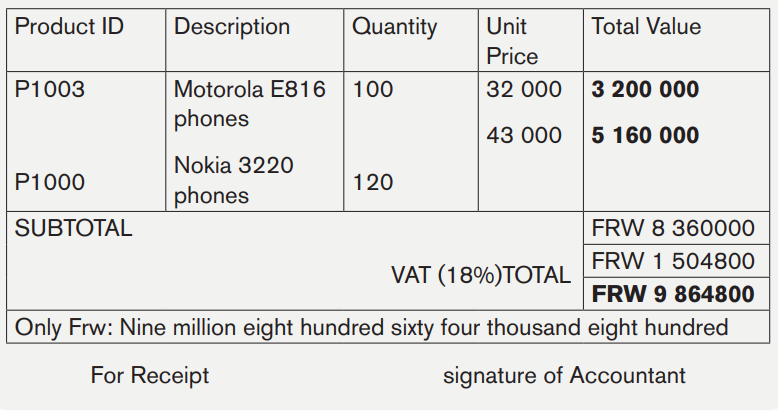
c. Receipt
The receipt is a written acknowledgement that something such as money or goods has been given to the person who issues the acknowledgement.
It is a written proof showing that the payment or deposit of goods or money has been done. This document contains:
• The name and address of the depositor
• The word in latter “Receipt”
• The number of the document
• The nature (description) deposited (if it is money, you must specify the sum in figures (digit) and Letters)
• The name and signature of the receiver
• The date and reason of payment or deposit.
Example
Miss KEZA Cecile (P.O BOX 200 BUTARE) pays to IRIS Enterprise, (shop specialized in selling of flowers and gift items, P.O BOX 322 KIGALI), the sum of 5, 000 Rwf in cash on 20 April 2021 for settlement of his invoice No 50 of April 10th, 2021.
Required: Prepare receipt No100.
Solution:
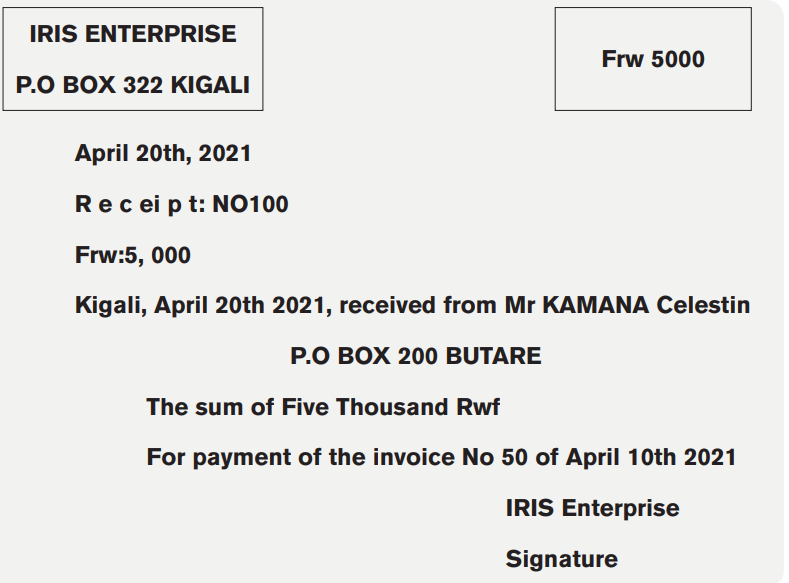
d. Goods delivery note
The delivery note is a document issued by a seller and sent to a buyer at the moment of the delivery of goods, when the invoice will be sent subsequently. It serves to verify if the goods delivered are conform with the order. It gives the details of the transactions such as:
• The date of delivery
• The name of the buyer
• The nature and quantity of delivered goods
• The name of the ship
Example
On October 19th 2019, BAMBA Ltd had ordered to BESTWAY MANUFACTURING LTD the following goods:
* 12 tyres Michelin xzx – size: 165 – 13
* 12 inner tubes, size 13D – 9
After receiving this purchased order, BESTWAY MANUFACTURING LTD, supplier makes the arrangement to deliver those goods.
Required: Prepare the delivery note on October 20th, 2019
Solution:
BESTWAY MANUFACTURING LTD
P.O BOX 54781 KIGALI
GOODS DELIVERY NOTE No:……..
TO: BAMBA Ltd
P.O BOX ………

e. Quotation (Proforma invoice)
Quotation is an offer to supply goods according to the terms and conditions stated. Quotations are received from different suppliers in response to letter of inquiry. A quotation is an offer to supply goods according to the terms and conditions stated.
These terms and conditions include for what period the prices stated are valid, rates of discount offered, mode of delivery, terms of payments etc.
Example
On 31st January 2020, the procurement department of Ms Ihogoza requested for a quotation from the sales manager of KARANGA Plastic Ltd (P.O BOX: 1020
about 20 plates and 15 cups as she is preparing to get married. KARANGA Plastic Ltd has presented the following information:
20 Plats Frw 1000 each
15 Cups Frw 200 each
All discount of plates and cups equal to 2%, and the VAT is equal to 18% Prepare a Quotation NO 024/1020 from from KARANGA Plastic Ltd to Ms Ihogoza.
Solution
FROM: KARANGA Plastic Ltd
P. O. BOX 1020
KIGALI
QUATATION NO024/1020
TO: Ms Ihogoza
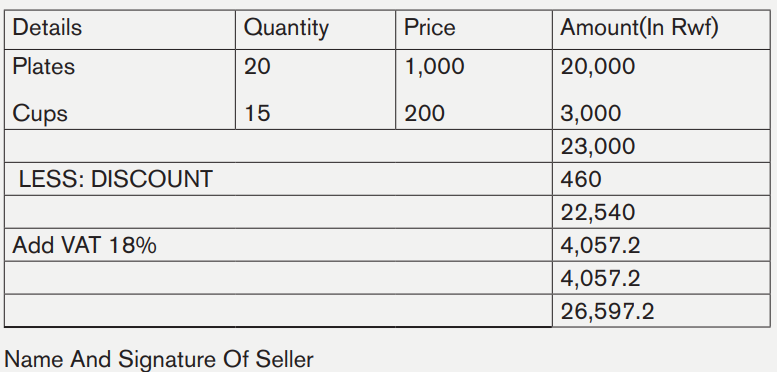
f. Payroll
The term ‘payroll’ means a list of employees within a company and how much they are to be paid. A payroll is the process of paying a company’s employees, which includes tracking hours worked, calculating employees’ pay, and distributing payments via direct deposit to employee bank account or by cheque.
The payroll process can include tracking hours worked for employees, calculating pay, and distributing payments via direct deposit or check. However, companies may also perform accounting, record-keeping, and set aside funds for medical insurance, Social Security, and employment taxes.
Main elements to consider while preparing payroll
a. Employee details
Before you’re able to run payroll, you’ll need to access to your employees’ details such as their name, address, national insurance number and salary.
b. Time or hour used on workplace by Employee
If you pay your employees on an hourly rate, you’ll need to have a system in place to monitor the hours they work, so you can ensure they are paid the correct amount. For employees that are on a salary, you may choose to monitor when they’re working to ensure they are adhering to their contracted hours.
c. Salaries, wages and net gross pay
You need to keep a record of whether your employees are on a salary or an hourly wage, as this will determine how you calculate their pay.
• A salary is a pay packet that an employee receives on a monthly basis. These payments are based on a yearly amount that is divided into 12 individual payments. But depending on the nature of your business, you may choose to pay your employees a wage instead of a salary.
• A wage is an amount based on hours worked rather than a yearly fixed amount. You’ll set an hourly wage and multiply this by the number of hours worked to calculate their total pay in a particular period. On your employees’ payslips you’ll need to indicate their gross and net pay.
• Gross pay is an employee’s total pay within that period.
• Net pay is the amount they receive after tax and any other deductions.
d. Tax and deductions
By law, every employee has to pay tax and national insurance from their total gross pay. The tax rate can vary depending on the total amount an employee has earned and their circumstances. Regardless, it is the employer’s responsibility to ensure the correct amount is deducted in payroll and paid to Rwanda revenue authority (RRA) each month. It’s important, you complete this on time each month or you could be charged a penalty.

g. Credit note
A credit note is a document issued by a seller to a buyer to notify that credit is being applied to their account. You might notice these referred to as credit memos, too. As a seller, you may issue a credit note when there’s a need to cancel all or part of an invoice for a variety of reasons, including:
• Changes to an order after an invoice is issued
• Goods returned or services rejected
• Goods were damaged during shipping
• Pricing mistakes on the original invoice
No actual money is exchanged with a credit note; rather, it’s used to offset a previous invoice that’s already been paid.
Example
On 24 March 2020, BABU Company (Tel: 0788288444), located in RWANDA bought 10 000 cartons of biscuits on credit from MMM manufacturing Ltd (E-mail: mmm@yahoo.fr; 0722233311) for 800 000Rwf and a trade discount of 10% was given.
The following day, BABU Company returns 1 carton of biscuit to MMM manufacturing Ltd. that had been damaged.
Required: Prepare credit note No795
Answer:
M.M.M MANUFACTURING Ltd.
E-MAIL : mmm@yahoo.fr
Tel: 0722233311
DATE: 25./.03../2010.
CREDIT NOTE No 795
TO :
BABU Company
Tel: 0788288444

h. Purchase requisition
The purchasing department is responsible for buying goods which are required by any business enterprise. For this purpose, written requests are sent by all departments for goods required by them to the purchasing department. These written requests are called purchase requisitions.
These purchase requisitions contain the description of goods required, quantity required and when required. These requisitions must be signed by an authorized person of the department that need these goods.
If the material involved is held in stock by the stores department then the purchase requisition would be prepared and signed by the head of stores department. If some specific items are required by the production department then the purchase requisition would be signed by the works manager.
Format
BESTWAY MANUFACTURING LTD
PURCHASE REQUISITION NO ..... DATE: ………….
DEPARTMENT/ SECTION: …………
Please arrange to purchase the following items: ……

Application activity 2.4
1. Complete the following table :

2. The EPRA, P.O BOX 115 Kigali sells on March 15th 2020, 400 baskets of eggplant to LUMAPLANT, P.O BOX 112 BUTARE, seller of flowers and vegetable, P.O BOX 542 BUTARE. Gross weight of each basket is 15kg, Tare 0.5kg per basket, price per kg is frw 500; trade discount 2%; packing cost FRW10 per basket. Transport paid by seller but chargeable to customer FRW2000. Debt payable before April 20th.
Required: Prepare the invoice
3. On 20th March, 2021, the student IRAKOZE David has paid the school fees of Frws50,000 for the second term to the accountant of RRR school, P.O BOX 234 KIGALI, phone number +250788233456, e-mail : rrr@gmail.com.
Required : Prepare the Receipt NO 046
Skills Lab Activity 2
Visit the school bursar and interview him/her about the different accounting documents used on daily basis. From the information discovered, respond to the following questions:
a) What different sources of income and expenditure information documents have you discovered?
b) What are their roles?
c) From those identified above, what documents do you think would be most useful for your business club?
End unit assessment 2 1.
1.All of the following are not income except:
a) Gift from a friend
b) Pocket money
c) Petty cash
d) Resources
e) B and C are correct answers
f) No one of the above
2. Choose the correct answer Earned income is:
a) Income from family
b) Income from all activity done
c) Money earned from working
d) Business income
e) B and C are correct answers
f) All of the above
3. Portfolio income involves the following except:
a) Money from all selling activities
b) Mutual funds
c) Money from buying real estate
d) A and C are correct answers
e) Money from stock selling
f) No one of the above
4. All of the following are expenses except:
a) Funds used by a business
b) Use of cash equivalents
c) Acquire new assets
d) Purchase assets,
e) Pay down debt,
f) Fund operation.
g) No one of the above
5. One of the following is not a type of expenditure:
a) Deferred revenue
b) Expenditure Company
c) Expenditure Revenue expenditure
d) Business expenditure
e) B and C are correct answers
f) C and D are correct answers
6. Match the document in column A with its meaning in column B, by putting the alphabet of the meaning against the number of the document then put the answer in the provided space.

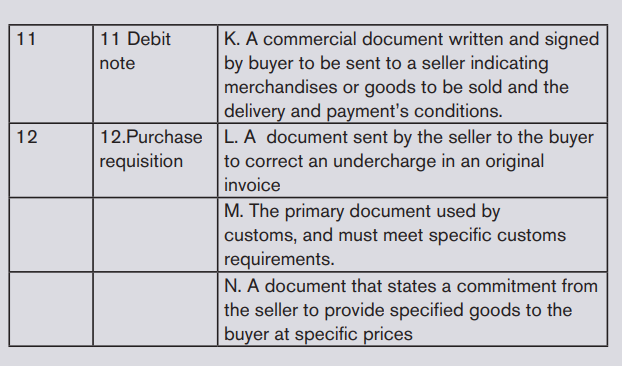
UNIT 3:COMPONENT OF COST IN ORGANIZATION
Key unit competence: Explain material, procurement process, labor, expenses and Centres
Introductory activity
The unit three allows us to discuss the source of income and expenditure information for business. The income received is used to buy materials of the appropriate quality and specification and should be purchased only when material is required and appropriately authorized. The suppliers chosen should represent an appropriate balance between quality, price and delivery. However; the materials properly received are inspected, favorably stored and physically checked on regular basis. In addition, the stock record typically shows various control levels which relate to the particularly inventory control system. In some firms, several stock records may be kept electronically regarding a particularly materials other businesses record the stocks in manual systems using Bin Cards and Stock Record Cards.
In most manufacturing companies and especially in the services sector, the operations/activities are carried out by mainly human being whose recruitment requires institutional policy and organizational expenses.
Manufacturing business even other business spends the income for its different departments or centers in which the output is produced. The production is obtained with direct and indirect expense added to raw material cost and labor cost for prime cost at a given cell of business. In order to produce any commodity or provide any service some amount is spent by an organization. These are referred as costs.
It is important to determine and analyze total costs incurred for the production of any commodity or for providing a service toward unit cost calculation. These costs must be properly recorded and charged to relevant jobs or activities. These costs are presented to the management for making decisions and evaluating the performance of the organization.
The business owners/ managers use their knowledge in costs and expenses to guide decisions about product innovation, quality and satisfaction of costumers.
1. How the product is manufactured?
2. Explain the process of recruitment.
3.1 Material
Activity 3.1

1. After analyzing the above photo, outline the different materials being used by producer.
2. Classify the available materials according to their nature.
3.1.1 Definition of material
Material refers to all commodities or equipment that are consumed in the process of manufacturing. In other word material means all kinds of substance used for the production of a product or rendering any service.
3.1.2 Categories of material
Materials can be classified according to the substances that make them up, how they are measured, or their physical properties.
There are several different ways in which materials can be classified. The three main ways of classifying materials are as follows:
• They can be classified according to the substances that make them up
• They can be classified according to how they are measured
• They can be classified according to their physical properties
Materials may be made of one or more substances. For example, when classifying materials according to the substances that make them up, they may be classified as either wood, plastic, metal, wool and so on. Many items may be made up of a combination of substances.
Materials can also be classified according to how they are measured. This may be by litre, metre or kilogram. In practice however, it may also be in bags, packets or by the thousand.
Finally, materials may also be classified by one or more of their physical properties. The same basic piece of material may be distinguished by one or more of the following features:
• Colour
• Shape
• Fire resistance
• Water resistance
• Abrasiveness
• Flexibility
• Quality
a. Raw material
Raw materials are goods purchased for incorporation into products for sale. Raw materials are a direct cost.
Raw materials is a term which you are likely to come across often, both in your studies and your workplace. Raw materials are a direct cost of production as they are easily identifiable with a unit of production.
Examples of raw materials include:
• Clay for making terracotta garden pots
• Timber for making dining room tables
• Paper for making books
b. Work in progress
Work in progress is a term used to represent an intermediate stage between the manufacturer purchasing the materials that go to make up the finished product and the finished product.
Work in progress is another term which you are likely to come across often, and valuing work in progress is one of the most difficult tasks in costing.
Work in progress means that some work has been done on the materials purchased as part of the process of producing the finished product, but the production process is not complete.
Examples of work in progress include:
a) Terracotta pots which have been shaped, but which have not been fired, and are therefore unfinished.
b) Dining room tables which have been assembled, but have not been polished, and are therefore not ready for sale.
c) Paper which has been used to print books, but which has not yet been bound. The books are therefore not yet assembled, and not yet ready for sale.
c. Finished goods
A finished good is a product ready for sale or despatch. Did you notice how all the examples of work in progress were items which were not ready for sale? It therefore follows that examples of finished goods are as follows:
• Terracotta pots ready for sale or dispatch
• Dining room tables ready for sale or dispatch
• Books ready for sale or dispatch
The examples in the previous paragraph show terracotta pots which have now been fired, dining room tables which have now been polished, and books which have now been bound.
These final processes have transformed our work in progress into finished goods.
d. Direct and indirect materials costs
Materials are either a direct or indirect cost, depending upon how easily they can be traced to a specific unit of production.
• Direct materials are materials that are easily identifiable with a specific unit of production, such as raw materials.
• Indirect materials are materials that are not easily identifiable with a specific unit of production.
In general, indirect materials do not form part of the final product but do make the manufacture of that product possible. There are some exceptions to this, for example, nails used in the production of a cupboard can be identified specifically with the cupboard and form part of the final product. However, because the cost is likely to be relatively insignificant, the expense of tracing such costs does not justify the possible benefits from calculating more accurate direct costs.
Indirect materials are often referred to as 'consumables' and include such things as cleaning products, oil and grease for machines, protective clothing, disposable tools, and stationary supplies. Indirect material costs are an overhead cost.
e. Business containers/package A container or wrapper is any material used for wrapping a consumer-product in order to serve, to contain, to identify, describe, protect and displaying the product. They include Returnable container (eg: crate of some beer) and Nonreturnable container (eg: small bottle of water).
* Reasons or Functions of packaging
• To protect from spoilage and contamination. Packaging protects products from atmospheric conditions like too much sunshine, germs, dust, rain.
• Make the products look attractive to the consumers/ buyers which most cases induce them to buy.
• Packaged products are safe to handle.
• Packed products are easy to stock in shops.
• Packaging helps promote a product. Packed goods are always branded.
• Packed product can be sold self-service.
* Conditions of packaging
• Cost of material packaging
• Environmental factors (legal issues)
Type /nature of the product to be packaged
• Availability of materials packaging
* Mode of packaging
• Box board or paper board cartons
• Paper bags and sacks
• Corrugated boxes
Application activity 3.1
1. Define the following terms as used in accounting:
• Material
• Raw material
• Container
2. List at least three modes of packaging.
3. Why packaging is important to customer?
3.2 Procurement process
Activity 3.2
KANKAZI Ltd is a manufacturing company located in Nyagatare District. The company’s procurement team is responsible for buying materials to be used. They help draft specifications, secure approvals, and deal with suppliers of materials to ensure the company’s production department is stocked up.
Questions:
1. What do you understand by procurement?
2. Where are materials taken to after purchasing them as suggested in the case?
3. Explain the process of procurement.
4. State any four documents used in procurement.
3.2.1 Meaning of procurement process
Procurement is the process of finding and agreeing to terms, and acquiring goods, services, or works from an external source, often via a tendering or competitive bidding process.
3.2.2 Type of purchase
a. Centralized purchase
Centralized purchasing is a procurement system in which one department manages the purchasing of goods and services for the entire organization. The purchasing department is usually located in the organization’s headquarter, where it handles the purchasing for all the branches of the firm.
b. Decentralized purchase
Decentralized procurement is a procurement system that allows individual stakeholders (department manager) to make purchases for their respective departments.
3.2.3 Procurement system and procedure
This means the sequential steps organized for getting the materials or goods in stock.
Every procurement process involves several elements, including requirements determination, supplier research, value analysis, raising a purchase request, reviewal phase, conversion to purchase order, contract administration, monitoring/evaluation of received order, three-way matching, payment fulfilment, and record keeping. Here are the 8 steps involved in procurement process:
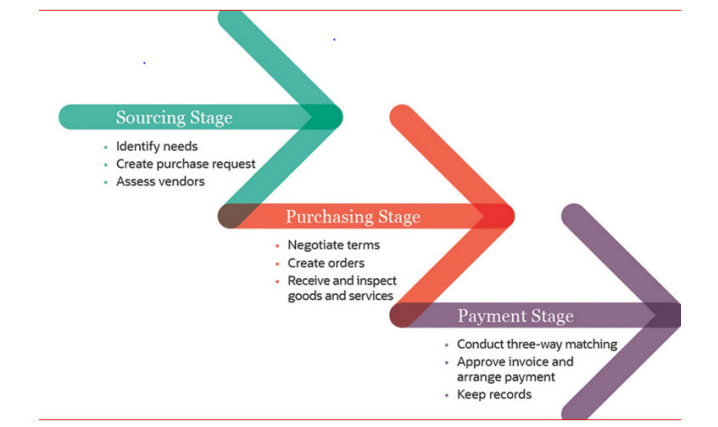
- Step 1: Needs Recognition
- Step 2: Purchase Requisition
- Step 3: Requisition review
- Step 4: Solicitation process
- Step 5: Evaluation and contract
- Step 6: Order management
- Step 7: Invoice approvals and disputes
- Step 8: Letter of inquiry
- Step 9: Quotation
- Step 10: The purchase order
- Step 11: Receipts of goods
- Step 12: Goods delivery note
- Step 13: Rejection or return of goods
- Step 14: Invoice
- Step 15: Payment
- Step 16: Recording of purchase
Step 1: Needs Recognition
The needs recognition stage of a procurement process enables businesses to sketch out an accurate plan for procuring goods and services in a timely manner and at a reasonable cost.
Step 2: Purchase Requisition
Purchase requisition are written or electronic documents raised by internal users/customers seeking the procurement team’s help to fulfill an existing need. It comprises key information that is required to procure the right goods, services, or works.
The format of purchase requisition
URUGWIRO MANUFACURING PLC
PURCHASES REQUISITION
No: ....................................
DATE:...............................
Dept/ Section:..............................
Please arrange to purchase the following items:

Step 3: Requisition review
The procurement process will officially commence only after the purchase requisition is approved and cross-check for budget availability. In the review stage, functional managers or department heads review the requisition package and double-check if there is a genuine need for the requested goods or service and verify whether necessary funding is available.
Approved purchase requests become purchase orders (POs), while rejected requests are sent back to the requisitioner with the reason for rejection. All these tasks can be handled by a software.
Step 4: Solicitation process
Once a requisition is approved and PO is generated, the procurement team will develop an individual procurement plan and sketch out a corresponding solicitation process. The scope of this individual solicitation plan depends ultimately on the complexity of the requirement.
Once the budget is approved, the procurement team forwards several requests for quotation (RFQ) to vendors with the intention to receive and compare bids to shortlist the perfect vendor.
Step 5: Evaluation and contract
Once the solicitation process is officially closed, the procurement team in conjunction with the evaluation committee will review and evaluate supplier quotations to determine which supplier will be the best fit to fulfill the existing need. Once a supplier or vendor is selected, the contract negotiation and signing are completed, and the purchase order is then forwarded to the vendor. A legally binding contract activates right after a vendor accepts a PO and acknowledges it.
Step 6: Order management
The vendor delivers the promised goods/services within the stipulated timeline. After receiving them, the purchaser examines the order and notifies the vendor of any issues with the received items.
Step 7: Invoice approvals and disputes
This is a crucial step in the procurement process. At this stage, a three-way matching between GRN, Supplier Invoice and PO is performed to check if you have received the order correctly and there aren’t any discrepancies. Once three-way matching is complete, the invoice is approved and forwarded to payment processing.
Step 8: Letter of inquiry
The letter of inquiry is a letter written by the purchasing department and sent to various suppliers requesting them some information concerning the prices, conditions and quality of goods which can be supplied.
Step 9: Quotation
Quotation is an offer to supply goods according to the terms and conditions stated. These terms and conditions include for what period the prices stated are valid, rates of discount offered, mode of delivery, terms of payments, etc. Quotations are received from different suppliers in response to letter of inquiry.
Step 10: The purchase order
A purchase order is a commercial document written and signed by buyer to be sent to a seller indicating merchandises or goods to be sold and the delivery and payment’s conditions.
After receiving the quotations, the purchasing department will select the supplier from whom the goods are to be bought.
Normally, the selected supplier is the one whose price is lowest or terms and conditions are most favorable. A purchase order indicates the description and quantity of goods ordered. If a purchase order is issued to supplier within a country then it may be called as “Local Purchase order” (L.P.O).
The format of purchase order

Step 11: Receipts of goods
It is also called Goods Received Note (GRN) that is a document issued by a receiver (buyer) of goods to record receiving of goods purchased or ordered. After receiving the purchase order, the supplier makes the arrangement to deliver those goods. On receipt of goods in the buying organization, a Goods Received Note is prepared. This document shows the name of the supplier, the details of goods received and so on.
The format of good received note
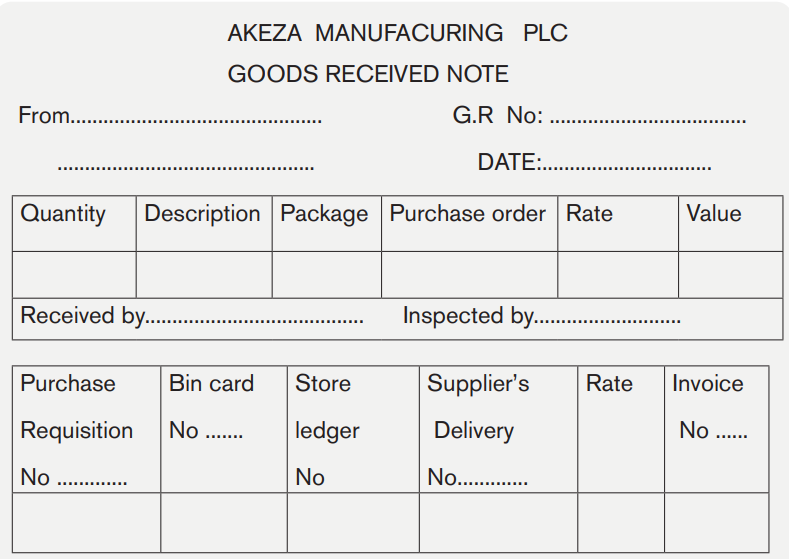
Step 12: Goods delivery note
It is a commercial document sent by the supplier together with goods. It proves that the goods have already been delivered to the buyer organization. If goods are being delivered through public transport, then an Advice Note may be prepared by the supplier and sent direct to the buying organization. The main purpose of an advice note is to inform to the buyer that the goods have been dispatched.
Step 13: Rejection or return of goods
If goods received do not match with specified quality or these goods are not according to description given in the purchase order then the receiving department can refuse to accept these goods. In this case, a Rejection Note may be prepared giving the reasons for rejection. If the goods are accepted first and these goods are returned at a later date then a Goods Returned Note may be prepared. This note contains the reasons for the return of those goods.
Step 14: Invoice
After delivering the goods, the supplier sends an invoice to the buying firm. Invoice is a document which gives the quantity, quality, unit price, total value of goods dispatched, any discount allowed, transport charges if any etc.
Step 15: Payment
After receiving the invoice, the buyer checks the amount due to the supplier. If he/she finds that amount owing to the supplier is correct then he makes arrangements to remit money or the cheque to the supplier. When money is received by the supplier from the buyer, he/she issues a receipt to him showing the details of cash or cheque received. These receipts are the proof of this thing that the money owing to seller has already been received by him.
Step 16: Recording of purchase
The goods purchased are recorded in the accounting books of organization. The entries in the cost accounts are made from the Goods Received Notes. The entries in the financial accounts are made from invoices. It is essential to reconcile the entries in the cost accounts with the entries in the financial accounts that will be learned by “Cost account” in senior six”.
* Component Parts of Procurement
While purchasing is the overarching process of obtaining necessary goods and services on behalf of an organization, procurement describes the activities involved in obtaining them. The procurement process in an organization is unique to its context and operations. Regardless of the uniqueness, every procurement management process consists of 3 Ps’, namely Process, People, and Paperwork.
a. People
The procurement process is generally initiated and authorized by people who are responsible for controlling all steps. In addition to procurement specialists, the people involved include other stakeholders, such as accountant payable and the business groups that request the goods and services. The number of people involved often depends on the value of the goods and services.
Examples:
People clarify the missing materials, goods or equipment in business
People plan for full line of procurement
People control the implementation of procurement
b. Process
An effective procurement process can help a company succeed by keeping costs down and ensuring supplies arrive when the business needs them. A well designed and methodical process helps to promote accuracy and timeliness because every person involved knows exactly what they need to accomplish and how long they have to complete the tasks. In contrast, a disorganized procurement process results in inefficiencies and potentially costly errors.
Example: Wrong procurement process leads to:
• Over payments that can impact the bottom line.
• Late payments negatively affect relationships with suppliers.
c. Paperwork
Itis important to maintain records for every stage of the procurement process and ensure they are easily accessible. These records act as a store of organizational knowledge about payment terms and supplier performance, helping the business maintain an efficient procurement process even if the procurement staff changes over time.
* Principles of procurement
These principles can be regarded as an ethical code of conduct that holds the business for their purchases. Some of the principles may also be beneficial to private-sector organizations not public institutions and vice versa; in other word the principles vary somewhat depending on the organization.
Value for money: The organization must manage funds efficiently and economically when procuring goods and services. This may include conducting cost-benefit analyses and risk assessments. Itis worth noting that low cost does not necessarily equate to greater value; characteristics such as quality and durability also factor into determining whether the purchase represents value for money.
Fairness: Procurement should not provide preferential treatment to individuals or suppliers. All bids should be assessed objectively, based on how well they meet the organization’s needs.
Competition: Organizations should seek competitive bids from multiple suppliers, unless there are specific reasons not to do so, such as a sole-source provider where the good or service is only available from a single vendor.
Efficiency: Procurement processes must be carried out efficiently to help maximize value and avoid delays.
Transparency: Organizations should make relevant procurement information available to everyone, including the public as well as suppliers. Information should be kept confidential only when there are legal or other valid reasons to do so.
Integrity: Those who practice public procurement should always strive to be perceived as trustworthy, reliable, honest and responsible. Funds must be used for their intended purpose and in the public interest.
Accountability: People involved in the procurement process are accountable for their actions and decisions. They are required to report procurement activities accurately, including any errors.
3.2.4 Sourcing and supply chain
Definition of Sourcing
According to the Chartered Institute of Procurement and Supply, sourcing seeks to find, evaluate, and engage suppliers to achieve cost savings and best value for goods and services which can be done through a tender process. Factors such as reliability, quality, flexibility, and capacity are considered in the tendering process alongside price.
Sourcing is the process of vetting, selecting, and managing suppliers who can provide the inputs an organization needs for day-to-day running. Sourcing is tasked with carrying out research, creating and executing strategy, defining quality and quantity metrics, and choosing suppliers that meet these criteria.
Definition of Supply chain
According to the Chartered Institute of Procurement and Supply, a supply chain is the activities required by the organisation to deliver goods or services to the consumer. A supply chain is a focus on the core activities within our organisation required to convert raw materials or component parts through to finished products or services.
A supply chain is a network between a company and its suppliers to produce and distribute a specific product or service. The entities in the supply chain include producers, vendors, warehouses, transportation companies, distribution centers, and retailers.
In a traditional manufacturing environment the activity of interfacing with suppliers is generally supported by “Procurement”, the materials will then pass through goods in warehouses (if products) through the manufacturing site and onto the finished goods warehouse, this activity is the core activity of “Operations
Management”, throughout the supply chain logistics will play an integral role in the movement of inbound materials and outbound goods in order to ensure the finished product flows downstream to our consumer.
The figure below demonstrates supply chain management:
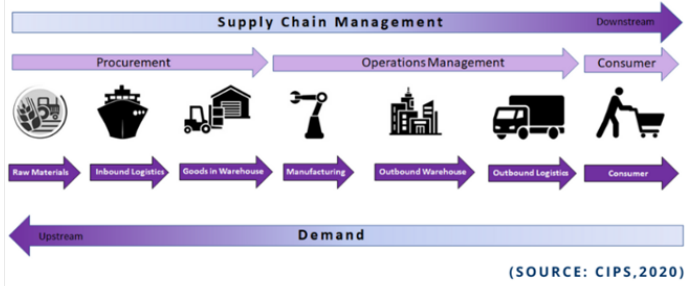
A supply chain can take on the form of a product based supply chain or that of a service, where services come together to offer an overall customer service as opposed to a finished product, an example of this would be the shipping of customers goods, staff, supply of vessel and fuel are all required in order to provide the shipping service to the consumer.
When our supply chain relates to that of our suppliers and consumers, we start to build a supply chain network, where we can then go onto understand the flow of both materials and information in a much more complex way.
* Stages Within a Supply Chain
In its simplest form the stages in a supply chain are summarized below:
• Logistics
• Operations
• Marketing and Sales
• Services
* Types of supply chain
For different business, the supply chain is a network process containing

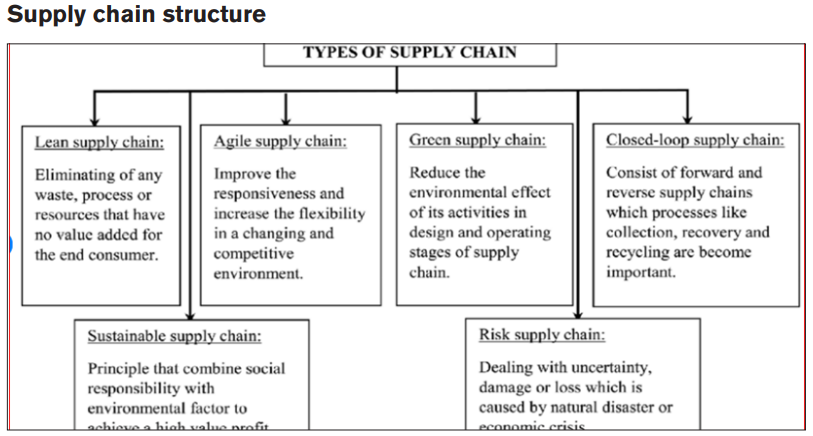
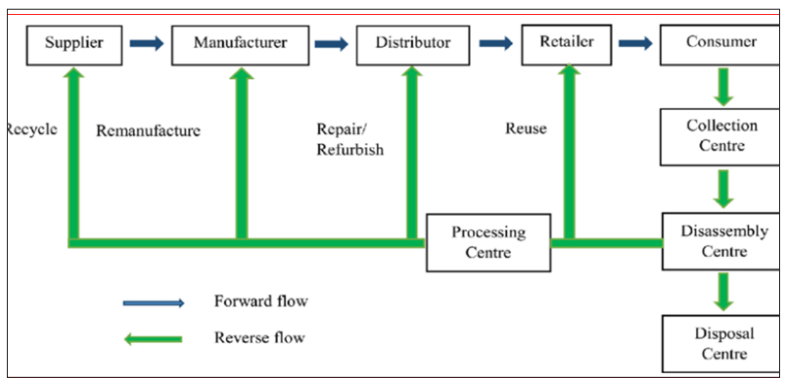
* Types of distribution
- Intensive Distribution
Intensive distribution aims to provide saturation coverage of the market by using all available outlets. For many products, total sales are directly linked to the number of outlets used (e.g., cigarettes, beer). Intensive distribution is usually required where customers have a range of acceptable brands to choose from. In other words, if one brand is not available, a customer will simply choose another.
This alternative involves all the possible outlets that can be used to distribute the product. This is particularly useful in products like soft drinks where distribution is a key success factor. Here, soft drink firms distribute their brands through multiple outlets to ensure their easy availability to the customer.
-Selective Distribution
Selective distribution involves a producer using a limited number of outlets in a geographical area to sell products. An advantage of this approach is that the producer can choose the most appropriate or best-performing outlets and focus effort (e.g., training) on them. Selective distribution works best when consumers are prepared to “shop around” – in other words – they have a preference for a particular brand or price and will search out the outlets that supply.
This alternative is the middle path approach to distribution. Here, the firm selects some outlets to distribute its products. This alternative helps focus the selling effort of manufacturing firms on a few outlets rather than dissipating it over countless marginal ones.
It also enables the firm to establish a good working relationship with channel members. Selective distribution can help the manufacturer gain optimum market coverage and more control but at a lesser cost than intensive distribution. Both existing and new firms are known to use this alternative.
- Exclusive Distribution
Exclusive distribution is an extreme form of selective distribution in which only one wholesaler, retailer or distributor is used in a specific geographical area.
When the firm distributes its brand through just one or two major outlets in the market, who exclusively deal in it and not all competing brands, it is said that the firm is using an exclusive distribution strategy. This is a common form of distribution in products and brands that seek a high prestigious image.
Typical examples are of designer ware, major domestic appliances and even automobiles. By granting exclusive distribution rights, the manufacturer hopes to have control over the intermediaries’ price, promotion, credit inventory and service policies. The firm also hopes to get the benefit of aggressive selling by such outlets.
3.2.5 Contracts
A contract is a legally binding agreement between two or more parties which can be enforced by law.
Example:
a) Job contract; before starting a job, the employer and employee make a contract. In this case there are two main parties and the law is now represented by official labor law because it is not possible to make a job contract which is against the labor law.
b) Procurement contracts—often called purchase contracts—are contracts that establish a legally binding relationship between buyers and sellers that protects both entities throughout the procurement process.
Establishing the foundation of the business relationship, procurement contracts set forth the parameters of the deal, including:
• Vendor selection
• Product selection
• Vetting
• Payment terms and conditions
• Contract negotiation
• Product management (ordering, payment, and delivery) And set the stage for a mutually satisfying business relationship overall.
The significance of the procurement contract
An effective procurement contract solidifies business relationships by protecting both the buyer and seller.
By including agreed-upon details — including the quality of the materials to be used, the parameters of the services to be provided, delivery times, fees, costs, etc. — procurement contacts provide a solid blueprint that allows both parties to collaborate confidently. In addition, procurement contracts allow businesses to diversify and use resources more effectively. Companies can outsource specific actions and processes to vendors who can fulfil their needs more cost effectively by using procurement contracts.
A business contract
It is a legal binding between two or more persons/ entities to perform an agreed business transaction and can be enforced by law. The day to-day running of the business involves making contractual obligations with suppliers, buyers etc.
* Forms of business contracts
Oral contract is an agreement between two or more parties by use of words. They are non-written contracts. They rely on the good faith of the parties but can be difficult to prove. Once the contract is verbal, the wittiness is mandatory and provides evidence.
Written contract is a contract documented on paper, signed by the contracting parties and witnessed by a third person (the witness).
* Parties of valid contract
For a valid contract the following elements must be considered:
- Intention to be bound by the contract
The two parties should have intended that their agreement be legal. Domestic agreements between husband and wife are not taken as valid.
- Offer and acceptance
There must be an offer and the two parties must lawfully come to acceptance leading to a valid contract. Until an offer is accepted, it is not a valid contract.
- Consideration/price
This is the price agreed upon by the parties to the contract and paid by one party for the benefit received or promise of the other parties.
- Capacity of the parties
The parties to the contract must have contractual capacity for the contract to be valid, i.e. should be sober/moderate, above 18years, not bankrupt, not insane, and properly registered.
- Free Consent
Parties to the contract must agree freely without any of the parties being forced to accept or enter the contract.
- Legality/lawful object
The object and the consideration of the contract must be legal and not contrary to the law and public policy.
- Possibility of performance
If the contract is impossible to be executed in itself either physically or legally, then such contract is not valid and cannot be enforced by law.
- Certainty
The terms of the contract must be clear and understandable for a contract to be valid. If the terms are vague or ambiguous, where even the court may not be able to tell what the parties agreed, then it will be declared invalid.
3.2.6 E-procurement
E-procurement, also known as electronic procurement or supplier exchange, is the purchase and sale of supplies, equipment, works, and services through a web interface or other networked system.
The technology is designed to centralize and automate interactions between an organization, customers, and other value chain partners to improve the speed and efficiency of procurement practices.
It boasts a suite of innovative features – all designed to bolster the efficiency, effectiveness, and total cost of procurement.
Benefit of E-procurement
E-Procurement offers significant benefits for your organization and the most common are listed below:
• Optimize spent by reducing maverick purchases.
• Seize discounts by combining orders and purchasing in volume.
• Increase overall transaction speed.
• Standardize the purchasing experience.
• Negotiate more favourable contracts with strategic suppliers.
• Strengthen supplier relationships.
• Safeguard against risk and supply chain disruption.
• Alleviate routine tasks so procurement teams can focus on strategic initiatives.
• Minimize fraudulent purchases.
Main functions of eProcurement
The primary functions of e-Procurement are far-reaching, offering a range of benefits for a company’s day-to-day operation and supply chain activities.
Below, we list the main functions of eProcurement for business:
• Automates processes to free up resources and reduce errors.
• Improves communication between stakeholders and partners to streamline the procurement cycle.
• Provides a single platform for all procurement activity, giving stakeholders and managers a centralized platform for managing and auditing.
• Offers real-time updates for vendors, management, stakeholders, and partners, as well as the chance to curate and store procurement data.
• Allows for streamlined negotiation between multiple partners and stakeholders.
Application activity 3.2
AMAHORO PLC is the manufacturing business of bread in Muhanga District. It is producing monthly 25,386,214 breads; 8,457,612 Cakes; 5,689,234 sandwiches. For producing all above products AMAHORO PLC purchases different items including wheat, sugar, kitchen oil, salt, water, gas, etc. From 2019 it faces the covid-19 negative impacts (challenges) including lack of materials, increase of price on market, increase of transport expenses leading to violating the verbal contract and high demand on market. You are nominated as manager of AMAHORO PLC with responsibility mainly of improving the process of production and achieve the satisfaction of customers.
1. What are the goods produced by AMAHORO PLC?
2. What are the elements/materials needed by AMAHORO PLC for production?
3. List the challenges facing the AMAHORO PLC nowadays.
4. Suggest the different solutions/strategies to use for overcoming the challenges.
5. What should be done for maintaining the suppliers for avoiding production interruption?
3.3 Labour
Activity 3.3
Every enterprise or organization must have a group of persons who are involved in producing channel or rendering the services. To achieve its objectives, each enterprise should have qualified workers (labor ) or employees who are offering services and must be necessarily paid some amount of money as compensation of his/her personnel efforts. Recall that like other expenses paid by the business or enterprise, the salaries or wages are the largest expenses incurred by a firm while the salaries amount is an expense to employer, it is an income to employees.
In other word, labor represents cost of services of human resources and it is the most valuable asset of an organization. Effective utilization of all resources of an organization depends on quality of its manpower. Labor is a living thing and it is the point which makes the main difference between labor and other elements of product cost. Labor is the most mobile factor of production. It shifts from uses to uses; not only in consideration of price but many psychological factors affecting job-satisfaction and motivation also contribute towards labor turnover.
1. What do you expect to be core elements of cost in production process?
2. Explain the stages of recruitment process.
3. List the challenges of labor recruitment.
4. Is always labor maintained /hold in the same organization?
3.3.1 Meaning of labour
Labour is defined as a group of workers who are under the authority and control of individual or group of individuals called employers entitled to an amount of money called remuneration after an elapsed unit of time (an hour, a day, a month, etc).
Or
Labour is the physical or mental effort expended in manufacturing a product or rendering a service.
3.3.2 Labor recruitment
a. Definition
It is the process of actively seeking out, finding, hiring and integrating new candidates for a specific position or job. The recruitment definition includes the entire hiring process, from inception to the individual recruit's integration into the company.
b. Recruitment stage/process
Employees have a direct effect on the success of an organisation. The different stages of recruitment and selection must be considered when choosing people to work within an organisation.
The following are steps involved in recruitment:
• Definition of a post • Definition of the candidate’s profile
• Identification of recruitment sources • Integration
• Recruitment campaign • Selection
• Pre-selection • Tests of selection
• Interview • Recruitment decision
• Implementation of recruitment means
Types of recruitment
- Internal recruitment
It refers to a recruiting method where managers turn to the existing employees to fill open position.
The advantages and disadvantages of internal recruitment.
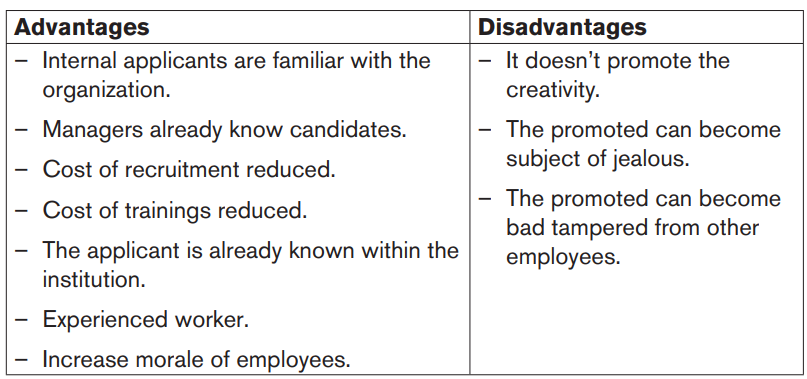
- External recruitment
It refers to a recruiting method where managers look outside the firm for people who have not worked at the firm before to fill open position.
The advantages and disadvantages of external recruitment
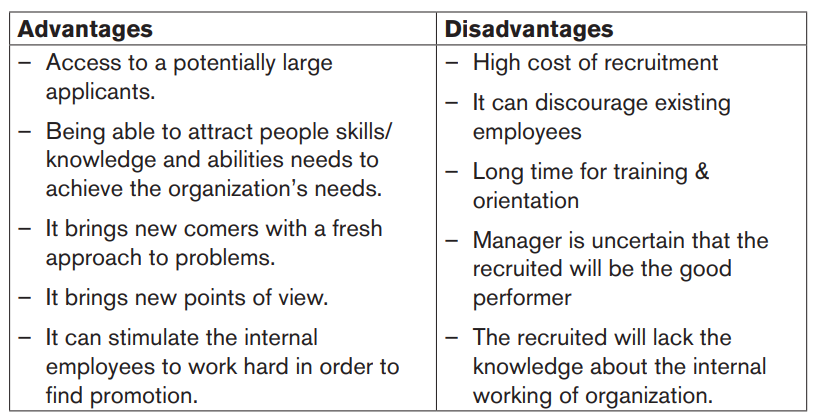
c. Factor to consider when recruiting an employee in an organization
• The nature of the job/task
• Skills and abilities required to do the job
• Size of the organization
• Age of the employee
• Working experience
• Cost of the employee
d. Importance of labour
• Labour is an essential and active factor of production. This is because the capital, land and organisation cannot produce goods and services independently.
• The gifts of nature will remain unused without labour. Only labour can utilise the natural resources more efficiently and can develop the economic well-being of the people which in turn improve the economic development of an economy.
• All other factors of production will remain without any use if there is no demand for goods from labour side. Only when there is demand for good, more goods will be produced to satisfy their demand and hence investment will be encouraged in this process.
• Labour is the main source of wealth of our economy.
e. Challenges of recruitment
• Organization policy can make recruitment complicated
• Recruitment agents may hire staff that are not aligned to the business needs
• It is costly
• It takes time to go through the recruitment process
3.3.4 Labor turnover
a. Definition of labor turnover
Labour turnover is the rate at which employees leave a business and this rate should be kept as low as possible. The cost of labour turnover can be divided into preventative and replacement costs.
b. The reasons for labour turnover
There are many reasons why employees will leave their job. It may be because they wish to go to work for another organisation. Alternatively, it may be for one of the following unavoidable reasons.
• Illness or accidents
• A family move away from the locality
• Marriage, pregnancy or difficulties with child care provision
• Retirement or death
In addition to the above examples, other causes of labour turnover are as follows:
• Paying a lower wage rate than is available elsewhere
• Requiring employees to work in unsafe or highly stressful conditions
• Requiring employees to work unsociable hours
• Poor relationships between management and staff
• Lack of opportunity for career enhancement
• Requiring employees to work in inaccessible places
• Discharging employees for misconduct, bad timekeeping or unsuitability
c. Measuring labour turnover
Labour turnover is a measure of the number of employees leaving/being recruited in a period of time (say one year) expressed as a percentage of the total labour force.

Example: Labour turnover
FL Ltd had a staff numbering 800 at the beginning of 20X1 and 1,200 at the end of that year. Four hundred employees resigned on 30 June and were immediately replaced by 400 new employees on 1 July. 400 extra employees were also recruited at that time.
What is the labour turnover rate?
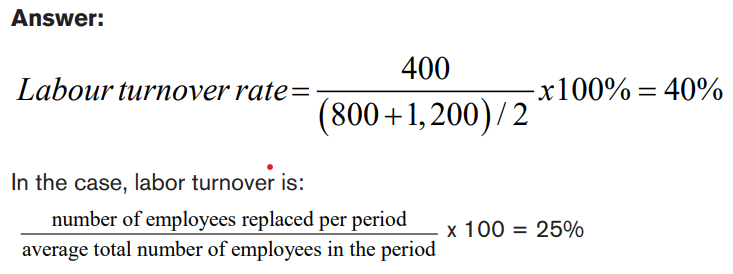
d. The prevention of high labour turnover
Labour turnover will be reduced by the following actions.
• Paying satisfactory wages
• Offering satisfactory hours and conditions of work
• Creating good relations between fellow workers, supervisors, and subordinates
• Offering good training schemes and a well-understood career or promotion ladder
• Improving the content of jobs to create job satisfaction
• Proper planning to avoid redundancies
• Investigating the cause of high labour turnover rates
Application activity 3.3 1.
1.Define the following terms:
a) Labor
b) Labor turnover
c) Labor turnover rate
d) Recruitment
2. Enumerate the challenges faced the recruitment process.
3. Why is important to business to avoid the labor turnover?
3.4 Cost
Activity 3.4
Management accountants help managers track performance of competitor on the key success factors. Competitive information serves as benchmark and alerts managers to market changes. Companies are always seeking to continuously improve their operations. These improvements include ameliorating the services delivery, increasing the quality of good, ameliorating the transport means, installing the online transactions and cost reduction on housing products. Sometimes, more fundamental changes in operations, such as redesigning a manufacturing process to reduce costs, may be necessary.
What would be the basic of process of production?
3.4.1 Definition of cost
Cost is the amount that a business incurs in order to make goods and/or provide services. Costs are important to business because they are the thing that drains away the profits made by a business.
Or
Cost is the monetary value of expenditures for supplies, services, labor, products, equipment and other items purchased for use by a business or other accounting entity.
Or
Cost is the value of economic resources used as a result of production of any commodity or performing any service.
3.4.2 Classification of cost
A business will incur many different types of cost from day to day. For accounting purposes it is useful to group or classify these costs. There are, however, several different ways of doing this.
Costs are recorded and analysed in accordance with the organisation's costing procedures. Below are classifications of costs:
a. Direct cost
A direct cost is a cost that can be directly attributed to a cost unit.
Example: Raw materials costs.
b. Indirect Costs
Indirect costs are costs that cannot be attributed directly to a cost unit but are initially attributed to a cost centre.
Example: wages, electricity.
c. Fixed Costs
Fixed costs are costs which are not affected by the level of activity.
Fixed costs are not affected by changes in production level. They remain the same in total whether no units or many units are produced. They are incurred in relation to a period of time rather than production level and are often referred to as period costs. This may include the rent of a factory or straight-line depreciation of plant and machinery.
In practical terms fixed costs are only truly fixed over the relevant range. For example, the rent of the factory will only remain constant provided that the level of activity is within the production capacity of the factory. If production levels increase above the capacity of the current factory, then more factory space must be rented thus increasing the rent cost for this level of production.
The relevant range of a fixed cost is the range of activity within which the cost does not change.
d. Variable Costs
A variable cost is a cost which varies in total directly with the volume of output. The variable cost per unit is the same amount for each unit produced.
Variable costs are costs that vary directly in line with changes in the volume of output (also known as the level of activity). Direct materials are often viewed as variable costs. For example, if 1kg of a material is needed for each cost unit then 100,000 kg will be required for 100,000 units of production and 500,000 kg for 500,000 units of production.
The total variable cost can be expressed as:
Total variable cost = Variable cost per unit × number of units
e. Semi-variable Costs
Semi-variable costs are costs which contain both fixed and variable components and so are partly affected by the level of activity.
Semi-variable costs (also known as semi-fixed costs) are costs that have a fixed element and a variable element. For example, a telephone bill includes a fixed element being the fixed line rental for the period and a variable element that will increase as the number of calls increase.
The total of a semi-variable cost can be expressed as:
Total cost = Fixed element + (variable cost per unit × number of units)
f. Step-fixed Costs
Step fixed costs are costs which are fixed in nature but only within certain levels of activity.
Step-fixed costs are costs that are fixed over a relatively small range of activity levels but then increase in steps when certain levels of activity are reached. For example, if one production supervisor is required for each 30,000 units of a product that is made then three supervisors are required for production of 90,000 units, four for production of 120,000 units, five for production up to 150,000 units and so on.
Step-fixed costs are really a fixed cost with a relatively short relevant range.
Application activity 3.4 1.
1. Define the term Cost.
2. Explain the types of cost according to behavior.
3.5 Expenses
Activity 3.5
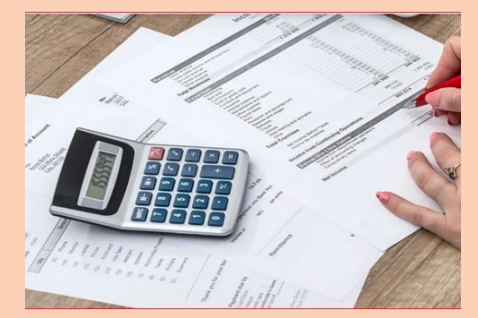
After analyzing the picture, give the function or the use of money from business.
3.5.1 Definition of expense:
An expense is the money that something costs someone or that someone needs to spend in order to do something. Example: Food paid.
Or
It can be again defined as an expenditure the benefits from which do not extend beyond the present. Example: Depreciation.
Or
It is expired cost. 3.5. 2
Types of expenses a.
Direct expense Direct expenses are expenses that are identifiable with each unit of production, such as patent royalties payable to the inventor of a new product or process.
b. Indirect expense
Indirect expenses are expenses that are not spent on individual units of production (eg rent and rates, electricity and telephone).
c. Joint expense
A joint expense is an expenditure that benefits more than one product, and for which it is not possible to separate the contribution to each product.
Often the expenses of an organisation are incurred by a number of cost centres jointly. For example, when the rent is paid for the factory this will be an expense of all the cost centres that are housed in the factory. In these cases the expense must be split between the relevant cost centres and this is known as apportionment of costs.
How the expense is split between the cost centres that have incurred it depends on the policies of the organisation, using a fair basis to determine the split. For example, with the rent expense this may be apportioned between the various factory cost centres according to the amount of floor space that each cost centre uses.
Application activity 3.5
1.Define the term expense.
2. Explain the types of expenses in organization.
3.6 Responsibility centres
Activity 3.6
IKIREZI PLC has started a poultry project two years ago with the aim of solving the problem of chicken meat in Rubavu town. When starting this business, IKIREZI PLC invested money and other types of assets to buy everything needed in his/her business. As long as investment goes on IKIREZI PLC purchased different materials including drinkers, mangers and motor vehicle. IKIREZI PLC also paid a rent of one year immediately.
At the beginning, IKIREZI PLC bought 700 chicks for Frw 1000 each, and those chicks had to be vaccinated after each seven days during the first 21 days. IKIREZI Company also purchased chicken foods and vitamins to make them grow quickly. Even if IKIREZI PLC made more efforts to make his/her business successful during full year, IKIREZI PLC forgot to record the money spent and money generated from sales that resulted to IKIREZI PLC‘s loss and dispute between IKIREZI PLC and his/her suppliers/ customers.
At the beginning of the second year, IKIREZI PLC took new measures to avoid the loss. Hence IKIREZI PLC decided to hire a professional accountant who will help manager to record all the accounting information about purchasing and selling. At the end of the second year, IKIREZI Company got profit and now IKIREZI PLC is predetermining to issue the shares on market.
1. What is the scenario above talking about?
2. What do you think is the main purpose of doing a business activity?
3. How do we call all of those activities that involve IKIREZI PLC in the purchasing of material and equipment?
4. What are the challenges that IKIREZI PLC faced in the 1st year of their business activity?
5. What was the answer to the challenge faced by IKIREZI PLC?
6. Suggest the responsibilities of hired accountant in IKIREZI PLC?. Structure how you do think this accountant will find the data to record?
3.6.1 Understanding responsibility centres
Responsibility centres are areas of the business for which costs or revenues are gathered and compared to budgets for control purposes. There are a variety of different types of responsibility centre depending upon the type of cost and/or revenue that the centre deals with.
A manufacturing business is likely to split naturally into a variety of different areas or departments.
Typical examples may be:
• Cutting
• Assembling
• Finishing
• Packing
• Warehouse
• Stores
• Maintenance
• Administration
• Selling and distribution
• Finance
The precise split of a business will depend upon its nature and the nature of its activities and transactions. However, the business is split, managers need to k now the costs and/or income of each department to be able to make decisions, plan operations and control the business.
3.6.2 Types of responsibility centres
a. Cost centre
A cost centre is an area of the business for which costs are to be gathered.
It can also be refined as an area of the business, maybe a department such as the factory or restaurant, for which costs are incurred that cannot be directly attributed to the cost units. These costs are known as indirect costs or overheads.
Some of these cost centres are areas of the business that produce the products that the business sells – cutting, assembling, finishing etc. These are known as production cost centres.
Other cost centres do not actually produce goods but are necessary to ensure that both production and sales take place – warehouse, stores, maintenance etc. These are known as service cost centres as they provide a necessary service to the production cost centres.
b. Revenue centre
A revenue centre is the business operation responsible for generating a company's sales revenue. These centres may be departments, divisions or business units.
c. Profit centre
A profit centre is an area of the business for which both revenues and costs can be ascertained and therefore a profit or loss for a period can be determined.
Application activity 3.6
1. Explain the term center as used in Management accounting.
2. Differentiate the main types of centers found in manufacturing business.
Skills Lab Activity 3
Interview a resourceful person such school bursar, or accountant about the procurement process using the following questions:
1. Why does the business/school get into the procurement process when they are buying materials?
2. What are the necessary documents involved in the procurement process?
3. What process does the business/school follow or go through during procurement?
4. Why does the business/school manager control a business inventory/ stock?
5. What advice would you give me as an inspiring accountant/entrepreneur to be on the procurement process?
End unit assessment 3
1. Define the following Management accounting terms:
a) Raw material
b) Labor cost
c) Revenue Centre
d) Procurement
e) Cost unit
2. How the raw material stock is different from working in progress stock?
3. Give the four reasons of labor turnover in a given organization.
4. Discuss the importance of procurement in manufacturing business.
5. Explain the limitations of procurement system.
6. Explain at least three types of costs.
7. List and explain the three documents used in procurement process.
8. Perfect recruitment process is a vital phase of organizational operations. Structure a case study, propose the possible procurement process and give comments on it can work properly.
UNIT 4: CODING DATA METHODS
Key unit competence: To identify different methods of coding data
Introductory activity
KAMALI is Accountant of BRUNO PLC located in Kayonza District. He has many responsibilities including preparation of payroll, availing the sufficient petty cash, registering new assets. He needs to know different kinds of asset based on its specification. It requires to mark the physical inventory items and fixed assets. To name those assets helps the management to know each type and category of materials being used in business. In naming of physical asset KAMALI needs to think a head how much each item is different from other. The purpose of coding is to avoid the ambiguity in materials use, their misuse and maintaining good services delivery. To mark assets, the accountant is required to use different methods for differentiating those assets and to be sure that all assets are marked.
After analyzing above statement discuss the coding system in organization.
4.1 Definition of coding
Activity 4.1
While naming different category of assets from BRUNO PLC, KAMALI needs to encrypt each item of asset appeared in business. a) What would KAMALI like to do from above statement?
b) What are the assets KAMALI needs to encrypt from the statement above?
Coding
It is the process of assigning an encryption to something for classification or identification.
Or
It is management method which uses symbols or numbers in order to represent specification or categories of item, so that it is easy to recognize, track and monitor them.
4.2 Object to be coded
Object to be coded in management system can link to different types of data inventory, inventory image, file, code of transportation boxes that will identify the category of item using alpha-numeric characters.
a. Current asset (inventory)
In storage installations, item coding enables efficient inventory organization, which reflects positively on all operations carried out in the warehouse. Therefore, each product should be identified upon receipt. The item coding process consists of explicitly identifying the goods with a code or sign.
b. Fixed asset (material and tools)
Fixed asset to be coded is tangible assets that are assets with a physical form and that holding value.
Example: Property, Plant &Equipment (PP&E) include:
• Vehicle in truck . Filing cabinet
• Bookcases . Laptop
• Photocopy machine . Chair
• Printer machine . Desk
• Office furniture
Note: Coding depends on internal business organization procedures.
An example of a coding structure for BRUNO Ltd:


Application activity 4.1
Visit or invite any worker(s) from your school or community, accountant, local leader. Ask him/her how to code school materials and observe component of code, as a student of coding some asset, come up with items of asset and inventory to be coded in business solve the question of similar physical asset in company.
Identify correctly items to be coded in fixed assets and current asset?
4.3 Methods of coding
Activity 4.3
Thamar is a business woman specialized in merchandizing business of telephones and operating at Musanze District. In registering of new telephones, her accountant needs to code those telephones before being sold and stored. In this case he/she can use different methods for differentiating those telephones and to be sure that all telephones bought are coded and there is theft telephones and missing.
1. Suggest certain techniques to be used in coding.
2. From the above scenario, why is it necessary to code the telephones?
There are many coding systems in practice and each business will choose one that suits its transactions and operations. Probably the two most common methods are numeric coding and alpha-numeric coding.
Purely alphabetic systems may also be used, but these tend to be rather confusing to use.
a. Alphabetical
An alphabetic coding system uses just letters to code.
Examples: Income accounts AAA1-DZZ
Expenses accounts EAA-JZZ
Assets accounts KAA- PZZ
Liabilities accounts QAA-VZZ
Capital accounts WAA-ZZZ
Once the coding system has been set up, when entries are made in, for instance, the cashbooks are referenced to the general ledger then the reference would include the account code for that ledger account.
b. Mnemonic coding system
Under this method, different alphabets from material names are used to help the memory. It is very simple.
Examples: PU for Purchase, SA for Sales, RE for Rent c. Numerical coding A numerical coding system is where the code is entirely numerical.
Examples: The general ledger codes:
Income accounts: 0001-0199
Expenses accounts: 0200-0499
Assets accounts: 0500- 0699
Liabilities accounts: 0500-0699
Capital accounts: 0900-1000
There do not all to be used but the coding system must be flexible enough to allow for new accounts to be opened up.
d. The decimal method
Under this method, whole and decimal numbers are used for the identification of different materials.
Examples:
2.- Administration overheads
2.1- Salary of staff
2.11-Rent, rates& taxes
2.12-Account and audit
2.2-Stationery
2.21 – Printing
2.22- Insurance
e. Alpha-numeric
An alpha-numeric coding system uses a mixture of letters and numbers to code.
Examples:
Income accounts: A001-200
Expenses accounts: B001-200
Assets accounts: C001- 200
Liabilities accounts: D001-200
Capital accounts: E001-200
f. Colour codification
As the name indicates, under this method, colour codes are used to differentiate elements. This method can be applied to codify metal, cables, small component parts, drums of oil, and various other items if the colours are not too complicate. This method affords as reads means of identification on sight.
Example: In the case of metal:
Green for Iron
Blue for Steel
Red for Copper
Black for Aluminium
White for zinc
This method is simple but lacks flexibility. That is to say, when the number of store item increases, it is not possible to expand number of colour.
A coding system does not have to be structured entirely on any one of the above systems. It can mix the various features according to the items which need to be coded.
Characteristics of Good coding system
• Items each have a unique code
• Codes are uniform in structure and length.
4.4 Importance of coding materials in business
- Avoidance of length description
Codification helps in avoiding the use of length names and description for store item, thus saving time and energy.
- Accurate identification of stores
Codification assists in the accurate and convenient identification of store items. Easy identification of store items saves time and cost involved in store handling.
- Convenience in issue of materials Codification of store items on scientific lines helps in eliminating the possibility of errors in issue of materials. It also increases the efficiency of store-keeping staff.
- Maintenance of secrecy
Every manufacturing concern, owing to necessity, attempts to keep its production activities and processes a secret. Codification of store items helps in maintaining secrecy in production activities.
- Simplification of stores accounting
Codification of store items helps in maintaining accurate records since scientific codification enables systematic.
- Prevention of duplication
Codification prevents the duplication of items. As all similar items in the store are grouped together. When an item is coded once, it is not assigned an alternative name.
- Convenient in preparing Materials forms
Codification of store items makes the preparation of various forms and documents relating to stores easy and convenient (e.g., Bill of Materials, Purchase of Requisitions, and Material Requisition).
- Other advantages
Codification helps in the standardization of store items and in the reduction in their variety. It also helps in reducing storage cost and increasing efficiency
4.5 Principles of coding
Activity 4.5
KAMALI is Accountant of BRUNO PLC located in Kayonza District. He has many responsibilities including preparation of payroll, availing the sufficient petty cash, registering new assets. He needs to know different kinds of asset based on its specification. It requires to mark the physical inventory items and fixed assets. To name those assets helps the management to know each type and category of materials being used in business. to name physical assets, KAMALI needs to think a head on how much each item is different from other. The purpose of coding is to avoid the ambiguity in material use, their misuse and maintaining good services delivery. To mark assets, the accountant is required to use different methods for differentiating those assets and to be sure that all assets are marked.
What will KAMALI use as guidelines in coding the materials?
a. Exclusive
It means each item should have only one code and this code should not be used for any other item.
b. Certainty
Code numbers used for different types of material should be certain and there should be no possibility of confusion.
c. Elasticity
It means the code number should be arranged in such a way that it must be possible to include new items if need arises.
d. Brevity
Code should be as brief as possible.
e. Memorization
It should be easy and possible to remember and understand the code numbers.
f. Uniformity
Codes should be of equal length and of the same structure.
Application activity 4.5
Briefly explain principle of coding?
Skills Lab Activity 4
1. By visiting the store of food at school with the storekeeper, student codes different products in the store, and responds to the following questions: a) What is the role of coding? b) What are the methods used in coding?
2. By visiting the store of food at school, student codes different product in the store. The teacher clarifies the methods, and importance of coding.
End unit assessment 4
Answer the following questions:
1. Define the term code as used in the field of logistics.
2. Correctly identify 10 objects to be coded in company.
3. Correctly identify five materials on which we can use color codification.
UNIT 5: MATERIAL AND INVENTORY MANAGEMENT IN ORGANIZATION
Key unit competence: Explain different types of material inventory and methods used in inventory management.
Introductory activity.
KARENZI is permanent worker at MINIMEX PLC. He is carrying the duties on the post of storekeeper, in Muhanga town at branch of MINIMEX PLC. He is a well-known storekeeper, with the best quality of merchandises. Recently, he started to process maize and produce flour. This new business was very demanding to an extent that KARENZI was obliged to hire a worker responsible for shop management, as he caters for maize processing business. KARENZI became very busy, to the level that he was no longer able to carry out inventory control, monitor changes in the marketplace and cater for the needs of customers. So, designing, planning, executing, controlling, and monitoring of supply chain activities became responsibilities of the new employee. As the new employee was not experienced about procurement procedures, stock and inventory management as well as proper identification and follow up on clients’ needs, there were often missing items in the stock, despite raised need by clients. On the other hand, a considerable number of goods were rejected due to the expiration and damage. After a while, KARENZI just noticed that the number of customers and his revenues were decreasing.
Questions
1. What are the main reasons of poor inventory control from the above story?
2. Identify main effects of poor stock management and inventory control on a given business.
3. Diagnose the advice you can give to KARENZI and his employee in relation to proper business management?
4. As a storekeeper, what can you do in order to avoid incidents related to poor stock management in your business? Draw an easy and efficient strategy to use.
5.1 Types of material inventory
Activity 5.1
The store department is responsible to receive the materials and hold these materials until they are required by the production department. Store record is also maintained by the store department manager adequately. The location of stores department should be properly arranged and it should be nearer to production department. The layout of stores department requires careful planning; shelves and tables must be situated in clearly defined lines so that it is easy to access all parts of stores. The stores can vary according to organization scale that leads to one central warehouse, sub stores on the basis of imprest inventory.
After analyzing above scenario, you are required to answer the following question:
1. Define material inventory.
2. Identify correctly features of good store-keeping.
3. What are the types of stores included in above statement.
5.1.1 Definition of material inventory
It refers to all items, goods and materials held by a business to be manufactured in specific period of time. Material inventory again is one component of a manufacture’s inventory. Sometime referred as store or raw materials.
5.1.2 Stockkeeping
Stockkeeping (also known as storekeeping) is the task of maintaining safe custody of all items of supplies, raw materials, finished parts, purchased parts, and other items. These items are held in a storeroom for which a storekeeper acts as a trustee. As such, storekeeping can be defined as process of receiving and distributing stores or supplies.
5.1.3 Features of effective and good storekeeping
• Immediate location materials of materials
• Speed receipt and issue of materials.
• Keeping correct and up to date record of receipt, issues and stock balance of materials.
• Full identification of all materials at all times.
• Production of materials against pilferage and deterioration.
• Protection of materials against fire and theft
• Economic use of storage space
5.1.4 Types of stocks
The main types of stores are:
• Centralized stores
• Decentralized stores
• Imprest stores
a. Centralized stores
When materials are kept in one central warehouse and these are issued from one central point only then it is called centralized stores.
Advantages of central stores
• Smaller stocks are needed
• Less staff required
• Paper work is reduced
• Control of stock level is easy and simple
• Better security measures can be introduced
• Less risk of duplication of items in stock
Disadvantages of central stores
• Higher transport cost and increased handling
• Possibility of breakdown of transport vehicle
• Inconvenience to personnel
• Increasing fire risk
• Delay in supplying material to branches and departments at distant places.
b. Decentralized stores
When materials are held and issued by sub stores in each department or branch then it is called as decentralized store. Advantages of centralized store are disadvantages of decentralized stores. Similarly the disadvantages of centralized stores are advantages of decentralized stores.
c. Imprest stores
In this case, all materials are received by central stores but some items of these materials are issued to some sub stores on the basis of imprest system.
A specific quantity of each item material is issued to the storekeeper of specific department at the start of any period.
At the end of this period the storekeeper will inform about the number of items of any material used for production. This specific number of item of the materials will be replaced at the start of the next period.
For examples, if the consumption of materials 0521 is 2000 units per week then imprest of 2000 units is arranged. If at the end of any specific week the storekeeper remains with 150 units then will get 1850 more units of this material at the start of the following week. In this case, the imprest quantity 2000 units will be restored.
Note1: Types of inventories
It is the inventory for the manufacturing and selling of goods. Based on the value addition or stage of completion, the manufacturing inventories are further classified into 3 types of inventory.
• Raw materials: these are the materials or goods purchased by the manufacturer.
• Work –in –progress: These are the partly processed raw materials lying on the production floor. They may or may not be saleable. It is also known as semi-finished goods. It is unavoidable inventory that almost any manufacturing business creates.
• Inventory of Finished goods: These are the final products after the manufacturing process of raw materials. They are sold in market.
Note2: MRO Goods (Maintenance, Repairs, and Operating supplies):
They are also called consumables in various parts of the world. They are like a support function. Maintenance and repairs goods like, lubricating oil, bolt, nuts, are used in the machine that will be used for production. Operating supplies means the stationery used for operating business.
5.1.5 Store records documents
Stock records refer to documents which give information regarding the movement of stock.
This includes records kept both for accounts and costing purposes.
There are individual accounts for each item of stock on which are recorded all receipts and issues of that particular item and thus the balance at hand.
Stock records are maintained in the following documents
• Store ledger card
• Bin card
• Goods delivery note
• Goods received note
* Store ledger
Store ledger is similar to the financial ledger. It shows the quantities and monetary value of the stock items. There are three main columns in this ledger. These are for receipts, issues, and stock balance in hand.
Goods received are entered in receipt column showing quantity, price, and value. Issue column shows the goods issued by the storekeeper. This column also has three columns for showing quantity, price and value. In the balance column, the quantity and value of remaining stock are shown. It may be kept in stores department or costing department.
The format of store ledger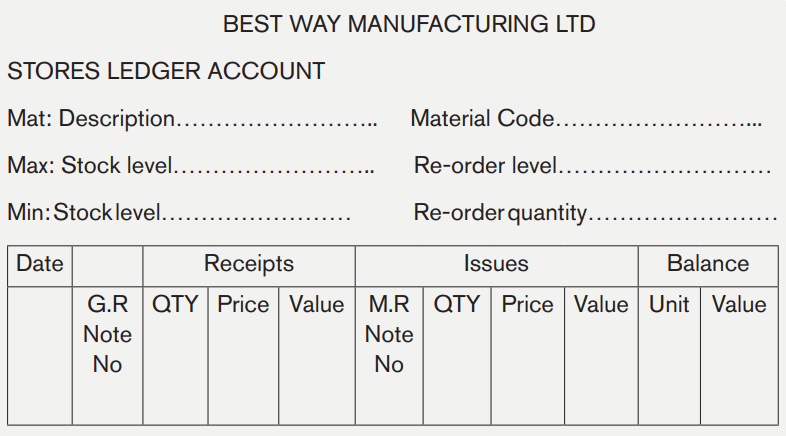
* Bin Card
A bin card is stiff card which is kept where the relevant stock item is stored. Goods or materials are stored I in drawers, shelves or racks. A separate bin card is used for each kind of goods. The bin shows the details of all receipts, issues and stock in hand. The bin card helps to find out the number of various items in stores on particular date. The final column of bin card shows the quantity in hand. The money values of the stores items are not recorded on the bin cards.
The format of a bin card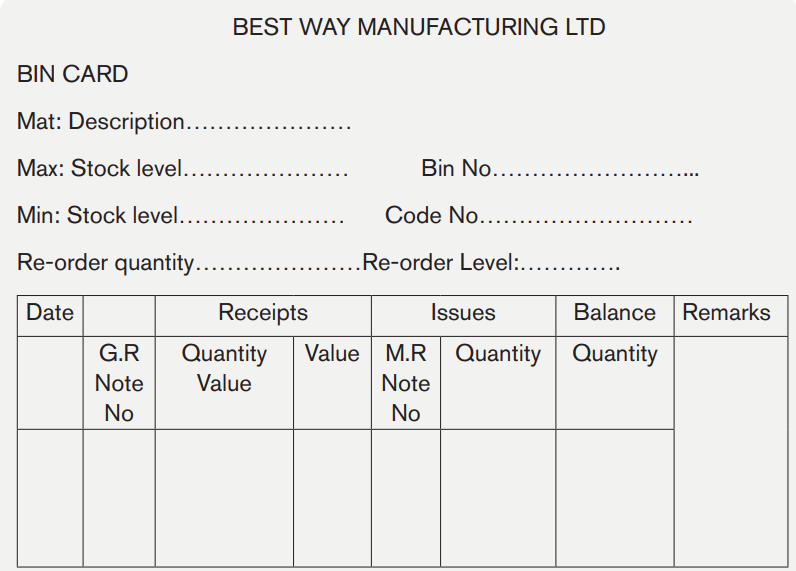
Note3: G.R. No: Goods Received Note Number
M.R No: Material Requisition Note Number
* Delivery note
The delivery note is a document issued by a seller and sent to a buyer at the moment of the delivery goods, when the invoice will be sent subsequently. It serves to verify if the goods delivered are conforming to the order.
It gives the details of the transactions the date delivery, the name of the buyer, the nature and quantity of delivered goods. The name of the transport’s means.
Format of delivery note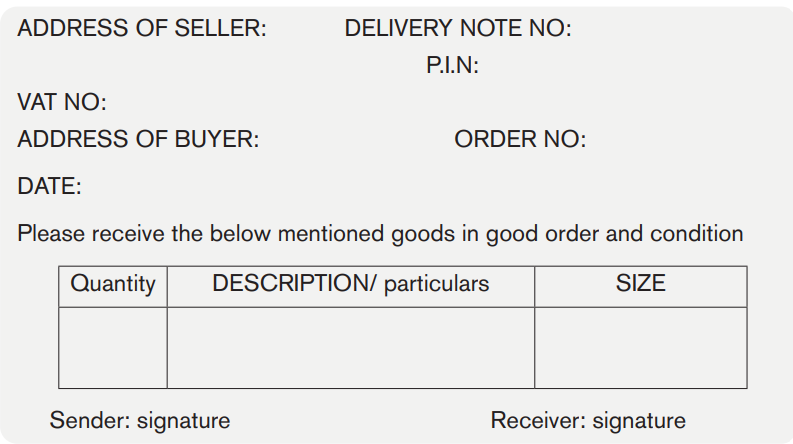
Eg: On October 19th 2007, BAMBA Ltd had ordered the following goods (items):
• 12 tyres Michelin xzx – size: 165 – 13
• 12 inner tubes size 13D – 9
After receiving this purchased order, BESTWAY MANUFACTURING LTD, supplier makes the arrangement to deliver those goods.
Required: Present the delivery note on October 19th, 2008
Answer:
BESTWAY MANUFACTURING LTD
P.O BOX 54781 NAIROBI
DELIVERY NOTE No:……..
TO BAMBA Ltd
P.O BOX ………
Date: October 19th, 2008

* GOODS RECEIVED NOTES (GRN)
The Good Received notes is a document issued by a receiver (buyer) of goods to record receiving of goods purchased.
For goods control purposes, a receiving is used to record the details of receiving goods:
• The date of receiving;
• The name and the address of supplier
• The delivery order number
• The description of goods purchased
Eg: Mr KALIMANDA received the following goods from his supplier, Mr KAMANA Ali from Muhanga :
- 16 Items mobile phone No 1100, Nokia Ref 1460
- 2 Desktop, Ref No 1461
- 3 Laptop HP Vista, Ref No 628
- Date of delivery: December 14th, 2008
- Number of delivery Order 174 / 2008
Required: prepare the goods received Notes (GRN)
Answer
MR. KALIMANDA
P.O BOX 3752 MUHANGA
GOODS RECEIVED NOTE
FROM: MR KAMANA Alii G.R.N. No: ……
Date: December 14th, 2008

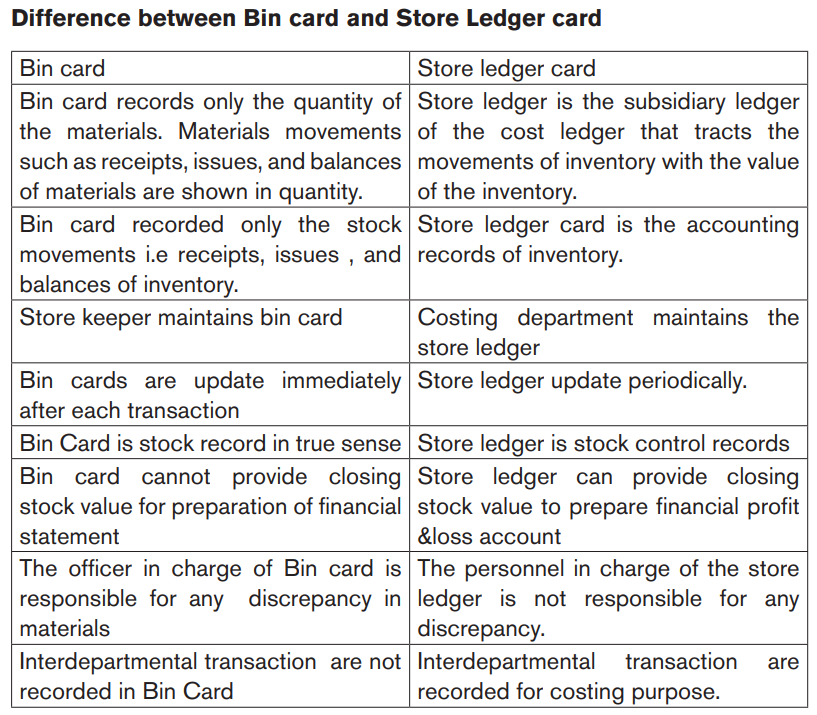
Discrepancies between Bin card balances and store ledger card balance.
Same documents are used to make entry in bin card and store ledger card. So, the balance (quantity) in the two records should be equal.
Any discrepancy may be raised due to the following reasons:
• Wrong entry made in both record
• Wrong casting in balance in any or both Missing of documents.
• Bin cards and store ledger should be reconciling independently on the basis of documents that were used for entry.
5.1.6 Conditions of good stocking
For storing goods in stock the following rules should be taken into account:
• Most frequently used materials are placed nearest the entrance.
• Big and very heavy materials are placed nearest the entrance at the bottom so that they should be movable easily.
• Small and easier movable goods are placed up of the storage hall
• Goods storage Hall must be equipped with necessary conditions for goods stored (not to be very hot, cold….)
Application activity 5.1
Athanasie is a trader in Ruhango district with a very big business. She uses different documents in her daily activities for instance for incoming product, transferring goods from one department to other departments, store ledger cards helping her in controlling inventory.
a) Mention three (3) documents that can be used for proper stock management in Athanasie’s business.
b) Identify five(5) elements include in store ledger cards.
c) Fill the following table :

5.2 Stock control
Activity 5.2
UWERA is Director Manager of Remera Rukoma Hospital having a big number of customers who normally come at different time of intervals which owns different materials and assets used in provision of its services. Since, these assets have to be kept safely for the purpose of costumers’ satisfaction, and realization of organization’s objectives. Stock control is a great important function in any business organization. Hence, Remera Rukoma Hospital would like to hire a professional accountant to control stock including various goods e.g. raw materials, semi-finished goods and finished goods, equipment, components, office stationery, goods purchased for resale etc.
Stock control means making sure that the business has the right quantity of goods, in the right place and at the right time. Stock level must be either too high or too low since there is factors affecting stock levels. Since, these properties have to be kept securely for the purpose of client’s satisfaction, and realization of organization’s objectives. Some documents and books are required to maintain stock control management.
1. With the above statement:
a) What is stock control?
b) Mention factors that affect stock level.
c) Mention types of material stocks.
5.2.1 Definition of stock control
Inventory/stock control is the regulation of inventory levels, which includes putting a value to the amounts of inventory issued and remaining. Inventory control also includes ordering, purchasing, receiving, and storing goods.
5.2.2 Objectives of stock control
• To ensure the availability of goods when required.
• To account for the goods which have been purchased.
• To reduce storage cost as much as possible.
• To minimise the risk of deterioration, wastages and theft.
• To maintain accurate records.
• To avoid over-stocking and under-stocking.
5.2.3 Inventory system
An inventory management system (or inventory system) is the process by which you track your goods throughout your entire supply chain, from purchasing to production to end sales. It governs how you approach inventory management for your business.
Stocktaking involves counting the physical inventory on hand at a certain date and then checking this against the balance shown in the clerical records. There are two methods of carrying out this process.
a. Periodic inventory
This is usually carried out annually and the objective is to count all items of inventory on a specific date.
b. Continuous inventory
This involves counting and checking several inventory items on a regular basis so that each item is checked at least once a year, and valuable items can be checked more frequently. This has several advantages over periodic stocktaking. It is less disruptive, less prone to error, and achieves greater control.
5.2.4 Stock levels
Stock control levels can be calculated to maintain inventories at the optimum level. The three critical control levels are reorder level, minimum level, and maximum level.
Based on an analysis of past inventory usage and delivery times, inventory control levels can be calculated and used to maintain inventory at their optimum level (in other words, a level which minimises costs). These levels will determine 'when to order' and 'how many to order'.
a. Maximum stock level
The maximum level also acts as a warning level to signal to management that inventories are reaching a potentially wasteful level.
Maximum level = reorder level + reorder quantity – (minimum usage x minimum lead time)
b. Minimum stock level
The minimum level is a warning level to draw management attention to the fact that inventories are approaching a dangerously low level and that stockouts are possible.
Minimum level = reorder level – (average usage x average lead time)
c. Reorder Level
When inventories reach the reorder level, an order should be placed to replenish inventories. The reorder level is determined by considering:
• The maximum usage
• The maximum lead time
The maximum lead time is the time between placing an order with a supplier, and the inventory becoming available for use. Reorder level = maximum usage x maximum lead time
d. Reorder Quantity
This is the quantity of inventory which is to be ordered when inventory reaches the reorder level. If it is set to minimise the total costs associated with holding and ordering inventory, then it is known as the economic order quantity.
e. Average stock level
The formula for the average inventory level assumes that inventory levels fluctuate evenly between the minimum (or safety) inventory level and the highest possible inventory level (the amount of inventory immediately after an order is received, ie safety inventory + reorder quantity).
Average inventory= safety inventory + ½ reorder quantity.
5.2.5 Factors affecting stock levels
a. Economic order quantity (EOQ)
The economic order quantity (EOQ) is the order quantity which minimises inventory costs.
Economic order theory assumes that the average inventory held is equal to one half of the reorder quantity (although, if an organisation maintains some sort of buffer or safety inventory then average inventory = buffer inventory + half of the reorder quantity). We have seen that there are certain costs associated with holding inventory. These costs tend to increase with the level of inventories, and so could be reduced by ordering smaller amounts from suppliers each time.
On the other hand, as we have seen, there are costs associated with ordering from suppliers:
documentation, telephone calls, payment of invoices, receiving goods into stores and so on. These costs tend to increase if small orders are placed, because a larger number of orders would then be needed for a given annual demand.
where

Ch = cost of holding one unit of inventory for one time period
C0 = cost of ordering a consignment from a supplier
D = demand during the time period
Example:
A company has an annual demand for material of 25,000 tons per annum. The cost price per ton is FRW 2,000 and stock holding is 25% per annum of the stock value. Delivery cost per batch is FRW400.
Required:
Calculate the economic order quantity.
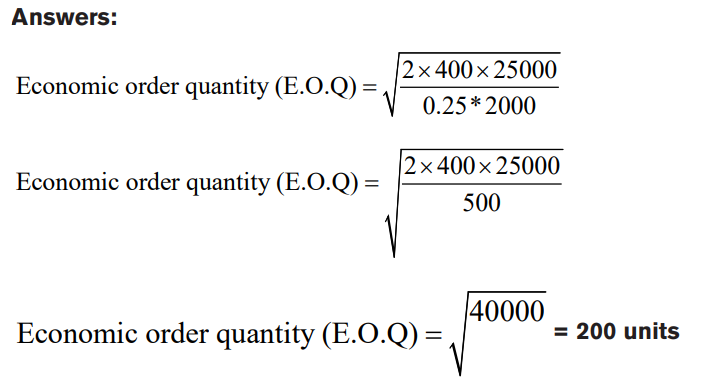
It means that 200 units must be purchased at one time. If the batch size is more than or less than 200 units, the stock holding, and ordering costs will be higher.
b. Reorder quantity
This is the quantity of inventory which is to be ordered when inventory reaches the reorder level. If it is set to minimise the total costs associated with holding and ordering inventory, then it is known as the economic order quantity.
c. Availability of materials
If an item of material is easily available through out of the year, the stock level should be low and vice versa.d. Lead time
Lead time means the period between the date of order and the date of delivery.
If lead time is more the stock must be maintained at higher level and vice versa.
e. Stock holding cost
Stock holding cost means the cost of keeping the material into stores. If stock holding cost is high, then stock level must be low and vice versa.
f. Consumption
If any item of materials is consumed in greater quantity, then it must be maintained at high level and vice versa.
g. Trade
discount Sometimes, the suppliers offer higher discounts for large quantities. If the benefit of trade discount is greater than stock holding cost, then stock level must be maintained at higher level.
h. Durability of material
The stock level of durable goods can be maintained at higher level but in case of perishable goods like fish and fruit, it should be kept at low level.
Stock levels structure
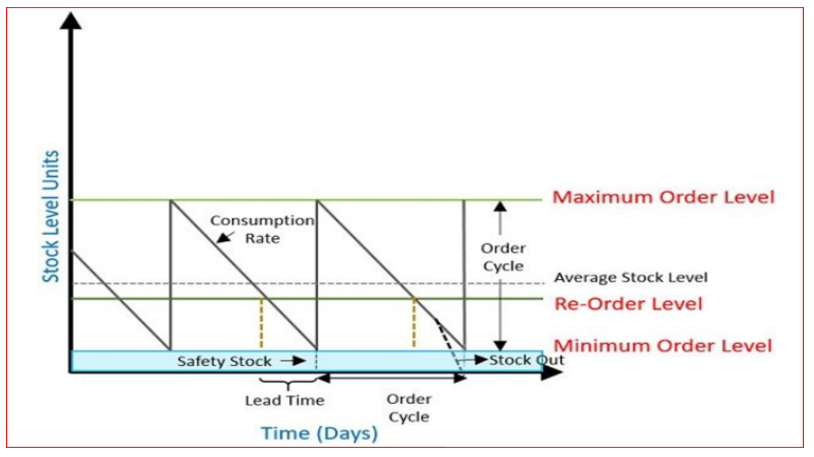
Application activity 5.2
1. The consumption of certain type of ball bearing is 120 pieces per
year. The price of each ball bearing is Frw 100. If the inventory
carrying cost is 20% per annum and the cost of procurement per
order is Frw 20.
a) Calculate economic ordering quantity.
2. In respect of material, the following data are available:
Budgeted consumption:
Maximum = 300 units per month, lead time=2-4
Minimum =50 unit per month, storage costs are 25% p.a of average stock value
Average = 150 units per month, ordering cost are Frw 2 per order
Annual = 1800 units price per unit of material is Frw 0.32
Calculate:
a) Re- order level,
b) Minimum level
c) Maximum level
d) Average stock level
e) Re –order or economic order quantity
5.3 Methods of material issues
Activity 5.3
MUHIRE is a business person, selling different Agri-products from NGOMA District. During the month of July, 2019 his purchases and sales is extracted from the ledgers books and presented from the following store ledger card.
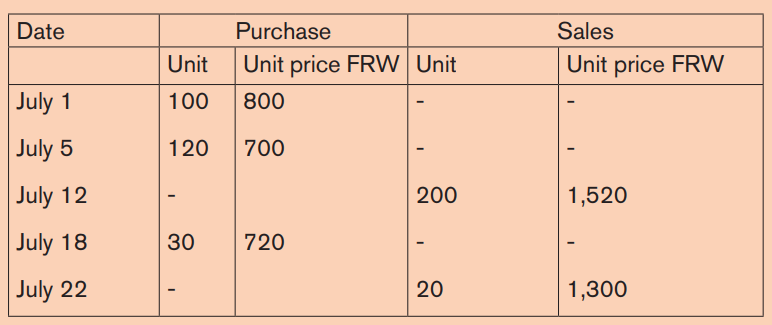
Required: After analyzing the store ledger card from MUHIRE business documents, suggest the methods to be used by his accountant for material issues.
5.3.1 Introduction
The sole point of holding inventories is so that they can be used to make products. This means that they must be issued from stores to production departments. This transaction will be initiated by production that will complete a materials requisition note and pass it to the warehouse.
MATERIALS REQUISITION

Foreman:
The stores department will locate the inventory, withdraw the amount required and update the bin card as appropriate. The stores ledger account will also be updated.
If the amount of materials required is overestimated the excess should be put back into store accompanied by a materials returned note. The form in our illustration is almost identical to a requisition note. In practice it would be wise to colour code the two documents (one white, one yellow, say) to prevent confusion.
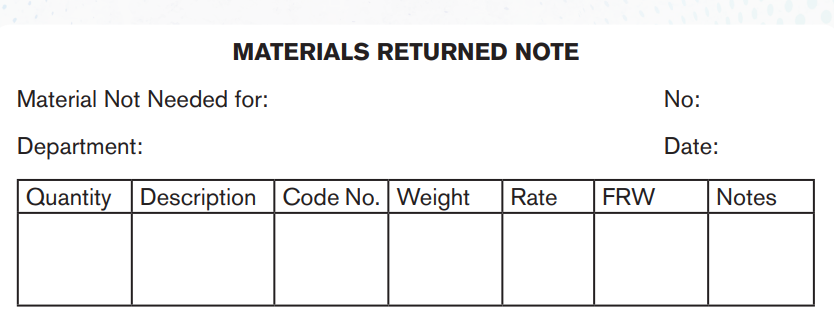
Foreman:
There may be occasions when materials already issued but not required for one job can be used for another job in progress. In this case there is no point in returning the materials to the warehouse. Instead, a materials transfer note can be raised. This prevents one job being charged with too many materials and another with too little.
You will note that all the forms shown above have spaces for cost information (that is, monetary values). This will be inserted either by the stores department or in costing, depending upon how the system is organized.
5.3.2 Methods of material issue
Materials issued from inventory can be valued using several methods such as FIFO, LIFO and weighted average methods.
a. First In First Out (FIFO)
FIFO (first in, first out) is an inventory valuation method that assumes that items purchased earliest are issued first. Inventory on hand is valued at the latest prices, issues are costed at the earliest relevant prices.
First in, first out (FIFO) assumes that the first items bought are the first items issued.
So:
• Items issued are costed at the earliest invoice prices related to the inventory held, working forwards through to the later prices, and
• Inventory on hand is valued at the latest prices, working back.
FIFO is most appropriate in businesses where the oldest items are actually issued first, which is the case with perishable goods such as food, but actually this is a very popular method in many types of business.
Note that in a time of rising prices generally, FIFO values inventory at the highest amounts. This leads to a high value of closing inventory at the end of an accounting period, which can make that period's profit look better.
The advantages and disadvantages of the FIFO method are as follows.
a. Advantages
i) It is a logical pricing method which probably represents what is physically happening: in practice the oldest inventory is likely to be used first.
ii) It is easy to understand and explain to managers.
iii) The closing inventory value can be near to a valuation based on the cost of replacing the inventory.
b. Disadvantages
i) FIFO can be cumbersome to operate because of the need to identify each batch of material separately.
ii) Managers may find it difficult to compare costs and make decisions when they are charged with varying prices for the same materials.
a. Last In, Fist Out (LIFO)
LIFO (last in, first out) is an inventory valuation method that assumes that items purchased latest are issued first. Inventory on hand is valued at the earliest relevant prices and issues are costed at the latest prices.
Last in, first out (LIFO) is the opposite of FIFO: it assumes that the last items bought are the first items issued. So:
• Items issued are costed at the latest invoice prices, working backwards through to the earlier prices, and
• Inventory on hand is valued at the earliest prices related to the inventory held, working forward.
LIFO is appropriate if new deliveries are physically piled on top of existing inventories, and goods issued are picked from the top of the pile. In fact, from a financial accounting point of view, LIFO is not a permitted method of inventory valuation, so in practice it is rarely seen.
Note that in times of general price inflation, LIFO means a lower value of inventory at the end of a period than FIFO, so that period's profit tends to look worse.
The advantages and disadvantages of the LIFO method are as follows.
a. Advantages
i) Inventories are issued at a price which is close to current market value. This is not the case with FIFO when there is a high rate of inflation.
ii) Managers are continually aware of recent costs when making decisions, because the costs being charged to their department or products will be current costs.
b. Disadvantages
i) The method can be cumbersome to operate because it sometimes results in several batches being only part-used in the inventory records before another batch is received.
ii) LIFO is often the opposite of what is physically happening and can therefore be difficult to explain to managers.
iii) As with FIFO, decision making can be difficult because of the variations in prices.
b. Simple price average (SPA)
A simple price average of all consignments in stock is calculated on average price issued to value materials issued. When the first consignment is exhausted then the price of that consignment is eliminated, and simple average of remaining price is calculated and so on.
In case of simple average method, quantities are not taken into consideration.
This method is simple, but it is difficult to determine which price should be taken to calculate the average. Under this method, the price is not the actual cost of the material so profit or loss arises out of each issue and is difficult to account for it.
c. Weighted average (WA)
Weighted average means weighted average price. Under this method, the total value of goods in stock divided by the number of units of stock. The resultant figure is weighted average price.
This method is simple and logical, but it is not close to current value of goods. Under this method also, profit or loss may arise on the materials issued.

WA is most appropriate if inventories received at different times are mixed when they are stored, for example chemicals stored in a vat, but again in practice this is a common method of valuation whatever the nature of the inventory.
When prices are generally rising, WA distorts period profits less than FIFO or LIFO, since it uses an average of the prices at which the actual inventory was purchased.
The advantages and disadvantages of weighted average pricing are as follows.
a. Advantages
i) Fluctuations in prices are smoothed out, making it easier to use the data for decision making.
ii) It is easier to administer than FIFO and LIFO, because there is no need to identify each batch separately.
b. Disadvantages
i) The resulting issue price is rarely an actual price that has been paid and can run to several decimal places.
ii) Prices tend to lag a little behind current market values when there is gradual inflation.
d. Base stock
Under this method, a fixed quantity is carried as base stock. It is as summed that a fixed minimum stock of the material is always carried at original cost. The minimum stock is known as base stock because it is kept for emergencies. The stock is not allowed to fall below this level.
Base stock method is similar to the FIFO method because after deducting the base stock figure, the remaining issues are valued at FIFO basis. This method has these same advantages and disadvantages which are of the FIFO method.
e. Replacement cost (RC)
Under this method, material issues are valued at replacement cost or market value. It means that materials issued are valued according to cost incurred replace those materials.
This method ensures the valuation of material issues at materials at market or current prices.
This method is logical but it is difficult to ascertain the price of next purchase. In this case, also, profit and loss arises as result of material issues.
f. Standard price (SP)
Standard price means predetermined price. A standard price is ascertained taking into consideration several factors. The factors consumption material expected changes in the price of the material and so on. Under this method, all material issues are valued at standard price.
This method is simple, stable and provides a check on the efficiency of the enterprise.
The main drawbacks of this method are disregard of actual price changes and differences between actual cost and standard cost. In this case also, profit or loss arises. The transactions in example 1 are recorded under standard price method in a stores ledger cards.
Example: FIFO, LIFO, and weighted average pricing methods
The following transactions should be considered to demonstrate FIFO, LIFO, and weighted average pricing methods.
TRANSACTIONS DURING MAY 20X3
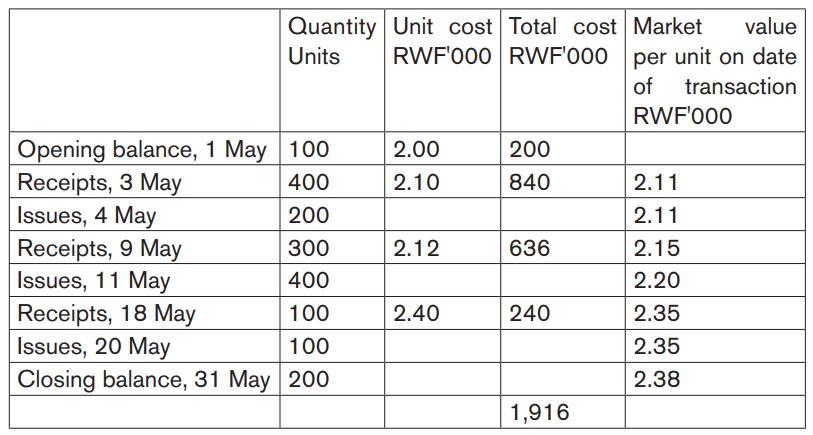
a. Using FIFO
FIFO assumes that materials are issued out of inventory in the order in which they were delivered into inventory: issues are priced at the cost of the earliest delivery remaining in inventory.
Using FIFO, the cost of issues and the closing inventory value in the example would be as follows:


* The cost of materials issued plus the value of closing inventory equals the cost of purchases plus the value of opening inventory (RWF1,916,000).
* The market price of purchased materials is rising dramatically. In a period of inflation, there is a tendency with FIFO for materials to be issued at a cost lower than the current market value, although closing inventories tend to be valued at a cost approximating to current market value.
b. Using LIFO
LIFO assumes that materials are issued out of inventory in the reverse order to which they were delivered: the most recent deliveries are issued before earlier ones and are priced accordingly.
Using LIFO, the cost of issues and the closing inventory value in the example above would be as follows:
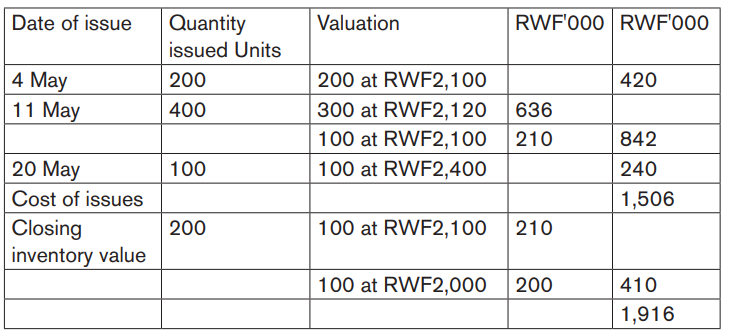
Notes
a) The cost of materials issued plus the value of closing inventory equals the cost of purchases plus the value of opening inventory (RWF1,916,000).
b) In a period of inflation there is a tendency with LIFO for the following to occur.
i) Materials are issued at a price which approximates to current market value.
ii) Closing inventories become undervalued when compared to market value.
c. Using Weighted Average Pricing Methods
The cumulative weighted average pricing method calculates a weighted average price for all units in inventory. Issues are priced at this average cost, and the balance of inventory remaining would have the same unit valuation. The average price is determined by dividing the total cost by the total number of units.
A new weighted average price is calculated whenever a new delivery of materials into store is received. This is the key feature of cumulative weighted average pricing.
In our example, issue costs and closing inventory values would be as follows:
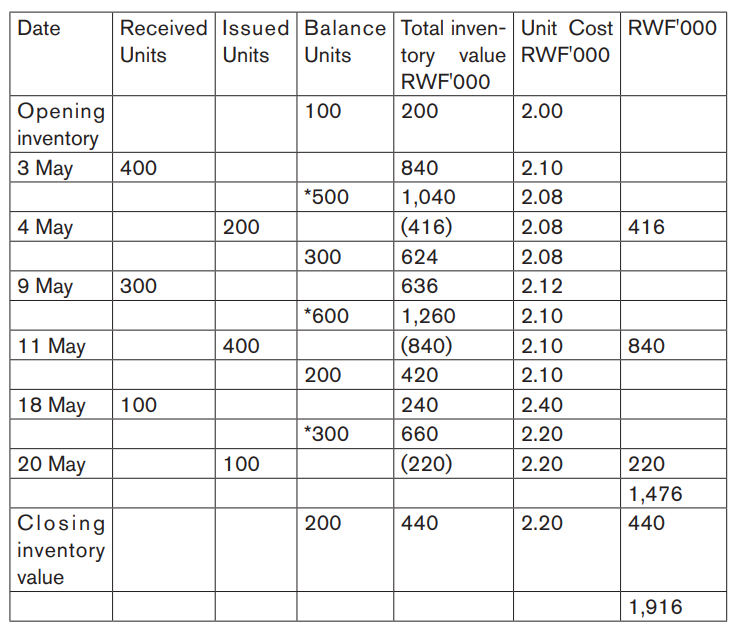
* A new inventory value per unit is calculated whenever a new receipt of materials occurs.
Notes
a) The cost of materials issued plus the value of closing inventory equals the cost of purchases plus the value of opening inventory (RWF1,916,000).
b) In a period of inflation, using the cumulative weighted average pricing system, the value of material issues will rise gradually, but will tend to lag a little behind the current market value at the date of issue. Closing inventory values will also be a little below current market value.
Application activity 5.3
What are the different methods of material issues to be used in Muhire business shop?
Skills Lab Activity 5
Have a resource person (Accountant of School) to share with students about:
a) Payroll process and ask students to prepare the payrolls,
b) The payment methods of payroll preparation at home / in club then let students present their findings.
End unit assessment 5
MUHIRE is a business person, selling different Agri-products from Ngoma District. During the month of July, 2019 his purchases and sales is extracted from the ledgers books and presented from the following store ledger card.
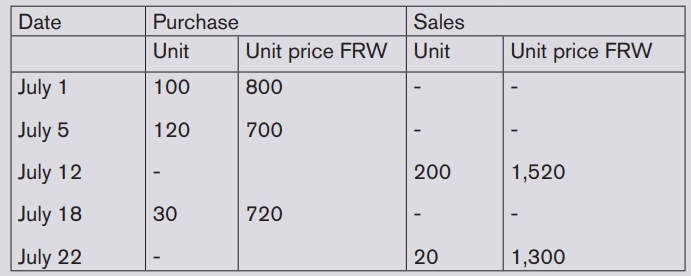
Required:
Prepare stock valuation card using:
i) LIFO method store card
Q2. Identify correctly two disadvantages of using LIFO valuation
UNIT 6: THE METHODS OF CALCULATING LABOUR PAYMENT
Key unit competence: Calculate labor payment
Introductory activity
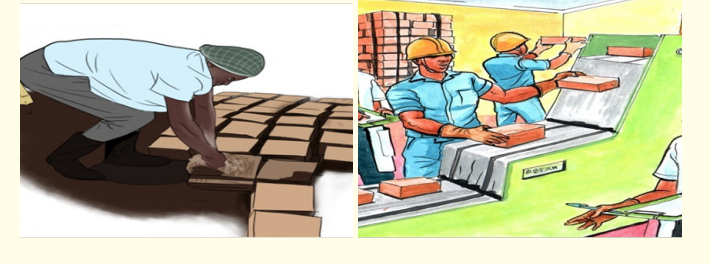
After analyzing the above picture answer the following questions :
1. What is about the picture?
2. What is the difference between works done by these employees from picture?
3. Do you think these people working in this industry will gain the same salary? If yes or not explain.
4. What are the reasons behind these people stand-up and writing?
5. What do you think may be the basic elements that may help them to know the salary of each employee?
6. When can we say that any employee is working overtime?
7. What the company may do when an employee uses abnormal time or produces more items than expected or finishes the work before the time expected?
6.1 Definition of terms used in labor management

Question
1. Analyze the alphabets in the above cross-cutting letters and find the concepts related to labor.
a. Labour
Labour is the physical or mental effort expended in manufacturing a product. Labour is defined as a group of workers who are under the authority and control of individual or group of individuals called employers entitled to an amount of money called remuneration after an elapsed unit of time (an hour, a day, a month, etc).
b. Labour costing
Labour cost is the price paid for using human resources. The compensation paid to employees who engage in production related activities represents factory labour cost.
Labour costs can be determined according to some prior agreement, the amount of time worked, or the quantity or quality of work done.
Labour costs could be said to include any or all the following items:
• The gross amount due to an employee
• Employer benefit contributions (payments made by an employer towards employees' pensions and other benefits)
• Amounts paid to recruit labour
• Amounts paid for staff welfare
• Training costs
• The costs of benefits like company cars
There are three ways in which labour costs can be determined.
a) According to some prior agreement, for example an annual fixed salary for work.
b) According to the amount of time worked, based on an hourly rate.
c) According to the amount and/or quality of work done ('piecework' or performance-based remuneration).
Payment for many occupations is by a combination of methods (a) and (b). There will be a basic wage or salary which is agreed when the appointment is made. There will be a set number of hours per week during which the employee is expected to be available for work. There will be extra payments for time worked over and above the set hours, or deductions for time when the employee is not available beyond an agreed limit.
c. Wage
A wage is a payment usually of money for labor or services usually according to contract and on an hourly, daily, or piecework basis.
d. Salary
A salary is a fixed amount of money or compensation paid to an employee by an employer in return for work performed. Salary is commonly paid in fixed interval, for example, monthly payments.
Employees on a monthly salary are paid one-twelfth of their agreed annual salary each month. Overtime, bonuses, and commissions on sales, for example, can be paid on top of this. Salaries tend to relate to indirect cost such as office staff and factory supervisors. In the service sector, though, many salaried staff are a direct cost of providing the service, such as solicitors and accountants.
Example:
Didier works in the sales office of a food distribution company. His contract of employment specifies a 1,820-hour year and an annual salary of FRW 840,000 per year. Any hours worked in excess of the contractual weekly amount are paid at Didier's basic time-rate. In the month of November he works a total of 15 hours overtime.
Didier's gross wage for November is his basic wage plus overtime:

In this case, we had to work out a basic hourly time-rate by dividing the annual salary by the total number of contractual hours in a year under the contract. This was then used to work out how much Didier could be paid for overtime
e. Overtime
Overtime is the amount of time someone works beyond normal working hours. The term is also used for the pay received for this time.
If an employee works for more hours than the basic daily requirement many organizations pay an extra amount. The overtime payment may simply be at the basic rate. If an employee earns RWF5,000 an hour he will get an extra RWF5,000 for every hour worked in addition to the basic hours. If he earns RWF10,000,000 a year an hourly rate can be calculated by multiplying the basic hours per day by the normal number of days worked per week by the 52 weeks in the year. For example, 7 hours x 5 days x 52 weeks = 1,820 hours and the hourly rate is approximately RWF5,490.
Overtime can also be paid at a premium rate. You will hear expressions like 'time and a third', 'time and a half' and so on. This means that the hourly rate for overtime hours is (1 + 1/3)x basic rate or (1 + 1/2) x basic rate.
Overtime premium is the additional cost of overtime hours above the basic time-rate for those hours.
Example:
Eustache Manzi's total overtime in the case of Olive Ltd is RWF2,400. This comprises two elements:
a) The basic element is the basic wage at the basic time-rate × additional hours worked, in this case 4 hours × RWF450 = RWF1,800.
b) The overtime premium is the extra paid on top of the basic rate for the additional hours worked.
In this case the hourly premium is RWF450 × 1/3 = RWF150. The total overtime premium is therefore 4 hours × RWF150 = RWF600. It is this amount that some businesses may treat as an indirect cost, with the remainder of gross wage – RWF17,550 – treated as direct cost.
Note, however, that if the overtime is worked at the request of a customer so that an order can be completed within a certain time, the overtime premium is a direct cost of that particular order.
f. Idle time
When the employees are paid on the basis of time rate system, normally there will be a difference between the time for which the employees are paid and the time actually spent by them in production. The difference is termed as idle time, therefore, represents, the loss of time for which the company pays wages to the employees but obtains no benefits or work from them (i.e, from employees). It is, therefore, necessary to minimize the idle time, it is necessary to understand the reasons for idle time.
In many jobs there are times when, through no fault of their own, employees cannot get on with their work. A machine may break down or there may simply be a temporary shortage of work.
Idle time has a cost because employees will still be paid their basic wage or salary for these unproductive hours and so there should be a record of idle time. This may simply comprise an entry on time sheets coded to 'idle time' generally, or separate idle timecards may be prepared. A supervisor might enter the time of a stoppage, its cause, its duration, and the employees made idle on an idle time record card. Each stoppage should have a separate reference number which can be entered on time sheets or job cards as appropriate.
A useful ratio for the control of idle time is the idle time ratio.

This ratio is useful because it shows the proportion of available hours which were lost because of idle time.
• Reasons for idle time
Normal causes
• Time required for going from factory gate to workplace
• Time taken to take up the day’s work
• Lapse of time between the completion of one job and the commencement of another job
• Time required for setting up of the machine
• Time taken for personal needs
• Time lost on account of normal tiredness, etc.
Abnormal causes
• Break-down of machinery on account of inefficiency of repairs and maintenance staff
• Power failure
• Shortage of raw materials on account of inefficiency of the purchase and /or store department
• Non-availability of proper instructions
• Waiting for tools,
• Strikes, lockouts, etc.
In order to minimize the idle time expenses, proper preventive steps should be taken as listed below.
- Proper and systematic plan for all the works in hand in such a way that the employees complete them in sequential order and do not waste time in waiting for getting the work.
- Proper and adequate instructions should be given to the employees on time so that the employees do not waste time for non-availability of instructions.
- Raw materials should be made available to the employees, and regular repairs and maintenance of plant and machinery should be undertaken to avoid the loss of productive hours on account non-availability of raw materials and break down of plant and machinery.
g. Idle capacity
Idle capacity is the remaining amount of capacity left in a company after productive capacity and protective capacity have been eliminated from consideration.
Productive capacity is that portion of a work centre’s total capacity needed to process currently schedule production, while protective capacity is additional capacity held in reserve to ensure that sufficient quantity of parts can be manufactured to adequately feed the bottleneck operation.
h. Basic salary
Basic salary or pay refers to the amount of money that an employee receives prior to any extras being added or payments deducted. It excludes bonuses, over time pay or any other potential compensation from an employer. The whole amount of basic salary is part of the take home salary.
Levels of basic pay are ultimately decided by senior management who will take into account what other employers are paying for similar work, what they consider the work to be worth, how easy it is to recruit labour and any agreements with trade unions.
The basic pay due to an individual worker will be mentioned in his or her letter of appointment and included in his or her contract of employment. The main on going record, however, will probably be kept on an employee record card held in the personnel department. This will also show subsequent increases in the wage rate or salary level and much other information.
Much of the information on the employee record card is confidential and there is no need for staff in the payroll department or the costing department to know about it.
Ideally, therefore, details of basic pay for all employees are compiled on separate lists which are given to payroll and costing. A fresh list should be issued whenever the pay rates are revised.
In a computerised wage system, the basic rates are usually part of a database, and payroll and costing are only able to access information that is relevant to their tasks. Costing, for example, does not need to know the names of individual employees: in fact it is more efficient for workers to be coded according to the department they work in and the type of work that they do.
i. Allowance
Allowance is any monetary benefit offered by the employer to his/her employees for meeting expenditures, over and above the basic salary. The employers offer various kinds of additional benefits in monetary terms to their employees over and above the basic salary, which are known as salary allowances.
j. Gross pay (gross salary)
Gross salary is the term used to describe all the money an employee has made working for the company. It is the salary which is without any deductions like income tax, medical insurance etc. Gross salary is however, inclusive of bonuses, overtime pay, holiday pay, and other differential. Some of the components of gross salary include basic salary, house rent allowance, transport allowance, communication etc.
k. Net salary
Net salary, or more commonly referred to as a take home salary, is the income that an employee actually takes home after tax, provident fund and other such as deduction are subtracted from it. Net salary is usually lower than gross salary. It can be equal in case where income tax is zero (0) and when the salary is less than the government tax slab limits.
i. Pay slip
Payslip or salary slip is a document record that employers give to employees each time they receive their earnings. The payslip mainly informs the employee of the gross pay, deductions done and the remaining net pay. The payslip also provides evidence of earnings and proof of employment.
m. Payroll
Payroll is a list of all employees showing the details of their gross wages, deduction, and net wages due to them. The payment list provides an efficient way to review all payments that have been established for a specific account. The payment list which is displayed in alphabetical order, allows for additional payments to be added.
n. Remittance slip
Remittance slip is a document sent with payment to the employees, giving him the details of what invoices are being paid and credits, if any being taken and it shows the net pay (salary, wage) of an employee. (It is used in the process of sending money to the employees at distance either by using an e-mail address or another kind of transfer).
o. Bonus
Bonus is a sum of money added to a person’s wage or salary as a reward for good performance.
To increase the productivity of employees, an employer will often set up a bonus scheme whereby the employee can earn additional pay over and above their basic wage if they work more efficiently. Bonus schemes may be on an individual basis or for a group of employees if they all work together on a particular task.
The bonus payment is usually charged as part of the cost of labour for the cost centre although some organizations include it as an expense/overhead for the relevant cost centre.
Application activity 6.1
1. What do you understand by labor cost?
2. Discuss the differences between wages and salary.
3. Match words in column A with their meanings in column B. Use each letter only once and write it in the blank space provided.
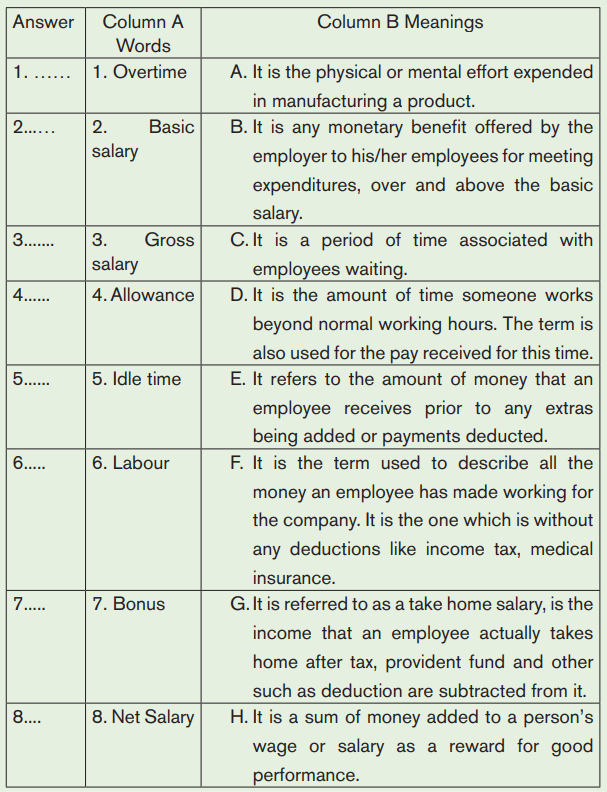
6.2 Objectives of the labor cost accounting
Cost accounting for labor has five primary objectives:
• Determination of labor costs in the cost of product or service
• Reporting labor costs for planning and control
• Reporting labor costs for decision making
• Setting standards of cost for the purpose of control and provision of relevant data for planning of manpower requirements
• To maintain the efficiency in the process of manufacturing any product.
6.3. Documents used in labor management
Activity 6.3
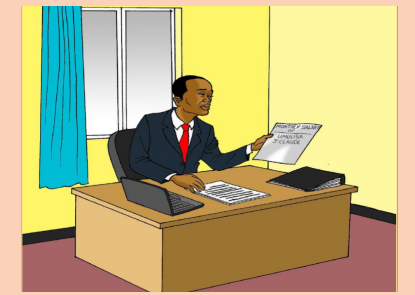
Analyze the above picture then answer the following questions:
1. What is about the picture?
2. What do you see on the top documents?
3. According to what you see on the top documents, what do you think those documents are about?
a. Clock cards (timecards)
The document that shows the number of hours worked by each employee. Wages are paid monthly to workers on hourly basis. Their hours worked are recorded on clock cards issued to them. These clock cards contain the information regarding names, clock numbers, and the time an employee enters and leaves the work place, hours worked on different dates of the month and 145 so on. From these cards, the numbers of hours worked showing normal time and over time are transferred to the payroll. If magnetic cards are used the time clock data for each worker is sent electronically to the time keeping department via the computer.
Illustrative Example
The time card for the week ending on 30th June 2022, for SEMUHUNGU Alexis working in SULFO PLC is presented below:
NAME: SEMUHUNGU Alexis
N0:01
Week ending June, 2022

The above time card shows that SEMUHUNGU Alexis, worked nine regular hours per day and he worked all the five week days. This means the total regular hours worked by Alexis is 45 hours per week and the total extra hours are 6 hours as it is shown in the above table (Three hours on Monday, two hours on Wednesday, one hour on Thursday).
b. Contract
A labour contract is a legal agreement that establishes the rules that govern the relationship between an employer and employee. Also known as labour agreement, a labour contract is binding legal agreement that establishes the rules and regulations that will govern the relationship between an employer and an employee.
c. Piecework ticket
This is the document which provides the information regarding the number of items produced by each worker. These are for those workers who are paid according to work completed.
d. Employee personal card
This provides the information regarding the wage rate etc. Employee personal card contains different columns which are used to record some specific figures; one line is used for one worker. The names of workers are arranged alphabetically or according to the serial numbers of their clock cards.
Application activity 6.3
1. Match documents in column A with their meanings in column B. Use each letter only once and write it in the blank space provided.
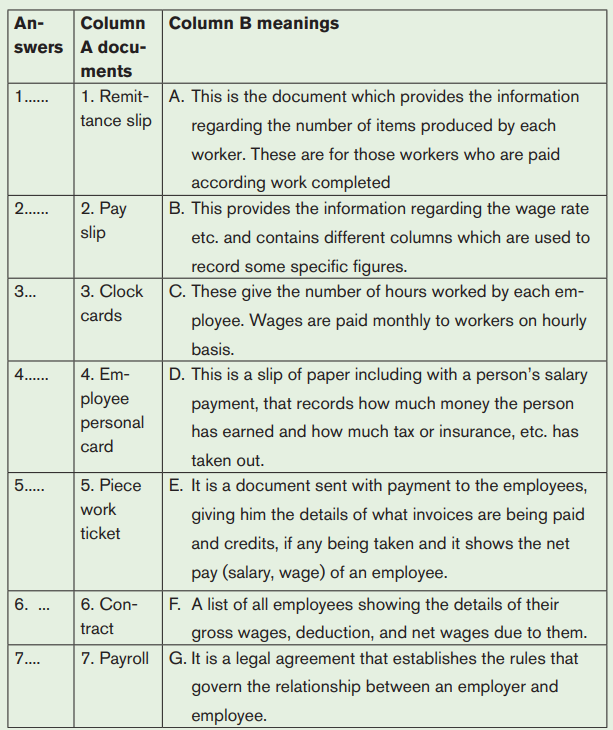
Analyze the above picture, then answer the following questions:
1. What is about the picture?
2. What is the difference between the first picture and the second picture?
3. Do you think the salary of these two first employees may be calculated using the same way? If YES or NOT explain.
4. What is the point of difference between the two first employees and other two remaining employees?
5. Is it possible that an employee who normally works the day in the normal days of week, to work the night and in the weekend days?
6. How can the company treat those employees who work in abnormal conditions of the work?
6.4 Methods of computing wages
Activity 6.4

Analyze the above picture, then answer the following questions:
1. What is about the picture?
2. What is the difference between the first picture and the second picture?
3. Do you think the salary of these two first employees may be calculated using the same way? If YES or NOT explain.
4. What is the point of difference between the two first employees and other two remaining employees?
5. Is it possible that an employee who normally works the day in the normal days of week, to work the night and in the weekend days?
6. How can the company treat those employees who work in abnormal conditions of the work?
6.4.1 Introduction
This refers to the basis of determining what is to be paid to an employee for his services. In this section we shall concentrate on methods of remuneration for factory workers, because production personnel involved in management of production in different capacities like, foremen, supervisors, factory managers, production engineers etc. are paid monthly salaries and fringe benefits according to the rules of organization.
As stated earlier, basic wages of the workers are determined by then classification into different pay scales by means of job evaluation. But the wages actually earned by the workers may be computed either on flat time-rate basis or under some form of incentive wage system.
Basically, wages are paid according to performance or according to time spent by an employee on employer’s work.
6.4.2 Time rate method
Under this method, workers are paid basing on the time spent on the job that may be an hour, a day, a week or a month. Mostly, the workers are paid according to number of hours worked during a particular week or month. Mostly, the workers are paid according to number of hours worked during a particular week or month. Hourly rate is determined in advance at the time a worker is employed. This hourly rate is multiplied by the number of hours worked during a particular month and the resultant figure is the wage for that month.
* Advantages of time rate method
• It is a convenient method and wages can be calculated easily.
• Under this method employee can forecast their income, and they are ensured to receive this income.
• This method eliminates the need to measure the performance of the worker.
• This is more suitable for such jobs where work cannot be divided into smaller units. Example: The works of a driver, a typist or any other office worker.
* Disadvantages of time rate method
• This method discourages the more efficient workers because they receive the same amount which is received by inefficient workers and lazy employees.
• This method requires close supervision of employees; otherwise they do not show interest in their work.
* Holiday pay
Official holidays shall be determined by the presidential order and for every public holiday. The worker benefits from his/ her full salary. Public holidays are known:

The workers have the right to an unplanned (incidental) leave in case of good or unfortunate event which may occur in their family. Incidental leaves shall be determined by an order of the minister in charge of labor.
6.4.3 Piece Rate Method (Piece work payment)
Under this method, employees are paid according to the units produced, articles or per job completed. This method is used only if the work can be divided into uniform pieces as is often possible for factory jobs.
The piece rate method can be applied in different forms.
• Straight piece work plan,
• Differential piecework plan, and
• Piece rate with guaranteed time rate.
a. Straight piece work plan:
Here workers are paid straight to the unit produced, regardless of output quantity.
Hence, Total gross pay= output quantity ×rate per unit
Example: ISIMBI works on a hat assembly line. She gets paid at a straight piece work rate of Frw350 per hat. Pay for last week if she produced 1,655 hats.
Solution
Total gross pay= output quantity ×rate per unity
Total gross pay= 1,655×Frw350= Frw579,250
b. Differential piece work plan:
It is a greater incentive method of compensation than straight piece work, where payment per unit increases as output goes up.
Example: SUSAN is working in ABC PLC that produces the watches. From the production department manager officer, the information bellow can be analyzed and calculate the total pay of SUSAN.
She is supposed to assemble 190 watches last week. Calculate her total gross pay based on the following differential piece work schedule.

Solution
To find out SUSAN’s total gross earnings, we calculate her earnings at each level of the schedule and add the totals. She will be paid for all of level I, all of level II, and 40 watches at level III (190-150).
Level pay= output×rate per piece
Level I= 100×Frw2,500= Frw250,000
Level II= 50×Frw2,750= Frw137,500
Level III= 40×3,100 = Frw124,000
Total gross pay= Level I+ Level II+ Level III
Total gross pay= Frw250,000+Frw137,500+Frw124,000= Frw511,500
c. Piece rate with guaranteed time rate
Under this method, a specific is paid to the worker on daily or monthly basis irrespective of units produced by him/her during that period but if his/her output exceeds beyond a minimum limit then he/she is paid according to piece rate method.
Example: We assume the guaranteed wage of KALISA is frw 150,000 and he is paid Frw500 per unit produced. Find out his monthly wage on the assumptions that he produced in a month:
a) 500 units
b) 270 units
Solution
Total wage for 500 units is 500 ×Frw500= Frw 250,000. This wage is more than the guaranteed wage, so he will receive Frw 250,000
Total wage for 270 units is 270× Frw500= Frw135,000. This wage is less than the guaranteed wage, so he will receive Frw150,000.
* Advantages of piece work method
• It provides incentives to more efficient workers. They are paid according to work done so they get more income.
• It does not require close supervision of employees.
• It provides the employer an easy way of determining labor cost per unit of a product.
* Disadvantages of piece work method
• The workers can produce inferior or poor quality products in order to produce greater quantity in short time.
• This method cannot be applied to those jobs which are not easy to divide in small pieces.
• This method does not ensure a stable monthly income of works
* High time rate for overtime
Under this method, normal working hours are paid at the normal time rate but for overtime worked during week days and at weekends, a higher rate is paid in order to induce to the workers to work for more hours. Usually, normal working hours from Monday to Friday are 9 hours per day. It means weekly normal working hours are 45. During week days, for extra time worked, hourly rate is 50% higher than the normal hourly rate. For weekend days (Saturday and Sunday) and public holidays, it is double than the normal hourly rate.
Note: In Rwandan labor law, the ordinary/normal working hours are forty five hours (45). In each Institution, after consultation with staff representatives, every employer draws a timetable complying with 45working hours, indicating hours at which the working period commences and ends. For extra time worked, hourly rate is not commonly fixed; there must be agreement between employer and workers.
Example: We assume A. ROBERT’s hourly rate is Frw 1,000. During a particular week, he worked for 60 hours including 8 hours on Sunday. His wages for this particular week is:
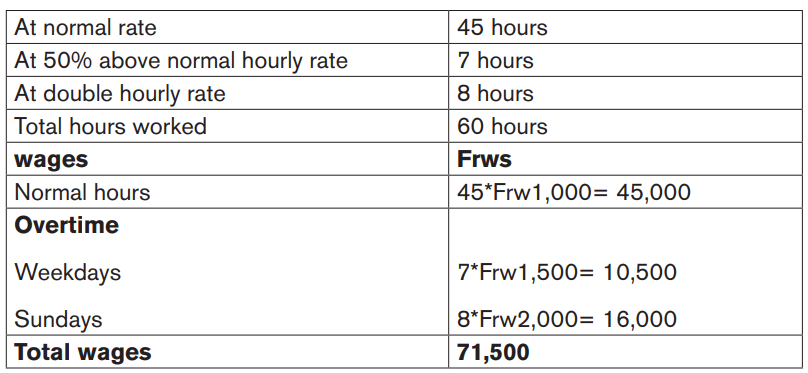
6.4.4 Presentation of payroll
The following are steps and procedures which are adopted to prepare a payroll. The number of hours worked are multiplied by wages rate per hour. Over time worked is multiplied by wage rate which is applicable to the overtime worked to get the over premium pay.
Calculation of the gross pay (employee’s gross pay) is the amount an employee earns before any deduction for taxes and other items such as social security fund (RSSB)…the employee’s gross pay is equal to regular pay amount plus overtime premium pay and fringe benefits. (FB: Benefit that you get because your job which is additional to your pay but not in the form of money (example: a car)
• Computation of all deductions on employee’s wage
The amount earned by employees are called “wages or salaries” and the gross salary (gross pay) is subjected to some deductions. Such deduction has direct effect on employee’s gross pay because automatically reduce the gross pay.
The following deductions are retained:
PAYE (Pay As You Earn)
It is the professional tax that an employee must pay to the tax administration. The rate of PAYE is applied to the gross pay to obtain the amount to be paid as professional income tax. The tax administration in Rwanda is called Rwanda Revenue Authority (RRA).
For tax
FRW 0 Frw 30,000 (0% or Zero rate)
FRW 30,001 Frw 100,000 (20%)
FRW 100,001 above (30%)
Rwanda Social Security Board (RSSB): On gross pay of every employee must be deducted the contribution for the purpose of retirement age (65 years in Rwanda).
For social security funds:
• Gross pay – Transport allowance
• 3% of the above balance is paid by the employee
• 5% of that balance is paid by the employer.
Maternity leave: The law requires all employers and employees to each contribute 0.3 of the employee’s gross remuneration towards a maternity fund. The fund is also administered by Rwanda Social Security Board (RSSB)
Medical Insurance (RAMA= Regime d’Assurance Maladie des agents de l’ Etat/ Rwanda medical insurance): it is the amount to be paid to the employee’s wage to meet the role of protecting him/her against illness. For RAMA the rate is like:
– 7.5% is paid by the employee
– 7.5% is paid by the employer
CBHI (Community Based Health Insurance): This order has introduced a statutory deduction of 0.5% from every employee’s net salary to be contributed to the community based health insurance scheme.
Union duties: This is a contribution of employees to their unions and associations.
Other deductions: Like advance taken by the employee, loan repayment, etc.
• Computation of “Net pay”
The net pay is the amount of money to be paid to the employee after deducting all deductions from the gross pay. This means that, the total deductions are subtracted from the gross wages and the net wages are interred into another column. Any advance taken by employees or loan repayments are subtracted to find out the wages payable.
The formula to compute the gross pay and the net pay are: Gross pay = Regular pay+ Overtime premium pay+ Fringe benefits Net pay= Gross pay-Total deductions Summary of these steps:
Regular pay=Regular hours*Regular pay rate
+ Overtime premium pay=Over time hour*Overtime premium rate
+ Fringe benefits (transport + communication + accommodation)
Gross pay
-Deductions
Net wage to be paid to employee
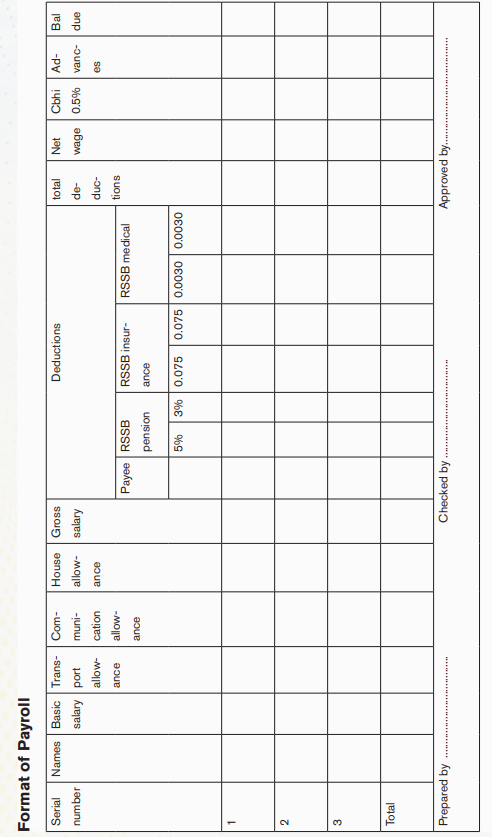
Example: CIMERWA PLC has different departments including Human Resource, Production department, Purchase department, Marketing department, Selling and Distribution department and Finance department. At the end may, 2022; Human Resource department provides to Finance department the list of six personnel with their times spent on work place. From the provided following information, prepare a payroll for the month of May, 2022.
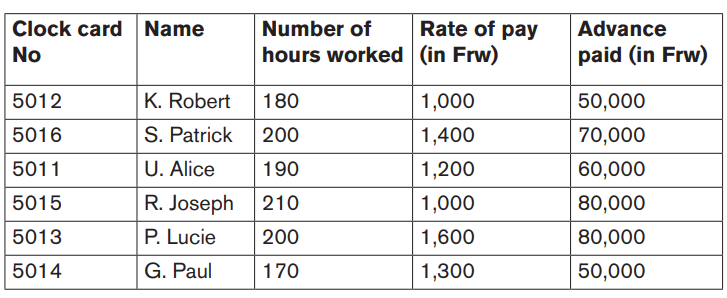
Additional information
Normal working hours per month are 180. Over time payable for extra hours at the rate of 50% above normal pay rate.
Required: Prepare the payroll using the Rwandan format by calculating the following:
a) The Gross wages of all employees.
b) The total deduction (PAYE, Pension, Maternity leave, RAMA and CBHI).
c) The Net wages and the take home wages.
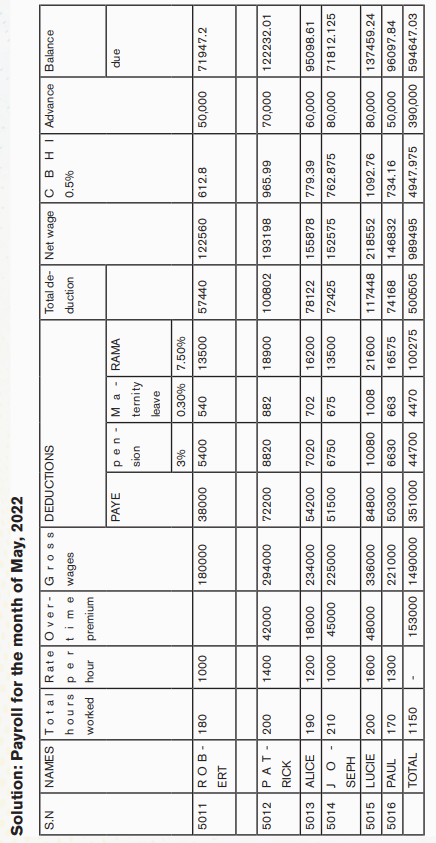
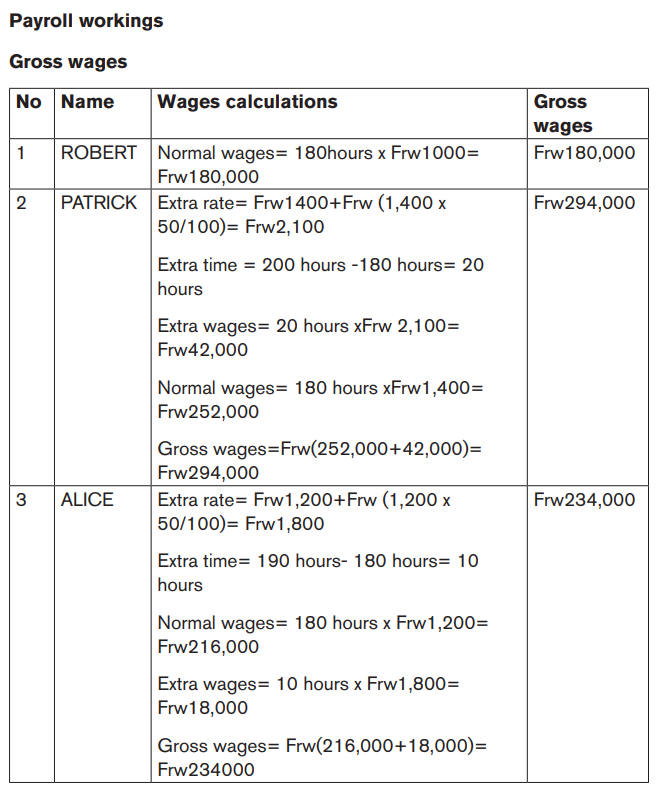
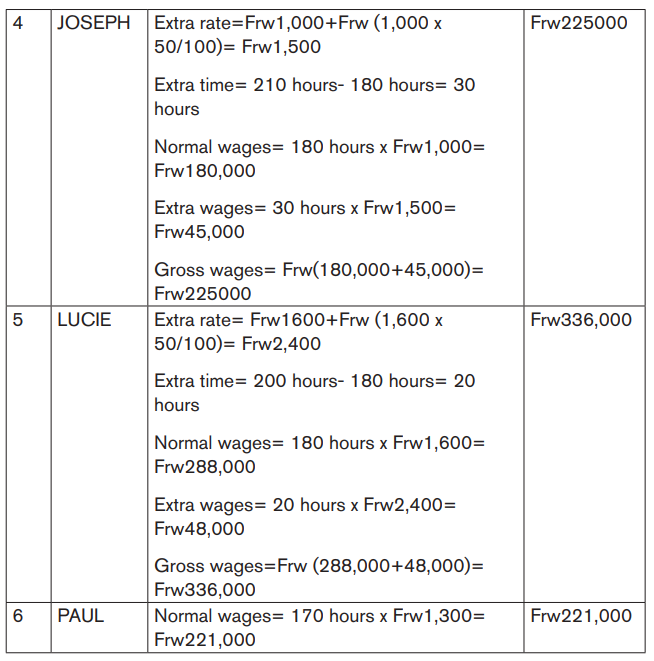
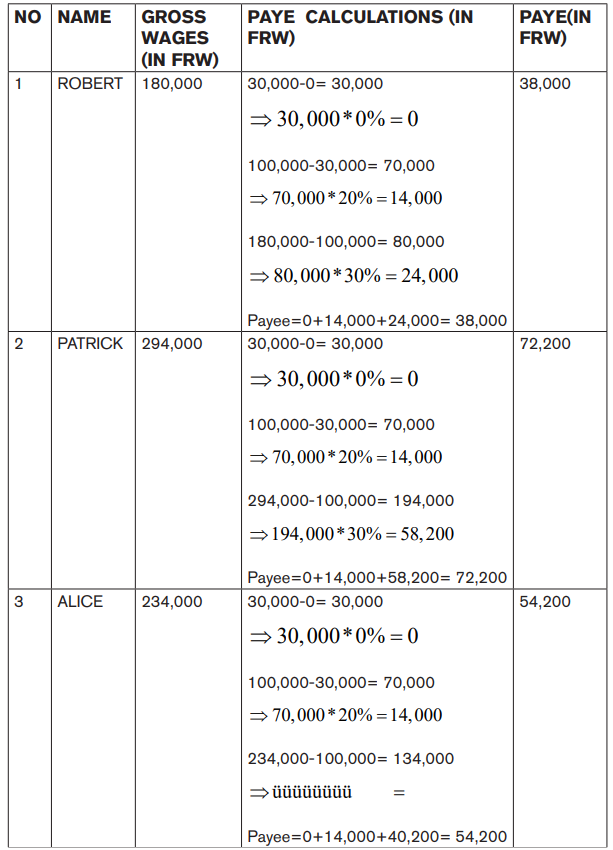
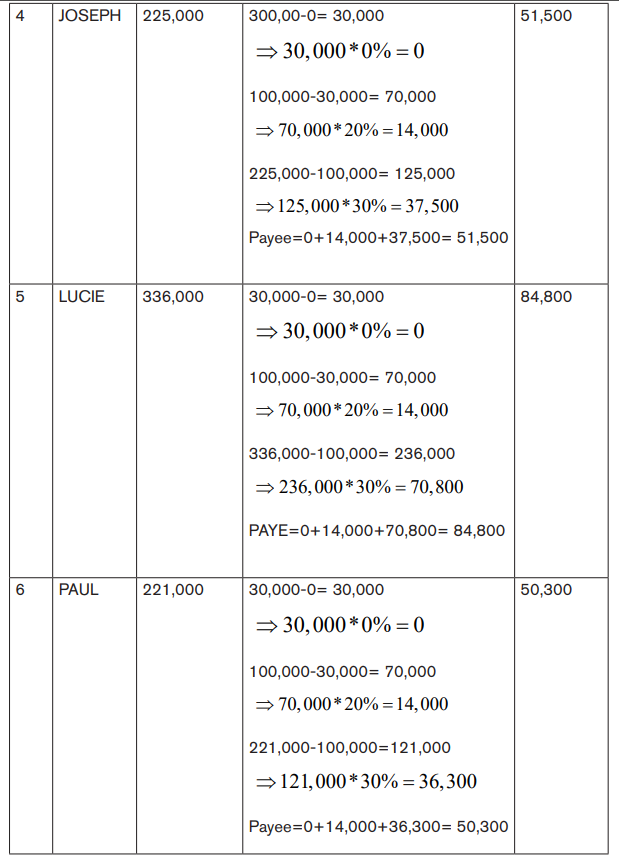

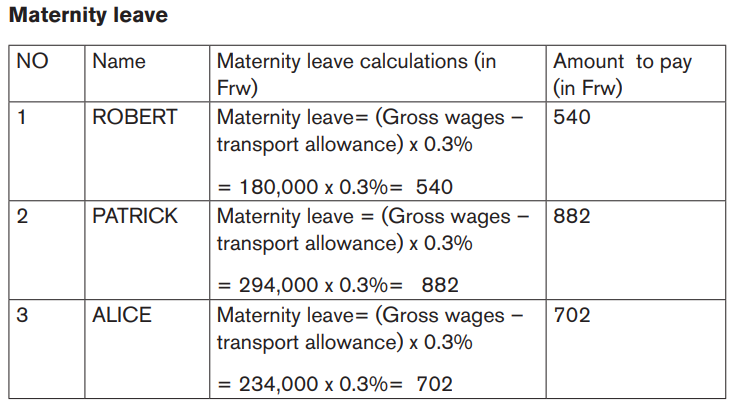

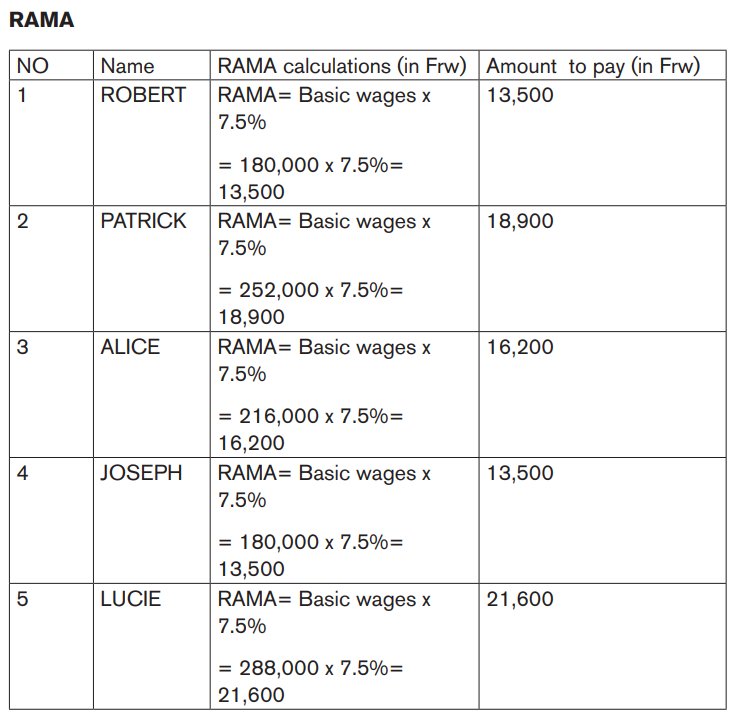
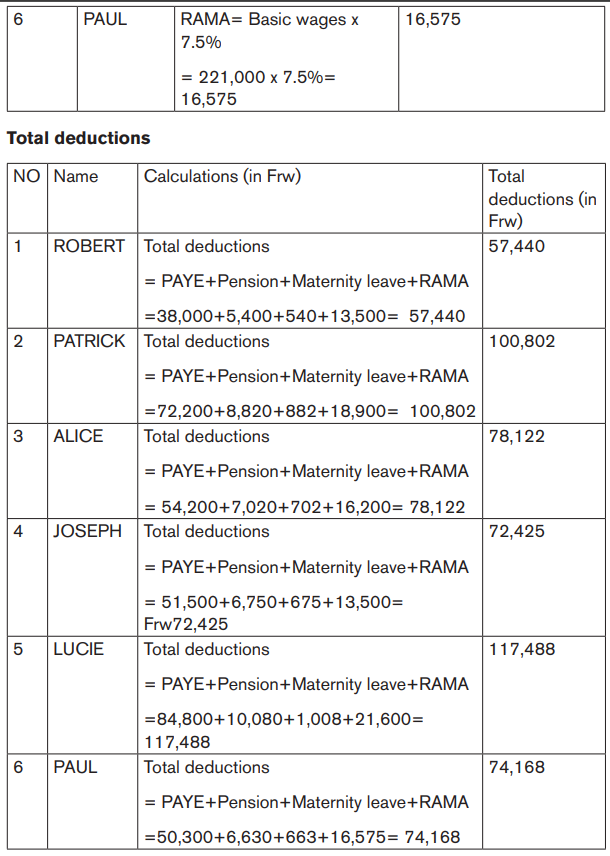


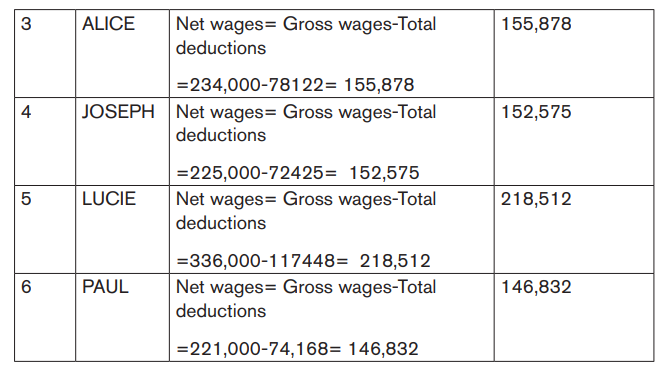
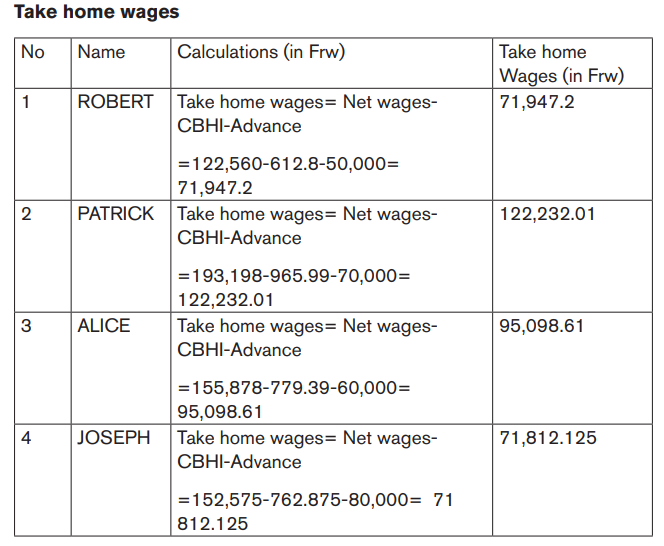
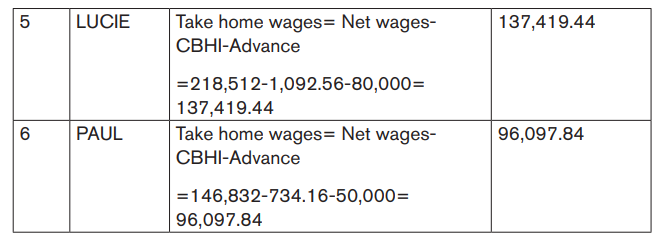
Application activity 6.4
1. Explain various methods of salary calculation.
2. Simon worked 180 hours during the month of June and he was paid at the rate of Frw10,000 per hour. During the month, he completed three jobs:
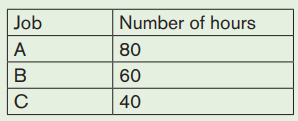
Calculate the labor cost chargeable to these three jobs on the assumption that they were completed only by Simon.
3. Companies A and B are remunerating Grade III employees on hourly basis. A pays Frw1200 an hour and B Frw1500 an hour. If X and Y, employees of A and B respectively, work for 8 hours each in a day, what are their earning?
4. Mr. ALEX is paid Frw500 per unit up to 100 units, Frw600 per unit for 101 to 200 units and Frws700 per unit produced in excess of 200 units.
Required: Calculate the gross pay.
6.5 Bonus schemes
Activity 6.5
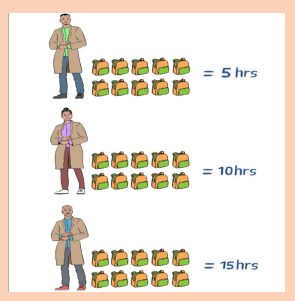
Analyze the above picture, then answer the following questions:
1. What is about the picture?
2. What is the difference between these three employees?
3. Do you think the company has given them the number of bags to be produced per day? How many?
4. Is it possible that these employees may earn the same salary? If YES or NO explain.
5. How do we call that amount of money added to the standard remuneration because of additional production?
6.5.1 Introduction
The premium bonus scheme is paid to the workers according to the over time worked and to the hours saved. The employee assigns some jobs to the workers to complete within a specific number of hours. If the workers complete these jobs in less than time allowed then there are some savings to the employers. The workers are paid according to hours worked. According to premium bonus schemes, the savings accruing to the employers out of time saved by the workers should be shared between the employer and workers.
Over time worked: According to the federal law, the amount of money is paid to an employee for each hour worked over 45 hours per week.
STEP:
a) Calculation on employee’s regular gross pay for working 45 hours or less.
Regular pay= Hour rate*Regular hour worked
b) Calculate an employee’s overtime pay.
Overtime pay = Hour rate*Overtime hours worked
c) Calculate total gross pay.
Total gross pay= Regularly pay+ Overtime pay
Example: Mr. Kanyandekwe earns Frw 8,000 per hour as checker on an assembly line. If his overtime rate is time and a half above normal hour rate, what is his total gross pay for working 56 hours’ week?
Solution
- Regular pay= Hourly rate×Regular hours worked
- Regular pay=Frw8,000×45= Frw 360,000
- Overtime pay= Overtime rate ×Overtime worked
- Overtime rate= Frw[8,000+ ((8,000 )/2)]= Frw12,000
- Overtime pay= Frw12,000×11=Frw132,000
- Total gross pay= Regular pay + Overtime pay
- Total gross pay= Frw360,000+Frw132,000= Frw492,000
Time saved
The premium bonus is paid to the workers according to the hours saved. They are three common bonus schemes theories namely, Hasley, Hasley Weir and Rowan schemes.
The formula for:
Worker’s total pay=Day rate wage+ Bonus based on time saved
Time saved= Time allowed –Time taken
Note: If time taken exceeds the time allowed then there is no time saved. In this case, there is no bonus and wages rate is only paid for the time taken.
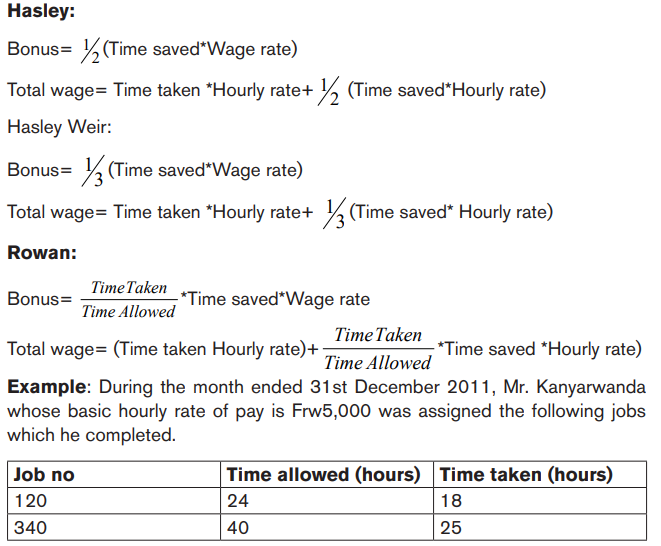
Required:
Calculate the labor cost chargeable to the job in respect of an employee who is paid according to:
• Hasley scheme
• Hasley Weir scheme
• Rowan scheme


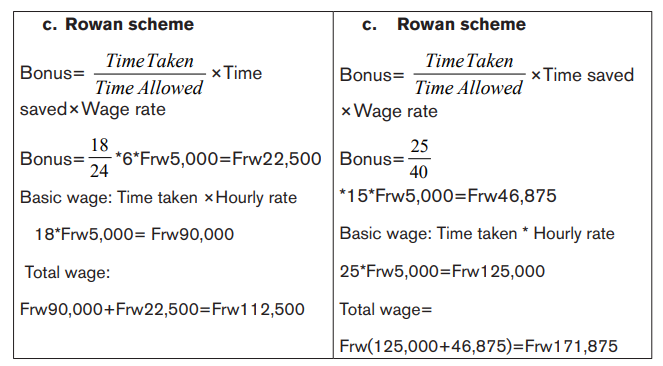
Application activity 6.5
1. Total output of KARENZI for one week was 480 units. He was allowed 8 minutes per unit. He completed these unit in 52 hours.
His wage rate per hour is Frw1,800.
Calculate KARENZI ‘s total wage according to:
a) Hasley scheme
b) Hasley Weir scheme
c) Rowan scheme
6.6 Group incentive scheme
Activity 6.5

Analyze the above picture then answer the following questions:
1. What is about the picture?
2. What do you think is the goal of these employees?
3. Is there any advantage these workers can get from working together?
4. What kind of reward do you think these employees can get from the company?
6.6.0 Introduction
Sometimes, the group incentive scheme is introduced by the management of different organizations. The main Purpose of group incentive schemes is to induce workers to participate effectively to increase the production of any organization. In addition to individual bonus incentives, the workers may be given some share of profit and co-ownership.
• Profit sharing is payment to employees of a portion of the company’s trading profit.
• Co-ownership relates to a scheme under which employees own shares in the company. These shares may be bought by the workers or given to them without any payment. These two schemes aim to make employees partners in the enterprise but the employees mostly prefer to be paid well instead of becoming partners.
6.6.1 Principles of Labor Incentive Schemes
Labor incentive scheme is a scheme that relates remuneration to the performance of laborers. The main principles of labor incentive schemes are:
• These must be fair to the employee and employer.
• These must be stable.
• The standard of performance must be reasonable.
• There must be no limits of earnings.
• There must be proper measurement of employee’s effort.
Advantages of labor incentive schemes
• The rate of production is increased.
• These are beneficial for employees and employers.
• These help to reduce labor turnover.
Disadvantages of incentive schemes
• These involve extra work.
• There is possibility of exploitation.
• The disputes may become source of friction.
Application activity 6.6
1. Explain the main purpose of the group incentive schemes.
2. What are the types of group incentive schemes?
3. Differentiate share of profit from co-ownership group inventive schemes.
4. Discuss five (5) principles of labor incentive schemes.
5. Explain advantages and disadvantages of labor incentive schemes.
6.7 Allocation of Labor Cost
Activity 6.7
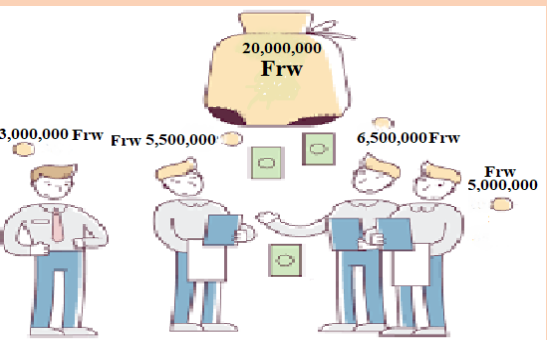
Analyse the above picture then answer the following questions:
1. What is on the image?
2. What do the people and images represent in the circle?
3. What does the sum of Frw20,000,000 represents in the circle?
4. Why is the sum of money mentioned in the big circle divided into 4 parties in the small circle?
Allocation of labor cost: Labor cost is allocated to the respective jobs or products. Labor cost being a direct cost can be identified and charged to the products which are produced by a specific worker. The allocation of labor cost to the right jobs or products is required to ascertain the total costs of those jobs or products.
Example:
N. SIMON worked 180 hours during the month of June, 2020 and he was paid at the rate of Frw10,000 per hour. During the month, he completed three jobs. The following additional information was also given:
Job Number of hours
A 80
B 60
C 40
Calculate the labor cost chargeable to these three jobs on the assumption that these jobs were completed only by N. Simon.
Answer
Total wage of Simon= Frw10,000×180= Frw1,800,000
Proportion of time for these three jobs
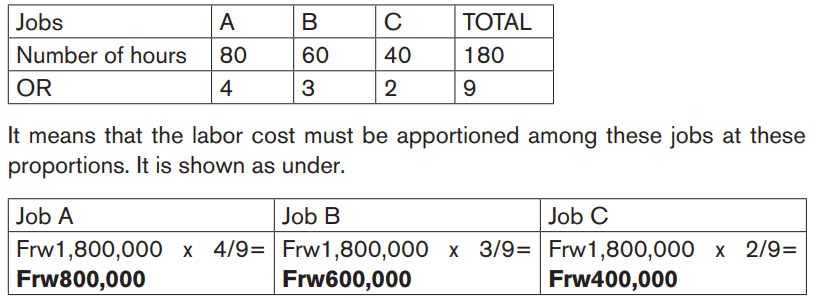
Application activity 6.7
K. PATRICK worked 360 hours during the month of June, 2019and he was paid at the rate of Frw20,000per hour. During the month, he completed three jobs. The following additional information was also given:
Job Number of hours
X 160
Y 120
Z 80
Calculate the labor cost chargeable to these three jobs on the assumption that these jobs were completed only by K. PATRICK.
Skills Lab Activity 6
Have a resource person (Accountant of School) to share with students about:
a) Payroll process and ask students to prepare the payrolls,
b) The payment methods of payroll preparation at home / in club then let students present their findings.
End unit assessment 6
1. Discuss the objectives of labor cost management.
2. Explain the preventive measures of idle time.
3. Compute the earnings of employees A, B and C under straight piece rate system. The applicable wage rate is Frw 1,200 a unit. On Monday, they produced 10 units, 12 units, and 8 units respectively.
4. SIMON worked 180 hours during the month of June, 2020 and he was paid at the rate of Frw1,000 per hour. During the month, he completes three jobs. The following additional information was also given :
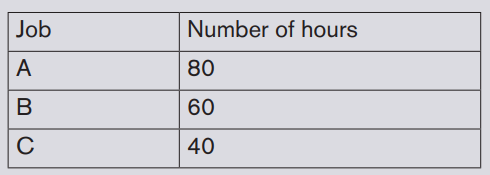
Required:
Calculate the labor cost chargeable to these three jobs on the assumption that these jobs were completed only by SIMON.
5. The standard time (time allowed) for a particular job is 10hours. The wages for this job are paid at Frw2000 per hour. Calculate the wages and the effective rate of earnings per hour under Halsey, Halsey Weir, and Rowan schemes if the job is completed in A (8hours), and B (6 hours).
UNIT 7: COST CLASSIFICATION AND COMPUTATION
Key unit competence: Classify and compute the cost
Introductory activity.
AKARWA COMPANY LOCATED
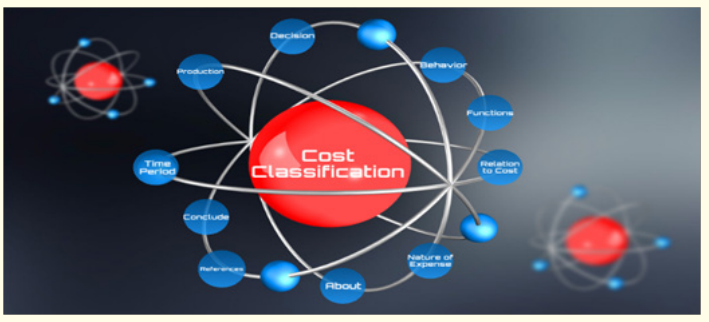
Analyze the picture above and classify the cost according to different factors.
7.1 The concept “cost”
Activity 7.1

1. According to the picture above, distinguish the cost due to traceability,
2. What should be the direct costs to the specified product?
3. Describe the total cost of producing one table
7.1.1 Definition of cost
Cost is a resource sacrificed or foregone to achieve a specific objective.
A cost is the value of economic resources used in the production of any commodity or performing any service.
Example: 5000 Frw are spent to produce 100 units of juice then this amount is referred to as cost.
The expenses are also used to denote almost the same meaning. The difference between these two concepts is that when the benefits of resources given up can be realized in the future we refer to them as cost. But when the resources given up have no future potential benefits, we call them expenses.
* Elements of cost:
• raw material
• labor
• overheads
Raw material: goods that are yet to be introduced into the production process. Raw materials are converted into finished goods by manufacturing enterprises. The amounts spent on the purchase of raw materials are referred to as raw material costs.
Eg: Woods for producing chair.
Labour: are the wage, benefits, and insurance that are paid to employees who are involved (directly and indirectly) in the manufacturing or production of the goods. Labour represents a human contribution to production. Labor costs must be also analysed against the various jobs completed by workers. It means that the workers should not sit idle during working hours and they should contribute effectively to increasing production.
Example: Salaries of permanent staff
Overheads: means all indirect costs. The aggregate of indirect materials cost, indirect labor cost, and indirect expenses. The term indirect denotes “that which cannot be allocated, but which can be apportioned to, or absorbed by cost centres or cost units.
” Overheads, therefore, refer to those items of cost which cannot be identified with particular products, jobs, or processes.
Eg: rent
Note:
a) Prime cost: it is all direct costs, it is an aggregate of direct material cost, direct labor (wage) cost, and direct expenses.
b) Conversion cost: it is the cost of converting raw material into finished goods.
c) Total cost: it is the sum of all the items of cost which have been incurred, irrespective of whether they are paid or not, to produce and/or sell the product or to generate and render service to a customer.
d) Cost unit: A cost unit has been defined as unit of quantity of produce, service or time in relation to which cost may be ascertained or expressed.
Eg: A meter of clothes, a litre of milk, a kilogramme of sugar.
e) Expense is an amount of money spent by a company during a period of time for producing single unit of a particular product or rendering a service.
Application activity 7.1.a
1. Define the following accounting concepts:
a) Cost
b) Expenses
c) Prime cost
d) Total cost
2. State the elements of cost.
7.1.2 Cost classification
It refers to a systematic process of grouping cost items into two or more categories on the basis of their common characteristics. However, there are a number of bases for the classification of costs; hence the selection and use of a particular base or method for the classification of costs depend upon a number of factors including the objective of classification.
a. Classification of cost by nature
On the basis of the nature or elements of cost, the cost can be classified into three broad categories.
• Material cost; is the cost of raw material consumed in the process of manufacturing and marketing a commodity.
• Labor cost: represents the wages, salaries, etc., payable to the employees of a corporate entity.
• Overheads (expenses): refer to the costs, other than material and labor costs (but including the notional cost of the use of owned assets) of other services provided and used in manufacturing and marketing the goods and services of the company.
b. Classification of cost by degree of traceability of the product.
• Direct cost: is the cost which can be identified for the production of some specific goods. Raw material and direct labor costs are direct costs because these can be charged and identified to the production of some specific output of goods.
• Indirect cost: is cost that cannot be conveniently and economically identified with cost objective. In other words, indirect cost is cost that cannot be identified to the production of some specific goods.
c. Classification of cost by function:
• Production cost: is cost of materials introduced into the manufacturing process, cost of converting the raw materials into finished goods. Production cost = [prime cost + factory overheads] = [direct material cost + direct labor cost +direct expenses+ factory overheads]
• Administration cost: which is also called administrative overheads or office-on-cost are expenses an organization incurs that are not directly tied to a specific core function such as manufacturing, production.
• Selling and distribution costs: are those costs that are incurred to promote the sale of goods and deliver these goods to the customers.
d. Classification of cost by controllability
• Controllable cost: a cost that can be influenced by the action of a specified member of an undertaking.
• Uncontrollable cost: a cost that cannot be influenced by the action of a specified member of an undertaking
e. Classification of cost by relationship with accounting period
• Historical cost: is that cost which is ascertained after it has been incurred.
• Pre-determined cost: is a future cost which is ascertained in advance of production on the basis of specification of all the factors affecting cost. They are extensively used for the purpose of planning and control.
f. Classification of cost by Association with the Product.
• Product cost: is that cost which is necessary for production and which will not be incurred if there is no production. For example, cost of direct materials, direct labor, and factory overheads.
• Period cost: is that cost which is not necessary for production process and is incurred even if there is no production. For example, showroom rent, salary of company’s executives, etc.
g. Classification of cost by behavior:
• Fixed cost: is cost which remains the same at different levels of activity. It is the costs which, in aggregate, tend to be unaffected by the changes in the levels of activity. They remain constant irrespective of the level of activity.
• Variable costs: are those costs that vary with the levels of activity in the same direction and more or less in the same proportion.
• Semi variable costs: are partly variable and partly fixed costs.


Application activity 7.1.b
1. Define the following concepts:
a) cost unit
b) unit cost
2. Define prime cost. What are its elements?
3. What is meant by direct cost and explain how does it differ from indirect cost?
7.2 Overheads
Activity 7.2
Construction projects become complicated and fragmented so that many specialty contractors are involved. In such changing environments, a general contractor's overhead costs are increasing comparable to direct costs. In addition to an increase of volume, activities consisting of overhead costs play an important role in coordinating different participants who include different specialty contractors and client. “We are interested in strategies of overhead control and critiques problems thereof” said CEO of construction agency. Through literature review, interviews with professionals, and data collection the business will maintain the current customers and increase the general profit.
With the above scenario what the business would do to maintain the increase of profit?
7.2.1 Definition of overheads
Overheads: refer to all indirect costs. Overheads, therefore, may be defined as costs that do not result solely from a particular activity. In other words, all those costs which are incurred by the organization as a whole and not for some specific activities are known as overheads. Overheads must be reasonable and adequate.7.2.2 Overheads classification
• Production overheads
• Administrative overheads
• Selling and distribution overheads.
a. Production overheads
Production overheads are also called work overheads, factory overheads, manufacturing overheads or works-on-cost. all are manufacturing costs other than direct material and direct labour which are collectively termed as factory overheads.
Examples: indirect materials, power, light, depreciation, repairs, cleaning, and maintenance etc.
b. Administrative overheads
They are also called office overheads, office-on-cost; all the expenses incurred for providing control, direction, and management of the enterprise are known as administration overheads. Examples: rent, insurance, water, power, electricity charges for the factory.
c. Selling and distribution overheads
They are also called selling and distribution costs.
Selling and distribution overheads may be taken together or separately. Most organizations find it more convenient to take these overheads together.
d. Selling overheads:
Are those expenses that are incurred to secure orders and to increase sales for the enterprise. These also be called marketing costs. Selling overheads consist of advertisement expenses, sales travel, salaries of salesmen and commission of sales agents, sales correspondence expenses and cost of preparing catalogues and price-lists, rent of salerooms and offices, water and electricity expenses of salerooms.
e. Distribution overheads:
Are those expenses that are incurred on the movement of finished goods from factory to warehouse and then in delivering these goods to the customers. Distribution overheads consist of the cost of warehousing the finished goods, transport charges in respect of movement of finished goods from factory to warehouse and from warehouse to customer’s premises.
The analysis of total cost
The total cost incurred by a manufacturing company concern may be analysed:

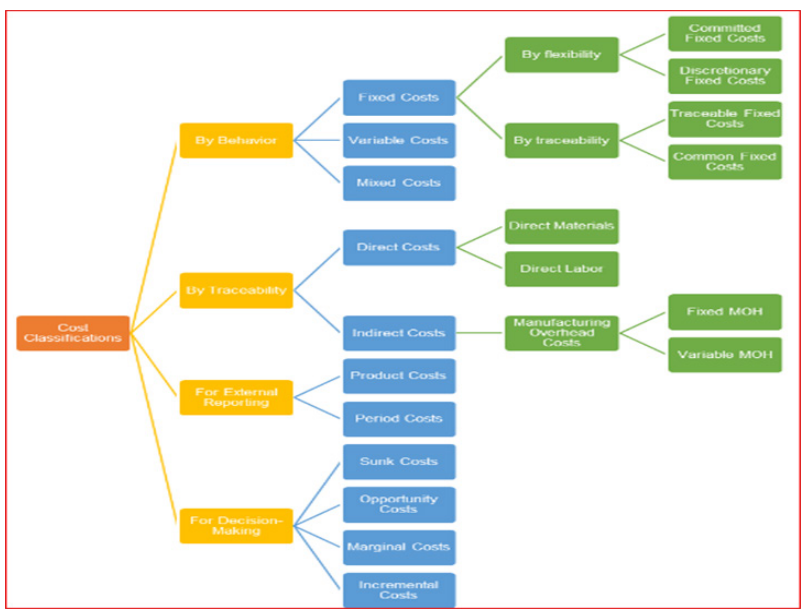
Application activity 7.2
1. Write a note on a variable cost, fixed cost, and semi-variable cost.
2. What is meant by production cost and how does differ from the cost of production?
3. What is works-on-cost? How does it differ from works costs?
7.3 Computation of cost
Activity 7.3
The following information are extracted from ABC PLC organization. The ABC PLC manufactures the tables and the costs of production are given below:
Variable cost is Frw 2 500 and fixed cost Frw 15 000, the labor cost per table is Frw 1 800. The production per month is 8 tables.
How much ABC PLC did spend on production of one table?
7.3.1 Cost statement/ sheet
A cost sheet means the presentation of cost data in the form of statement. This statement shows costs incurred under appropriate headings. A cost statement is prepared to show:
• Prime cost
• Production cost or factory cost
• Total cost of sales;
• Total cost of sales,
• Profit or loss.
One of the main purposes of cost sheet, to management, is to set prices and prepare the quotations regarding various products.

Application activity 7.3.a

From the following information prepare a cost statement showing prime cost, factory cost, total cost and also determine sales revenue.
The cost statement doesn’t always show the full picture of manufacturing process system for better decision making. Hence, management accounting necessitates the presentation of production statement that allows to know how much invested in production and the value of each unit cost.
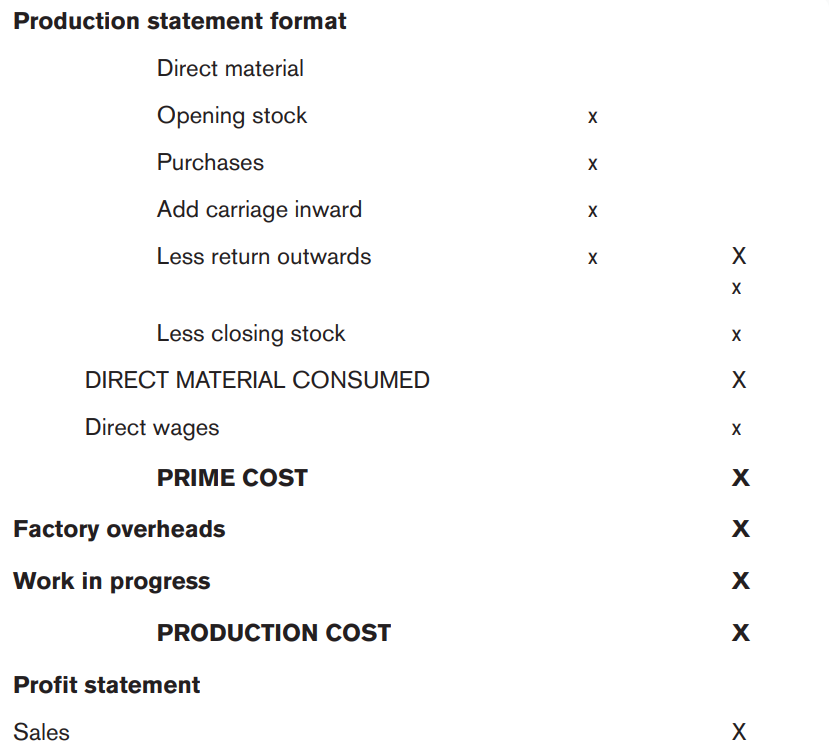
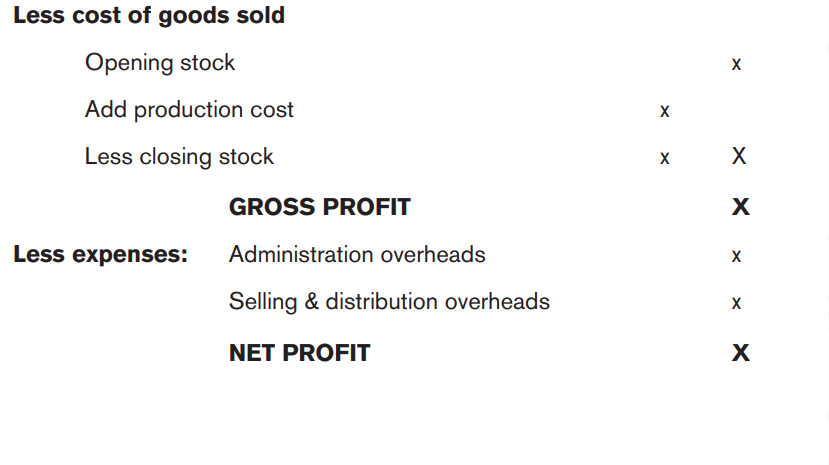
Application activity 7.3.b
1. ABC manufacturing company provides the information for the month of May 2010 as:
Stock on 1st May 2010
• Raw materials …………………………….40,000
• Work in progress…………………………12,000
• Finished goods ………………………… 20,000
Stock on 31st May 2010
• Raw materials ………………….…… 35,000
• Work in progress ……………………… 17,000
• Finished goods ……………………… 23,000
Purchases of raw materials for May ………….. 250,000
Carriage inwards………………………………… 10,000
Factory wages ………..... 80,000
Supervisor salary…..….. 30,000
Returns of raw materials……….. 10,000
Factory rent……… 10,000
Office salaries………….. 13,000
Sundry office expenses………………… 7,000
Sundry selling expenses………………… 6,000
Factory power…………………………........................ 5,000
Salesman salary……………………………….. 18,000
Sales………………………………………….. 500,000
Prepare a production cost statement
7.4 Allotment and absorption of overheads
Activity 7.4
AGAHINGA Plc is a manufacturing business located at Bugesera- Kayonza Road and producing juice. The Director Manager would like to know the total cost per unit produced. Overhead costs are defined as aggregate of indirect costs that include indirect material costs, indirect labor costs and indirect expenses. Such costs cannot be identified to the production of some specific goods or with cost centre and cost unit. The overhead characteristics confuse the manager about the decision making in production process.
What manager should do to facilitate the Director Manager in decision making?
7.4.1 Classification of overheads
a) Production overheads: These include indirect material, indirect wages, factory rent and rates, depreciation of factory plant and other indirect expenses.
b) Administration overheads: These include office salaries, office rent, depreciation of office equipment and other office equipment.
c) Selling and distribution Overheads: These include advertisement, salaries of salesmen, rent of sales warehouse, delivery van expenses, depreciation of delivery vans and other sundry selling and distribution expenses.
Note: The above types of overheads can be classified:
a) Fixed overheads: These overheads remain the same at various levels of output. These are incurred on time basis. The main example is factory rent and rates.
b) Semi-fixed overheads: These remain the same up to a specific level of output and beyond that level these may increase by a specific amount. For example, supervision cost may be 50,000Rwf up to 10,000 units of outputs, 60,000rwf for 10,000 to 15,000 units of outputs and 70,000Rwf from 15,000 to 20,000 units.
c) Variable overheads: These are those overheads which increase with the increase in production and vice versa. The main examples are indirect material and indirect wages.
7.4.2 Overheads allotment
Overheads allotment means the charging of overheads to cost units or cost centres. Overheads are incurred for a specific department or organization as whole. These are charged to cost centres and cost units in order to ascertain total costs of a job or product.
* Stages of Overheads allotment:
• Collection of overheads
• Overhead analysis
• Overheads absorption
- Collection of overheads
This involves the sourcing or gathering of common costs from different sources. Overheads are collected from costing and financial records. For example, indirect wages are obtained from wages analysis book, indirect materials are given in the stores requisitions, factory rent and other expenses paid are recorded in the financial ledger and so on. The collected overheads are grouped into different categories for better analysis. Factory overheads can therefore be grouped as fixed overheads, semi-variable costs and variable costs.
- Overhead Analysis
An overhead analysis is an analysis that charges overheads to cost centres. A cost centre is defined as “A location, person, or item of equipment (or group of these) in respect of which costs may be ascertained and related to cost units”. It is a particular part of enterprise. For example, production department “A” is a cost centre and all overheads incurred in respect of this department should be ascertained.
Overhead analysis sheet is prepared to show how the various overheads have been allocated and apportioned among different cost centres or departments.
This sheet contains the following:
1. The first column shows the name of overhead to be allocated or apportioned
2. The second column shows the bases of apportionment. If, it is to be allocated then the word ‘allocation’ is written in this column.
3. The third column shows the total amount of the overhead which is to be apportioned.
4. The fourth shows the number of total units in respect of any specific overhead
5. The fifth shows the rate of overheads per unit.
6. In addition to above five columns; some more columns are used according to number of departments or cost centres.
However, there are two ways of charging overheads to cost centres:
• Allocation of overheads
• Apportionment of overheads
7.4.3 Allocation of overheads
Allocation means assigning of indirect costs to cost centres or departments. For example, all indirect materials used in department ‘A’ must be charged to this department only. Similarly, the salaries of supervisors of department ‘A’ are expense of this department and these must be allocated to this centre only. It means the overheads which are incurred for one cost centre only, the charging of these overheads to that cost centre is known as allocation of overheads.
Note: The overheads are allocated when the following conditions are fulfilled:
• The cost centre must have caused the overhead to be incurred
• The exact amount of the overhead must be known
7.4.4 Apportionment of overheads
Apportionment of overheads refers to the distribution or the sharing of indirect costs by different cost centres using appropriate bases. The overheads which are incurred for the organization as a whole must be charged to various cost centres of that organization.
We assume there are four departments of an enterprise. The rent is paid monthly for the whole enterprise. This rent must be shared among four departments of this enterprise. This process of sharing of rent among four departments is known as apportionment of overheads.
BASES OF APPORTIONMENTS
The following are common bases of apportionments:
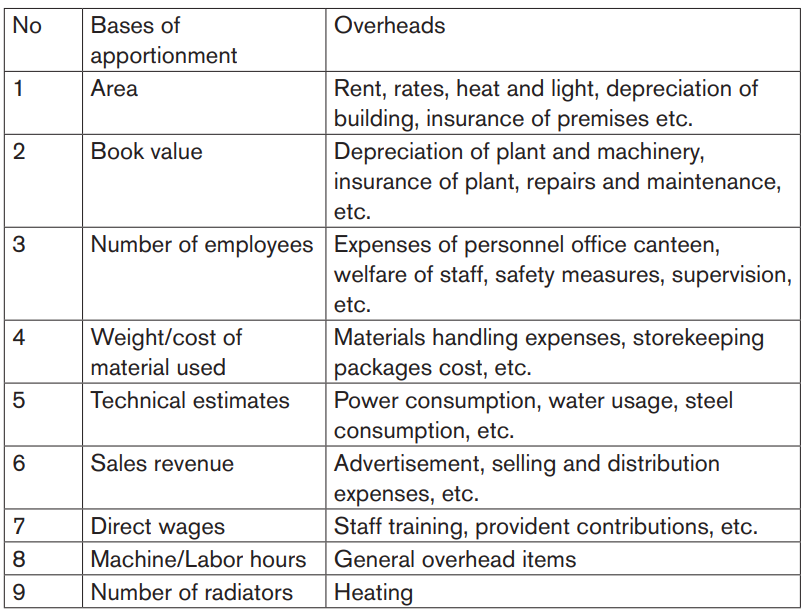
A company may decide any basis of apportioning overheads according to its own circumstances. The above bases of apportionments are given in order to provide a guideline. The qualities of bases of apportionment should be:
1. Equitable
2. Practicable
3. Economical
4. Reasonable
5. Accurate
Primary distribution: this apportions all overheads to the different departments or cost centres. It is however important to further assign service department costs to production departments. This is due to the reason that service departments do not themselves manufacture anything and it is the production departments or cost centres which are involved in manufacturing activities.
Exercise
MUKAGASANA PLC is the trading company located at Kamonyi-Muhanga road. The business has the following information relates to a factory four departments:
- Overhead: Rent 80,000rwf; Repairs to plant 50,000rwf; Depreciation of Plant 40,000rwf; Light & heat 20,000rwf; Supervision 60,000rwf; Repairs to building 30,000rwf.
- Information in respect of four departments:

Prepare an overhead analysis sheet showing clearly the bases of apportionment.
Within organization no independent department, in other words all business ‘sections work interdependently. Service departments serve production department and vice versa. Recall management decision is subject of cost unit and unit cost; hence the calculation of total cost obtained from summation of costs incurred in production department is the first step after cost allocation and apportionment.
7.4.5 Cost Apportionment
When some service departments provide services to production departments as well as to other service departments then a part of the overhead costs of one service department should be charged to another service department. We assume, the maintenance department provides some services to the stores department and similarly, the stores department provides some services to the maintenance department. In this case, the overhead cost of the maintenance department should be charged partly to stores department and the overhead cost of stores department should be charged partly to the maintenance department.
There are two common methods which can be adopted to transfer the overheads of service departments to the production departments in respect of service departments providing services to other service departments.
These methods are:
a) Repeated distribution b) Simultaneous equations.
Application activity 7.4
URWEREREZA PLC is a manufacturing company that has three production departments and two service departments and is involved in producing Wheat flour (A), Rice flour(B), Maize flour (C) . You are required to show the total overheads chargeable to the three production departments. use the method known as continued allotment or repeated distribution of apportioning service department costs between the two service departments.
Overheads of these departments for a period are as follows:
Production departments: A 150,000 Service Departments: X 30,000
B 270,000 Y 50,000
C 190,000
A technical assessment for the apportionment of the costs of the service departments shows:
Departments
A B C X Y
X 40% 20% 30% - 10%
Y 50% 20% 20% 10% -
7.5 Absorption of overheads rate
Overhead absorption is defined as “the allotment of overhead to cost units”. This means the overhead incurred in production become or constitute part of the product or service provided.
After all departments’ overhead costs have been apportioned to production departments, the next step is to spread overheads to different products or cost units or jobs. This is termed as “overhead absorption” in Cost accounting.
The overhead absorption involves two stages process include:
i) Calculation of overhead absorption rates (OAR)
ii) Charging of overheads to cost units/products.

Application activity 7.5
Calculate six different OARs for a production department based on the following data:
- Labor hours for the period 2,000
- Direct Wages for the period 1,000,000Rwf
- Direct Material for the period 3,000,000Rwf
- Machine Hours for the period 1,600
- Units Produced during the period 500
- Total Overhead of the department 1,000,000Rwf
End unit assessment 7
AGAHOZO PL Company shows the accounting documents with the following information at year ending 31st December 2008 are as follows:
Indirect Material (Shs) Indirect wages (Shs)
Shop No: 1 40 000 42 000
Shop No: 2 60 000 58 000
Shop No: 3 20 000 54 000
Tool room 12 000 37 000
Stores 16 000 15 000
Clerical services 6 000 22 000
Other expenses: Rent and Rates : 100 000Shs ;
Insurance: 20 000Shs ;
Depreciation: 300 000Shs
Power: 90 000Shs;
Light and Heat: 40 000Shs
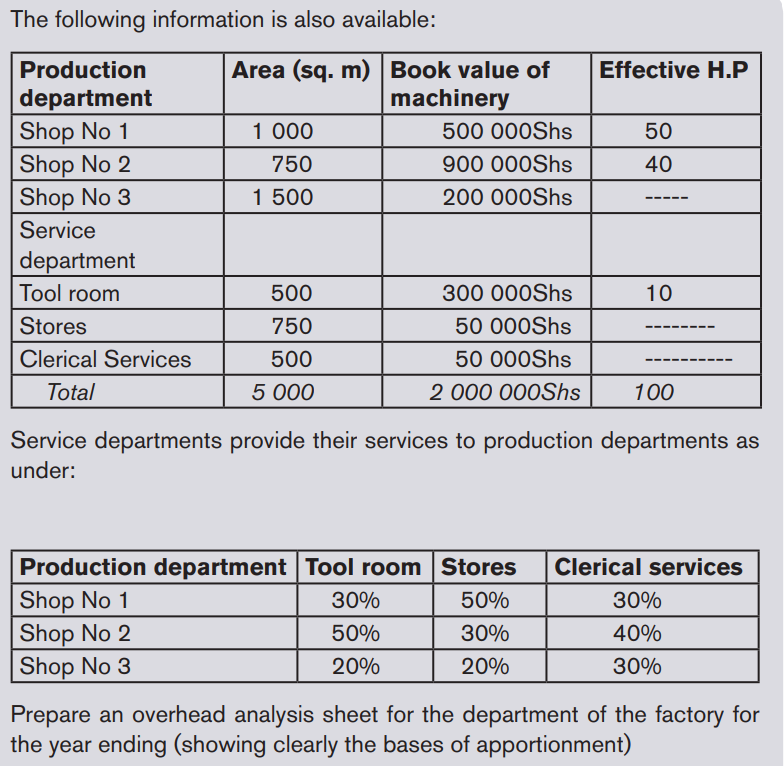
Bibliography
Bouquin, H. (Aout 2006). Comptabilité de gestion. Paris: Economics loterry.
Bwisa, P. H. (2011). Entrepreneurship theory and practice. Kenyan perspective Nairobi
Kenya.: Jomo Kenyatta foundation.
Charles T.Horngren, S. M. (Eleventh Edition, 2003). Cost Accounting (Managerial
Emphasis). Prentice hall.
D, W. (2008). Foundation of Accounting. Nairobi: East African Education
Publisher Ltd.
Drury, C. (2001). Costing-An introduction (Vol. fourth edition ). Oxford: Aden group,.
George Manu, R. N. (2008). Know About Business. Turin, Italy: International Training Centre of the ILO.
Grandguillot, B. &. (2001). Comptabilité analytique (Vol. 4eme edition ). Gualino eduteur.
Grandguillot, B. (2001). Comptabilité analytique . Gualino editeur.
Groves, M. P. (2006). Company accounts,(Analysis,interpretation and understanding) . Etienno.
Icpar . (December 2018). Managing Costs and Cashflows . London :: BBP
Learning Media Ltd.
Icpar. (August 2018,2019). Management Accounting, Certified Accounting
Technician (CAT). BPPLearning Media ltd.
ICPAR. (2018). Principles of Costing / Stage 1. London : BBP Learning Media ltd.
J.Madegowda. (2007). Cost Accounting . Mumbai:: Himalaya Publishing Ltd.
Jourdain, L. D. (2003). Comptabilité Analytique de gestion. 4 eme édition: édition DUNOD.
Kennedy, J.-Y. E. (1998). Lexique bilingue de la comptabilité et de la finance.
ED,POCKET.
Lynne Butel, L. C. (1998). Business functions an active learning approach.
oxford.United Kingdom:: Blacwell Publishers ltd.
Maheshwari, S. M. ( ninth edition 2005). Advenced accountancy. VIKAS
Publishing house: PVT LTD.
Mary, G. (2010). Ways of Thinking About Our Values in Work place”. Giving Voice to Values. Babson College .
MHL. (2004). Production services limited,couventry zrinski. sixth edition.
N.A.Salemi. (2013). Cost Accounting Simplified. Nairobi: Salemi Publication Ltd.
Peter Hagan, A. B. (2003). Higher Business Management . Scotland. UK:: J&L composition.
Sangster, F. &. (2002,2005). Business accounting. ninth edition: Prentice hall.
Ssempija, M. (2011). Entrepreneurship Education for Advance level and
business institutions. Kampala. Uganda: Book shop Africa.
T.Horngren, C. ( 2003). Cost Accounting(Managerial emphasis). eleventh edition : prentice hall.
